

Why create a business plan for a mobile app?
A business plan is the backbone of any enterprise. Many people like to describe it as a map that assists you in getting from point A (idea) to point B (success) without accidentally venturing into point C (financial failure). You can also think of it as a set of guidelines used to devise app development strategies and manage the budget in a responsible and effective way.
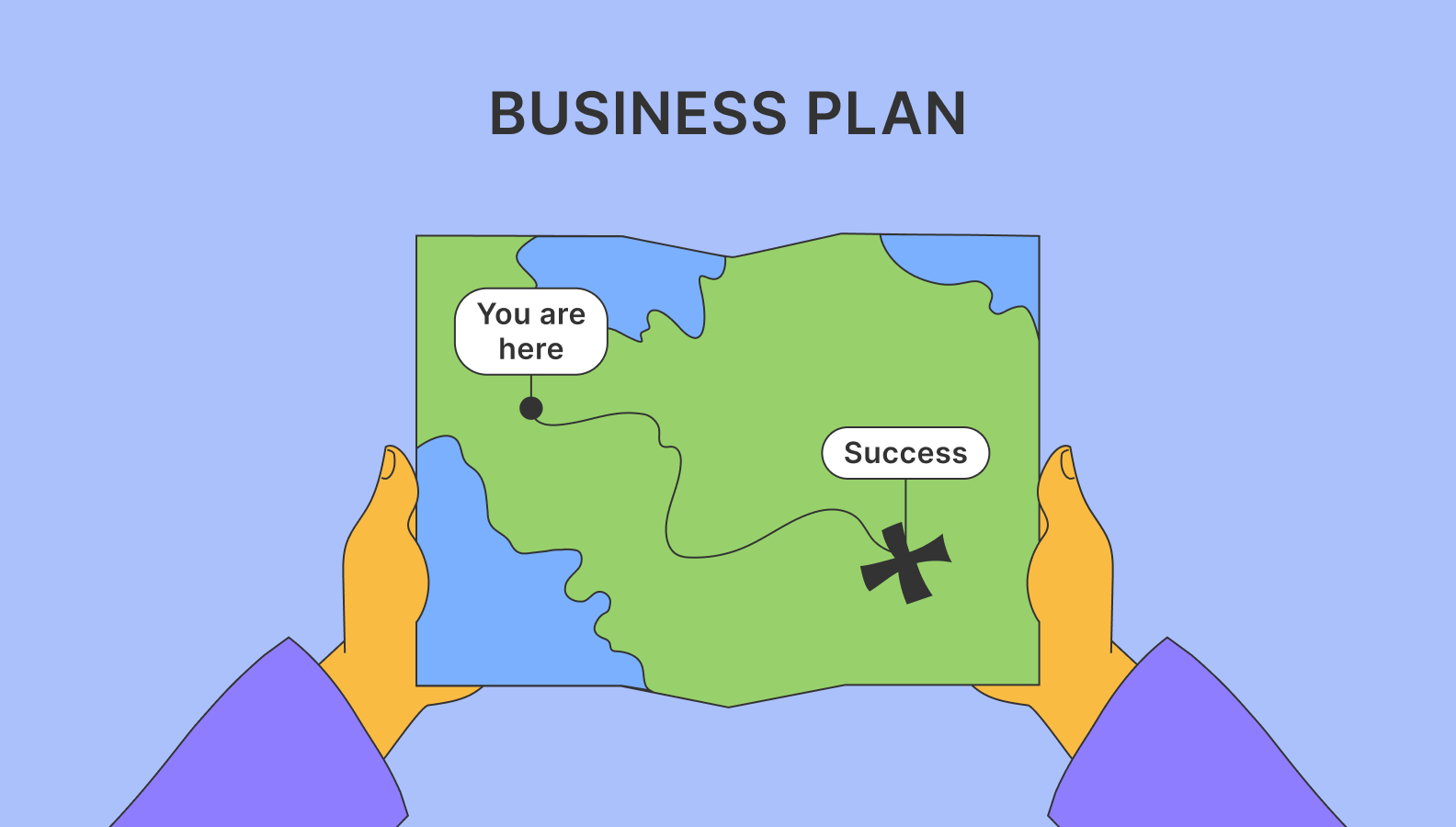
A business plan helps steer the enterprise in the right direction
With a comprehensive mobile app business plan, you’ll be able to use facts and exact calculations to determine the overall direction of the business :
- Gain useful insights into the competition and the current state of the market
- Make informed decisions regarding marketing and communication
- Outline a comprehensive financial strategy
- Evaluate performance and decide on the best allocation of resources
It will also help you to better manage your team :
- Keep everyone in sync and focused on the same target
- Establish clear goals and KPIs, as well as set priorities
And finally, having a business plan is crucial if you want to win over investors and stakeholders.
This is not just our opinion — research confirms the value of writing a business plan. Recently, Palo Alto Software surveyed 2,900 entrepreneurs and discovered that those who create business plans are almost twice as likely to succeed as those who don’t. To measure “success”, Palo Alto used three metrics: business growth, secured investment capital, and secured loans. Find out more information about the study.
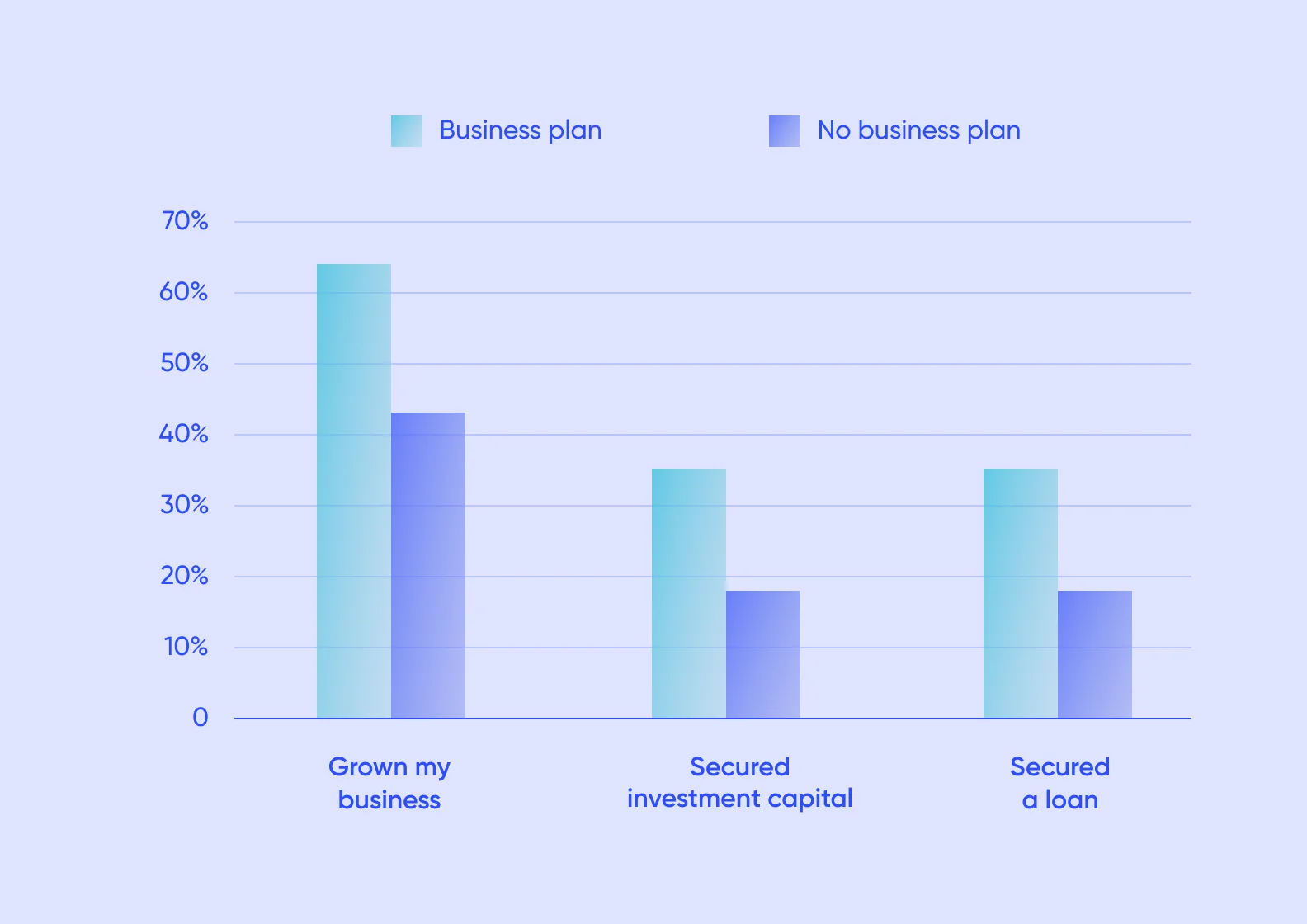
This study clearly shows that a business plan isn’t just a formality
What does a mobile app business plan look like?
A typical mobile app business plan is comprised of 8 sections:
- Executive summary
- Products & services
- Company overview
- Market analysis
- Competitive analysis
- Marketing strategy
- Financial strategy
The whole document usually runs 20 to 40 pages including appendices, but this number largely depends on the scale of your project and your goals. A mobile app business plan for a massive product with international presence may well run into hundreds of pages, while an average startup is unlikely to go over 50 pages.
When writing a mobile app business plan, you should always consider the target audience . Keep everything informative but concise — otherwise, you run the risk of losing the reader’s attention. This is especially important if you’re writing a business plan to raise funds: investors don’t want to have their time wasted. However, it’s crucial not to sacrifice any important information for the sake of hitting a hypothetical 40-page goal.

Things to keep in mind when creating a business plan
Before we dive straight into writing a mobile app business plan, let us give you some tips that will help you along the way.
Before getting started on that Google Doc, ask yourself one question: what are you trying to achieve? The answer to that question defines your priorities. For example, if you’re going to use your mobile app business plan to raise some funds, you’ll want to focus on the reasons you need that money and exactly how you’re going to spend it.
Readability is highly important. This means that the information you present may be complex, but navigating it should be as simple to do as possible. The document should have a coherent structure, with one part logically flowing into another, and clear formatting with headings, subheadings, and enough white space. You can also supplement the numbers you provide with graphs to highlight the most important takeaways .

Pay attention not only to what the document says, but also to what it looks like: with headings, subheadings, and diagrams you create a better document structure
Fact-based estimates
All financial forecasts in your mobile app business plan should be realistic — too much optimism will likely damage your image and lead to lack of trust, not to mention that inflated expectations can ruin the enterprise itself. With that said, all the reports should clearly indicate that there are good prospects for the business and what investors stand to gain if they support the project. If the reports paint a bleak picture, maybe it would be a good idea to test another concept.
External review
Creating a 30-page formal document is a daunting task, and there’s not a single reason why you should face it in solitude. In fact, it’ll be much better if you don’t! As you go, ask other people (preferably experienced) to review it from time to time — this way, you’ll be sure that your plan is logical and makes sense.
How to create a business plan for an app
OK, so we’ve established that a typical startup business plan consists of 8 sections, each equally important. But what exactly do you put in these sections? Let’s find out.
Write an executive summary
An executive summary is a rundown of the whole document. It describes the current situation in the market, establishes the target audience, as well as puts forward the product’s concept, business goals, and financial projections. Put simply, it answers three big questions:
A well-written executive summary can act as a standalone document. In fact, many investors make their initial decisions after reading this part only, so getting it right is crucial if you want to win over important stakeholders.
The secret is to keep everything clear and concise: you want to convey the message that your app idea has huge potential without overwhelming the reader with 5-page long sheets and abstract ideas. Ideally, the executive summary shouldn’t run longer than 2–3 pages.
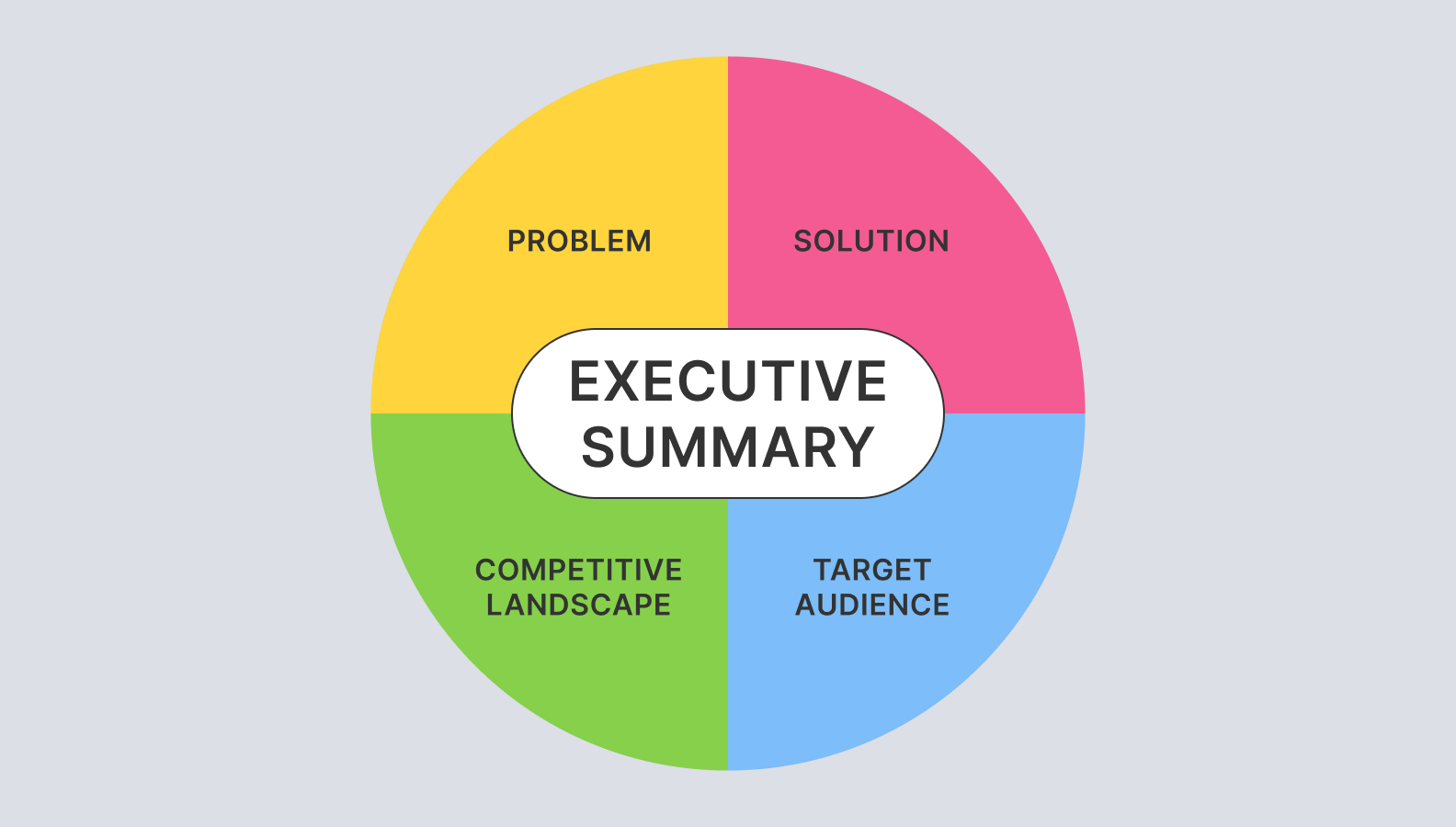
The four key components of an executive summary
Prepare the company overview
In this section of your mobile app business plan, you tell the reader more about your company . Include the following information:
- Mission. It’s a brief explanation why a company exists (take Google, for example: “Our mission is to organize the world’s information and make it universally accessible and useful”)
- Vision. It’s a declaration of the company’s potential impact on the world.
- Corporate values
- History and past achievements (if any)
- Competitive advantages
You should also provide detailed information about the team : the number of people you employ, as well as their qualifications and previous experiences.
We recommend dedicating a separate subsection to your top management and key team members to tell about their background and achievements. This will help convince investors that apart from a great app idea , you also have great people behind it.
Make sure to cover the issue of ownership . Does each partner own an equal portion of the business? If not, how exactly is ownership divided?
Potential investors will definitely want to know this information.
Describe your products & services
This is where you really get into detail about your business idea. First, provide some information about the problem you want to solve. To do this, answer 3 fundamental questions:
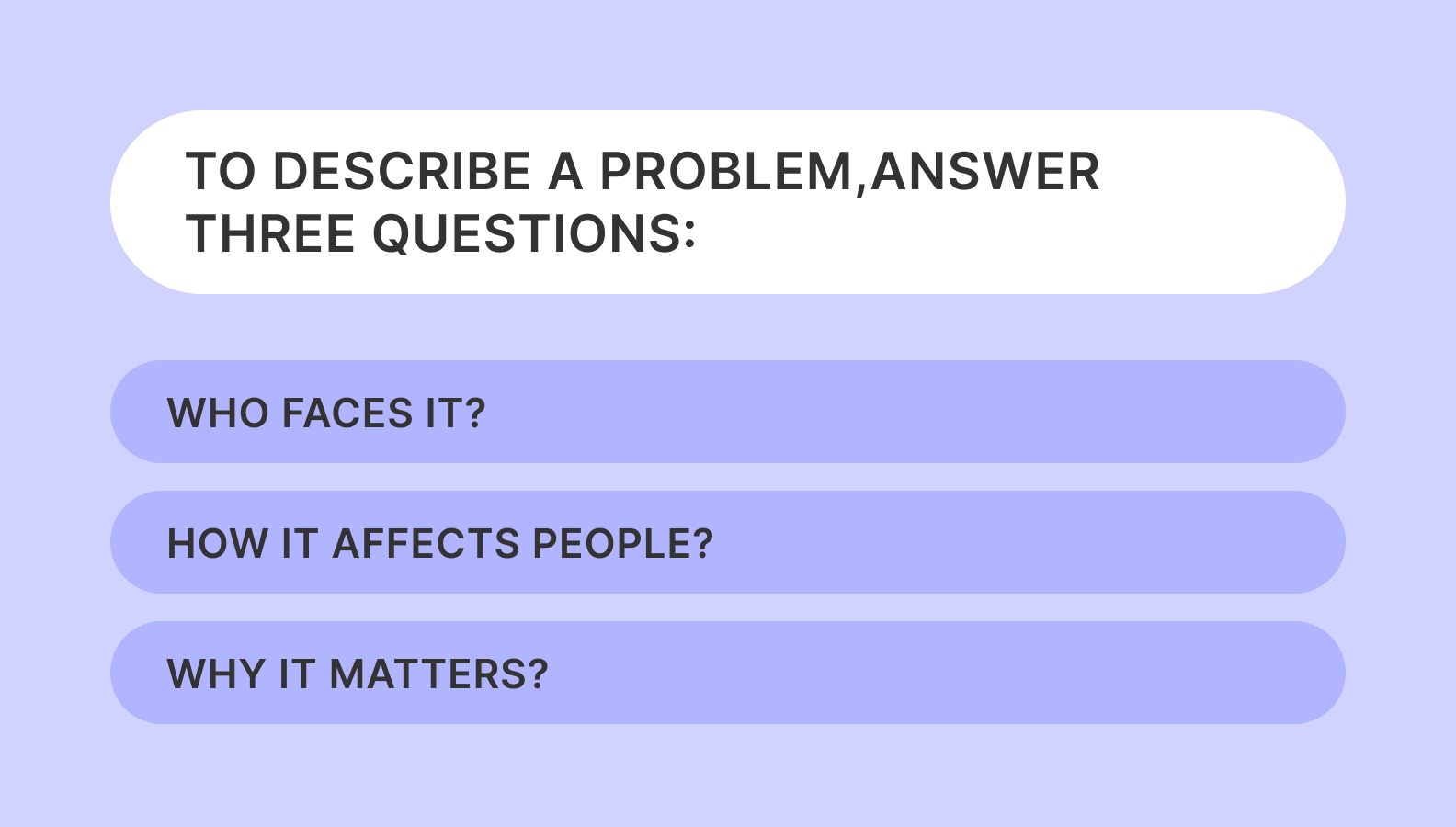
You need to convince stakeholders that your product solves an important problem. Answering these 3 questions will help
You need to convince the reader that this issue is of importance. You can cite some research or statistics, but try not to oversaturate this section with numbers.
Then, you move on to the actual solution and tell how exactly you plan to tackle the problem. This is where you describe your product or service. Give a brief description of the processes involved, but again, avoid flooding the section with too many technical details.
Finally, give a brief examination of your competitors and highlight how exactly your product is going to surpass the already existing options.
Conduct an audience analysis
In the audience analysis part, you evaluate the current state of play and give justified reasons why you believe your product has a place in the competitive environment. This section includes queries into the target market , customer behavior, current trends , and several important metrics: cost per acquisition (CPA), total available market (TAM), service available market (SAM), and service obtainable market (SOM).
Try to be as specific as possible when talking about the target audience. Consider building customer personas — generalized representations of the people who are going to be interested in your product. To create a persona, conduct several in-depth interviews and organize the obtained information into the following blocks:
- Demographic information — age, gender, income, place of living
- Psychographic information — goals, challenges, motivation, personality type
- Professional activities — qualifications, current job, past job experiences
- Interests and personal tastes
- Needs — why would they need your product?
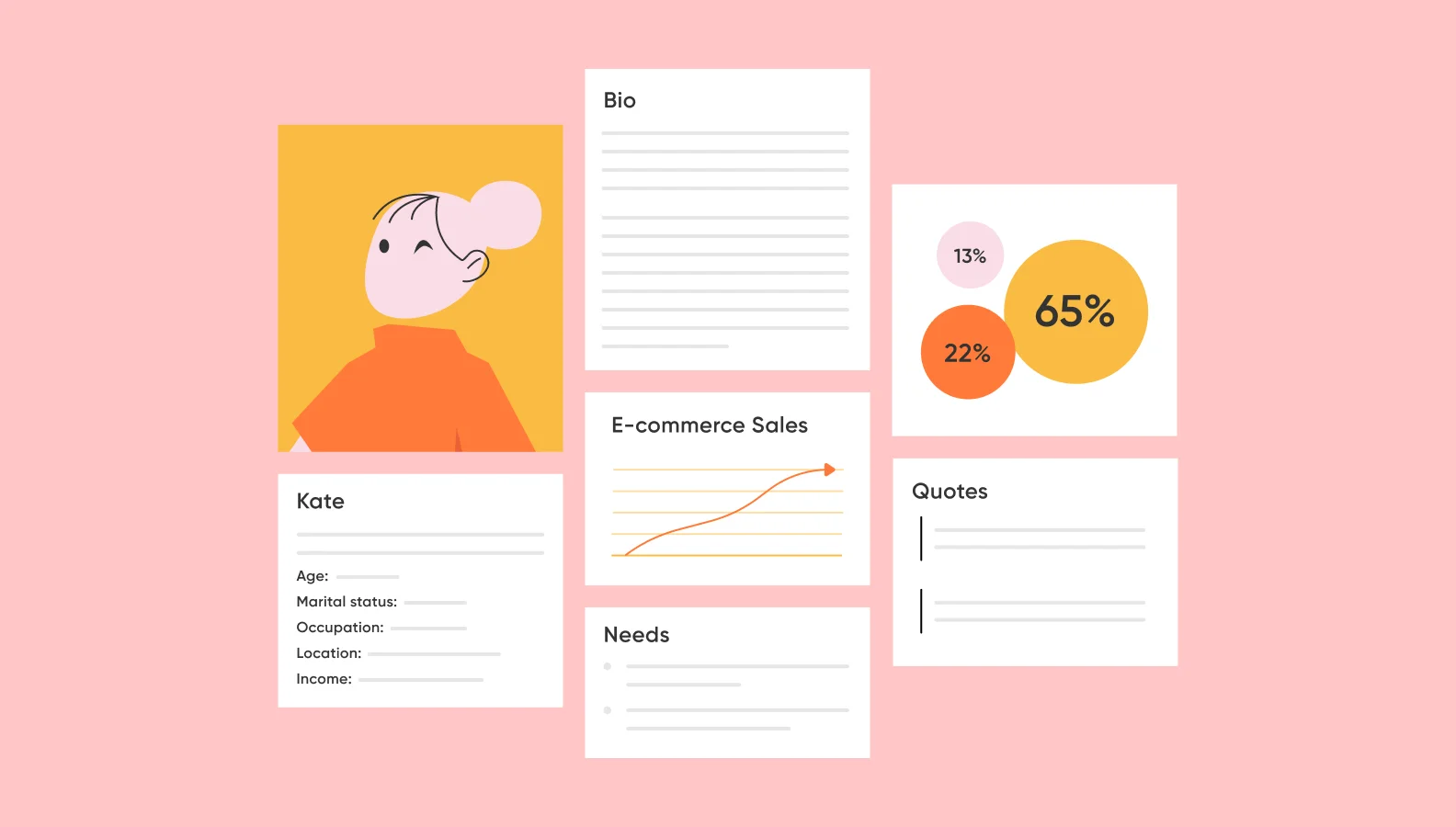
This is an example of what a customer persona sheet may look like
Carry out a competitive analysis
We’ve already touched on the subject of competition in the executive summary and the products & services section. This time, however, you dive in much deeper and provide a detailed analysis of your direct and indirect competitors, answering the following questions: What are their strengths & weaknesses? What marketing strategies do they use? What is their pricing?
Once you’ve described the competitive landscape, it’s time to show why your product is going to be superior. One way to do this is by conducting a SWOT analysis.
SWOT stands for Strengths, Weaknesses, Opportunities, and Threats. It actually doesn’t need to be any more complicated than this: the section names speak for themselves.
In Strengths , you state the advantages that separate you from the competition.
In Weaknesses , you focus on the things your product lacks and resource limitations.
In Opportunities , you describe the prospects for your business, as well as the external factors that can have a positive influence on the enterprise (rising demand, changing attitudes, etc.).
And finally, in Threats , you cite any external factors that can have a negative influence on the enterprise (bad media coverage, changing regulations, and so on).

Conducting a SWOT analysis is important for proper positioning
Outline your marketing strategy
This is where you describe three important things. First, you need to cover the channels you’re going to use to reach your target segments — for example, social media, target ads, or physical ads. Then, you specify the amount of money you plan to spend on marketing activities, and finally, the KPIs you’re going to use to evaluate efficiency.
Describe your financial strategy
We’ve reached the core of any mobile app business plan. A startup needs a financial strategy much like a ship needs an engine or a mast, and this section is where all the crucial number crunching is happening — akin to an engine room. Let’s look at what you need to include in this part of the plan:
- A revenue model, also known as a monetization strategy
- A monthly sales and revenue forecast for the first 12 months and annual projections for the next 3–5 years
- An income statement, which outlines annual net profits or losses
- A cash flow statement, which shows how much money the company operates with in total
- A balance sheet, which lists assets, liabilities, and equity in your company
- Funds needed (how much money you need to gain in investments)
- Use of funds (how exactly you’re going to use gained investments)
Exit strategy
You need an exit strategy if you plan to sell your company some time in the future. Having this subsection is crucial if you want to draw the attention of venture capitalists and angel investors. The most common exit strategies are acquisition, initial public offering (IPO), and management buyout.
Make sure you understand all these terms correctly and can confidently use them when pitching — investors are more likely to trust an entrepreneur who knows their numbers .
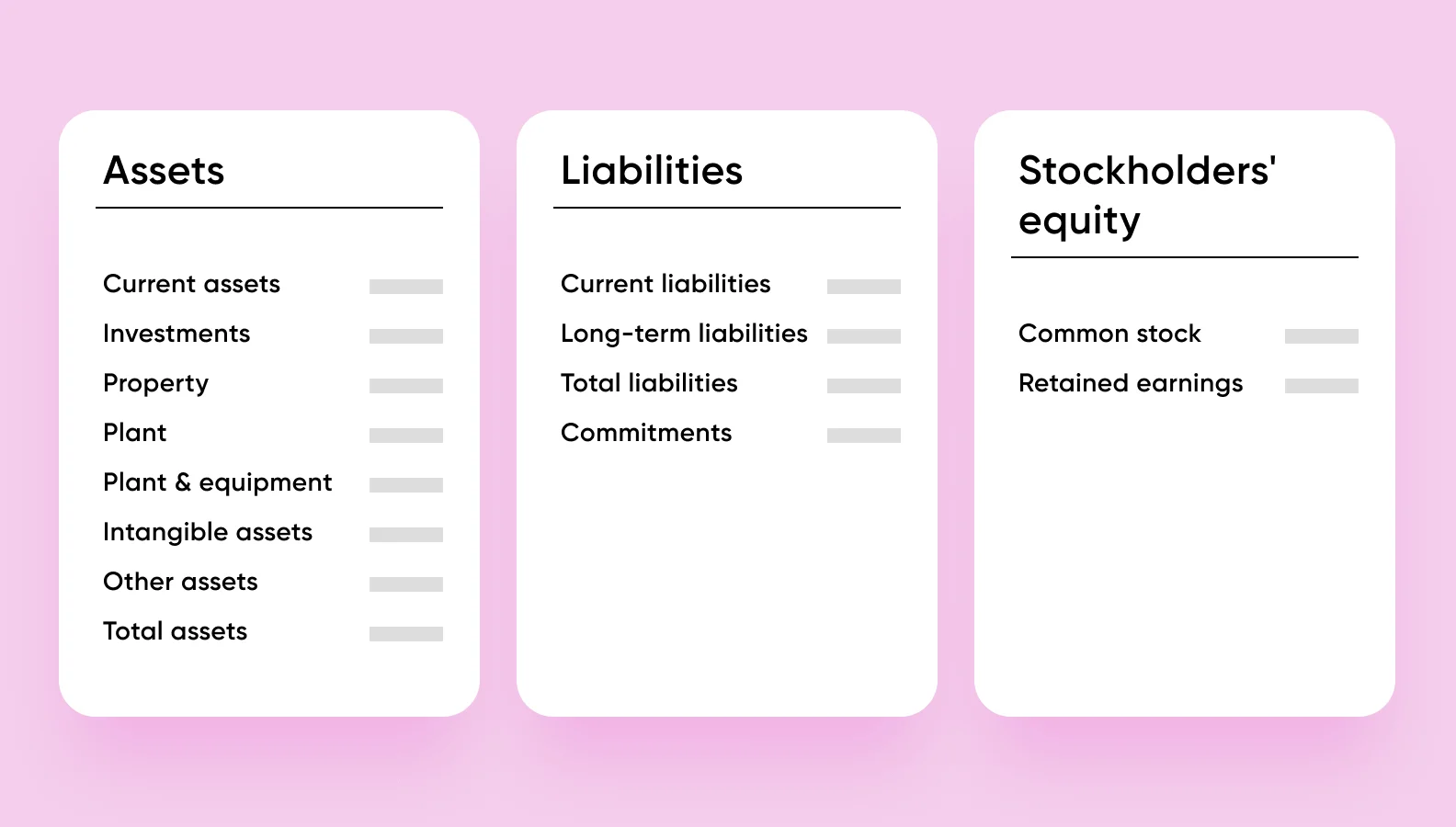
A typical balance sheet lists a hefty number of assets, liabilities, and stockholders’ equity. Complicated, but important!
Compile an appendix
This isn’t a mandatory section — you can omit it altogether, if you want. However, it might be a good place for charts, tables, legal notes, licenses, permits, detailed studies, illustrations of your product, and all other miscellaneous pieces of information that can seem a little out of place if you include them in any of the primary sections of your mobile app business plan.
How to fund your app startup
We’ve compared the main sources of funding in the table below.
And now a bit more about every source of funding.
Bootstrapping
Bootstrapping is just a fancy word for using your own money. Unsurprisingly, this is the best way to fund a startup: there are no loans, no interest rates, no bonds, and no contractual obligations. If the idea fails, you’ve got no one to answer to (well, apart from your wallet) — and if it takes off, you get to keep more of the returns.
Personal networks
The second most desirable source of funding. A personal network is your friends and family — or, in other words, people you have a close emotional connection with. Persuading them to fund your mobile app development project will be much easier than pitching the idea to complete strangers. And in case the startup fails, they will likely give you enough time to recuperate and pay them back.
Crowdfunding
Crowdfunding means turning directly to end-users to get funding for the project, usually via the Internet. This method is very popular among smaller, niche-specific enterprises, but it doesn’t mean that large-scale ventures have nothing to gain from it — some businesses (including app development companies) manage to raise millions of dollars on Kickstarter and other crowdfunding platforms. Pros: you get to build a customer base super early. Cons: failure to deliver the promised product usually leads to court, unless you have exceptionally good PR.
Angel investors
Angel investors are wealthy individuals who use their own money to support business ideas they find promising. They usually invest in budding projects in the seed stage, when the risks are at their all-time high — hence the name. But here’s the catch: in return, they get a share in the business, or at least a convertible bond. This means that if the idea takes off, they’ll gain a certain level of control over your company and become entitled to a share of your income.
Startup contests at IT events
The tech industry is packed with conferences that can define the future of your app startup. Many of these events host startup contests with formidable prize funds reaching millions of dollars. Winning a contest like this is a quick way to get a solid influx of money early on — but, of course, there are no guarantees, and the competition is fierce.
Bank loans are your last resort. We recommend using this option only if every other one has failed. Why? Tons of paperwork, strict deadlines, and unfavorable interest rates make it poorly suited for fledgling startups — and don’t forget that failure to return the money on time may lead to severe consequences. It’s much safer to take a loan once you have an established company, but definitely not when you’re just starting out.
Monetization strategies
Deciding how your product is going to make money is one of the most important steps to take when developing a mobile app . There are multiple monetization strategies available, each of them suitable for specific types of businesses. Let’s look at some of the most popular ones.
One-time purchase
This strategy is based on the “pay once, use forever” principle. With this business model , you make your app available only after the customer purchases it, either before or after the download. This model can generate substantial revenue, but only if you offer unique features that are highly valuable to the user — otherwise they will most probably turn to free alternatives. Very common among productivity apps and games.
In-app purchases
The app and its basic functionality are free to use, but users can pay to access more advanced features or nice-to-have bonuses. The most famous examples of this model are probably games like Clash of Clans or Fortnite — you can play all you want for free, but if you want to progress faster or get in-game benefits , you can buy skins and in-game currency. Very lucrative if applied properly, but is mainly limited to the entertainment segment.
Subscriptions
Users can download the app for free, but to enjoy the full range of its features they’ll have to buy a subscription. Usually, this business model includes multiple options : for example, you can subscribe for a month, 6 months, or a year. To increase conversion, developers often offer trial periods that allow customers to fully experience all the advantages of the product before choosing to commit.
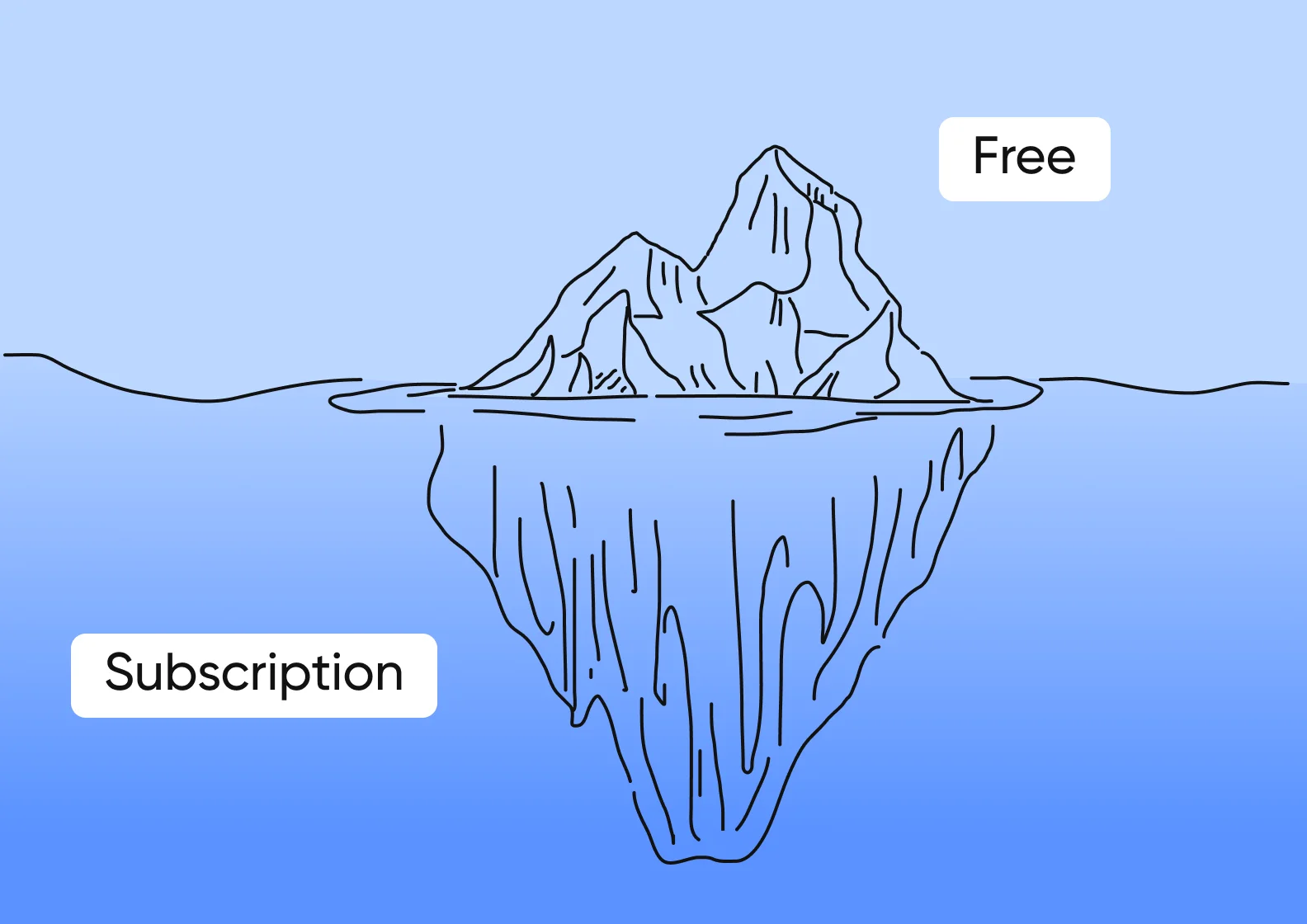
This strategy is also known as the freemium business model
Talentum , an app we developed a couple years ago, used a subscription-based revenue model. Users could order food from their favorite chefs without any paywalls, but there was always an option to upgrade their accounts and unlock the full range of features.
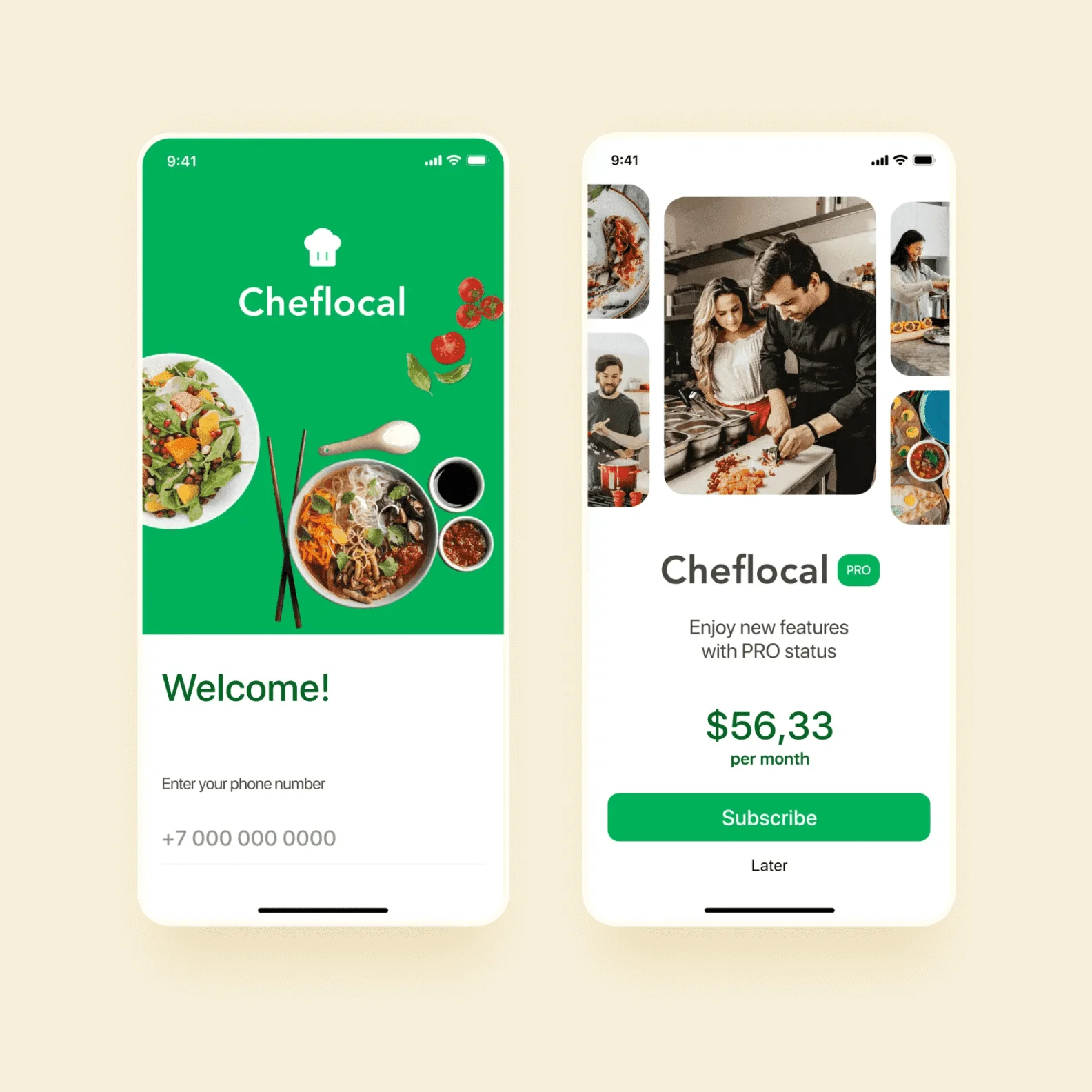
Talentum, the app that connects customers with top-notch freelance chefs
A fitness app we developed uses a similar system, but on the vendor side: coaches can buy higher-level subscriptions to take on more customers.
The subscription model is also used in dating applications such as Tinder, Bumble, and Hinge. Users that subscribe receive profile boosts, unlimited likes, advanced filters, and other benefits. Check out our article if you want to know more about dating app monetization strategies .
The most popular business model , which is also easy to combine with others. In this model, you use the app to run ads to generate revenue. There are several formats you can choose from, with some of them being more intrusive (like interstitial ads), and some less (like native or banner ads).
Many developers use this strategy together with a subscription-based model: the free version of the app is monetized using ads, while buying a subscription removes this annoyance and grants other benefits.

Keep in mind that the more intrusive the ad, the less users are going to like it
Commissions
Very handy for marketplaces of all sorts: if a vendor uses your app to sell their goods, you charge a commission for every sale they make at a fixed percentage. Alternatively, you can opt for charging fixed flat fees, but the first option is more widespread. The more vendors you attract to the platform, the heftier your revenue will be.
What is a business plan for a mobile app?
A mobile app business plan is a set of guidelines used to devise comprehensive app development strategies and manage the budget in a responsible and effective way.
How long does it take to create a business plan for an app?
Creating a mobile app business plan may take anywhere from a couple of weeks to a month.
Is it possible to create an application without a business plan?
Yes, it’s entirely possible, but in this case you’ll need a reliable partner to help with refining the concept and turning it into a cool product on the go. If you have an idea for a mobile app, reach out to us — we’ll help bring it to life with low development costs.

Gamification in Banking: features, benefits & costs
- Fintech apps

How To Start a Fintech Company: All You Need to Know

How to Create a Neobank From Scratch: must-have features & costs
Thanks for your inquiry. It usually take up to 24 hours to get back with reply.
Wanna schedule an online meeting?

Mobile App Business Plan Template
Writing a successful business plan for your mobile app business + template.
If you’re looking to start or grow a mobile app business, you need a business plan. Your plan will outline your business goals and strategies, and how you plan on achieving them. It will also detail the amount of funding you need, and if needed, present a case to investors and lenders regarding why they should invest in your business.
In this article, we’ll explain why you should invest the time and energy into creating a mobile app business plan, and provide you with a mobile app business plan template that includes an overview of what should be included in each section.
Why Write a Business Plan For a Mobile App Business?
There are many reasons to write a business plan for a mobile app company, even if you’re not looking for funding. A business plan can help you see potential pitfalls in your business strategy, as well as identify opportunities you may not have considered. It can also help you track your progress and adjust your plans as needed.
That said, if you are looking for funding, a business plan is essential. Investors and lenders want to see that you have a solid understanding of your industry, your customers, and your competition. They also want to know that you have a realistic view of your financial situation and how much money you’ll need to get started.
How To Write a Business Plan For a Mobile App Business
While every business plan is different, there are 10 essential components that all mobile app business plans should include:
Executive Summary
Company description, industry analysis, customer analysis, competitor analysis, marketing plan, operations plan, management team, financial plan.
Keep in mind that you’ll need to tailor this information to your specific type of mobile app business, but these 10 components should be included in every plan.
The executive summary is the first section of your business plan, but it’s often written last. This is because it provides an overview of the entire document.
In the executive summary, briefly explain what your business does, your business goals, and how you plan on achieving them. You should also include a brief overview of your financial situation, including how much money you’ll need to get started.
For organizational purposes, you could create headings for each main section of your business plan to highlight the key takeaways.
For example, your mobile app executive summary might look something like this:
Company Overview
[Insert Company Introduction / Short Summary]
Business Goals
[Insert Business Goals & How You Plan To Achieve Them]
Industry Overview
[Insert Industry Statistics on the Size of Your Market]
Competition
[Insert Overview of Competitors & Your Competitive Advantage]
[Insert Information About The Marketing Strategies You Will Use To Attract Clients/Customers]
Financial Overview
You can add and/or remove sections as needed, but these are the basics that should be included in every executive summary.
The next section of your mobile app business plan is the company description, where you’ll provide an overview of your business.
Include information about your:
- Company History & Accomplishments To Date
Mission Statement and/or Company Values
With regards to the company overview, here you will document the type of mobile app company you operate. For example, there are several types of mobile app companies such as:
- Developers (those who design and build apps)
- Publishers (those who market and sell apps)
- Enablers (those who develop the technology or platform that powers apps)
For example, a mobile app company description might look something like this:
We are an X type of mobile app company.
Company History
If an existing company: Since launching, our team has served X customers and generated $Y in revenue.
If startup: I conceived [company name] on this date. Since that time, we have developed the company logo, found potential space, etc.
This is just an example, but your company description should give potential investors a clear idea of who you are, what you do, and why you’re the best at what you do.
The next section of your business plan is the industry analysis. In this section, you’ll need to provide an overview of the industry you’re in, as well as any trends or changes that might impact your business.
Questions you will want to answer include:
- What is the overall size of the mobile app industry?
- How is the industry growing or changing?
- What are the major trends affecting the mobile app industry?
- Who are the major players in the mobile app industry?
For example, your industry analysis might look something like this:
The size of the mobile app industry is expected to reach $XX billion by 20XX.
It is currently growing at an annual rate of XX% and is predicted to continue this growth in the future.
Major trends affecting the industry are:
– The continued growth of global smartphone usage
– The ever-changing landscape of the app store algorithms
– The rise of in-app purchase models
– The popularity of subscription-based models
How We Fit Into The Industry
This is just an example, but your industry analysis should give potential investors a clear idea of the overall industry, and how your company fits into that industry.
The next section of your mobile app business plan is the customer analysis. In this section, you’ll need to provide an overview of who your target customers are and what their needs are.
- Who are your target customers?
- What are their needs?
- How do they interact with your industry?
- How do they make purchasing decisions?
You want a thorough understanding of your target customers to provide them with the best possible products and/or services. Oftentimes, you will want to include the specific demographics of your target market, such as age, gender, income, etc., but you’ll also want to highlight the psychographics, such as their interests, lifestyles, and values.
This information will help you better understand your target market and how to reach them.
For example, your customer analysis might look something like this:
Target Market & Demographics
The demographic (age, gender, location, income, etc.) profile of our target mobile app customer is as follows:
– Age: 18-24
– Gender: Male
– Location: Urban
– Income: $50,000-$100,000
Psychographics
Our core customer interests are as follows:
– Technology: Mobile apps, smartphones, new technology adapters
– Music: Listening to music and going to concerts
– Lifestyle: Progressive and open-minded
– Values: Innovation, creativity and self-expression
– Gaming: Mobile and online gaming
In summary, your customer analysis should give potential investors a clear idea of who your target market is and how you reach them.
The next section of your business plan is the competitor analysis. In this section, you’ll need to provide an overview of who your major competitors are and their strengths and weaknesses.
- Who are your major competitors?
- What are their strengths and weaknesses?
- How do they compare to you?
You want to make sure that you have a clear understanding of your competition so that you can position yourself in the market. Creating a SWOT Analysis (strengths, weaknesses, opportunities, threats) for each of your major competitors helps you do this.
For example, your competitor analysis might look something like this:
Major Competitors
XYZ Company is our major competitor. Its offerings include this, this and this. Its strengths include XYZ, and its weaknesses include XYZ.
Competitive Advantage
Your competitor analysis should give potential lenders and investors a clear idea of who your major competitors are and how you compare to them.
The next section of your business plan is the marketing plan. In this section, you’ll need to provide an overview of your marketing strategy and how you plan on executing it.
Specifically, you will document your “4 Ps” as follows:
- Products/Services : Here is where you’ll document your product/service offerings.
- Price : Detail your pricing strategy here.
- Place : Document where customers will find you and whether you will use distribution channels (e.g., partnerships) to reach them.
- Promotion : Here you will document how you will reach your target customers. For instance, mobile app businesses often reach new customers via promotional tactics including online ads (e.g., Google AdWords), PR, social media marketing, etc.
For example, your marketing plan might look something like this:
Products/Services
We offer the following products/services:
We will use a premium pricing strategy to establish ourselves as the highest quality brand.
We will serve customers directly and through a partnership with XYZ company.
As you can see, your marketing plan should give potential investors a clear idea of your marketing objectives, strategies, and tactics.
The next section of your business plan is the operations plan. In this section, you’ll need to provide an overview of your company’s day-to-day operations and how they will be structured.
- What are your company’s daily operations?
- How are your company’s operations structured?
- Who is responsible for each task?
Your operations plan should be detailed and concise. You want to make sure that potential investors have a clear understanding of your company’s day-to-day operations and how they are structured.
You will also include information regarding your long-term goals for your operations and how you plan on achieving them.
For example, your operations plan might look something like this:
Daily Operations
Our company’s daily operations include XYZ.
Operational Structure
Our company is structured as follows:
- Department 1
- Department 2
- Department 3
Each department is responsible for XYZ tasks.
Long-Term Goals
Our long-term goals for our operations are to achieve the following over the next five years.
Date 1: Goal 1
Date 2: Goal 2
Date 3: Goal 3
Date 4: Goal 4
Your operations plan should give readers a clear idea of your company’s day-to-day operations, how they are structured, and your long-term goals for the company.
The next section of your business plan is the management team. In this section, you’ll need to provide an overview of your management team and their experience.
- Who is on your management team?
- What are their qualifications?
- What is their experience?
Your management team ideally includes individuals who are experts in their respective fields. You want to make sure that lenders and investors have a clear understanding of your management team’s qualifications and experience, and feel they can execute on your plan.
For example, your management team might look something like this:
Our management team is comprised of the following X individuals with the following experience.
Team Member 1:
Team member 1’s qualifications and experience include XYZ.
Team Member 2:
Your management team should give potential lenders and investors a clear idea of who is on your team and how their qualifications and experience will help your company succeed.
The final core section of your business plan is the financial plan. In this section, you’ll need to provide an overview of your company’s financials.
- What are your company’s projected revenues?
- What are your company’s projected expenses?
- What is your company’s projected growth rate?
- How much funding do you need and for what purposes? For example, most startup mobile app businesses need outside funding for things like initial app development costs, marketing, and operations.
Your financial plan should give potential investors a clear understanding of your company’s financials. While you may include a summary of this information in this section, you will include full financial statements in the appendix of your business plan.
For example, your financial plan might look something like this:
Our company’s projected revenues over the next five years are $XYZ.
Expenses & Net Income
Our company’s projected expenses and net income over the next five years are $XYZ.
Uses of Funding
This is just an example, but your financial plan should give potential investors a clear idea of your company’s financial projections.
The final section of your business plan is the appendix. In this section, you’ll need to provide any additional information that was not included in the previous sections.
This may include items such as:
- Full financial statements
- Resumes of key management team members
- Letters of reference
- Articles or press releases
- Marketing materials
- Product information
- Any other relevant information
By including this information in the appendix, you are allowing potential investors and lenders to learn more about your company.
In summary, writing a mobile app business plan is a vital step in the process of starting and/or growing your own business.
A business plan will give you a roadmap to follow. It can also help you attract investors and partners.
By following the tips outlined in this article, you can be sure that your business plan will be effective and help you achieve your goals.

1777 SW Chandler Ave. Suite 267 Bend, OR 97702
Business Plan Services Business Plan Writing Business Plan Consultants
- Case studies
How to Write a Business Plan for a Mobile App Startup?
Anton Baryshevskiy
Head of Business Development, Co-Founder

Head of Business Development
Get your project estimation!
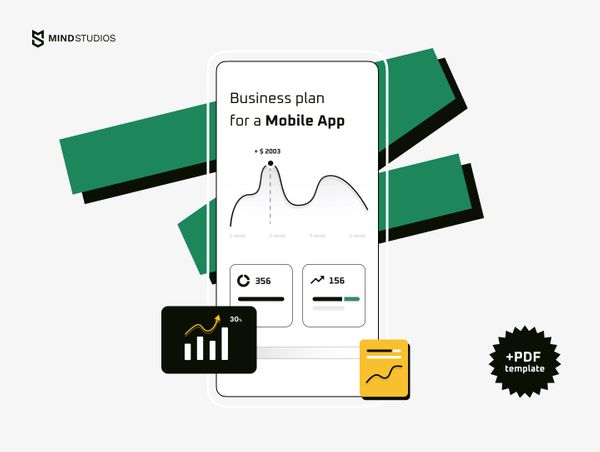
If you’re on the threshold of launching your mobile app startup, there are numerous things you need to be concerned with: workload, core concept, budget, product implementation area, employees… You need to rightly put all key elements of this puzzle together to provide a clear roadmap for your project — that is, to compile a business plan for mobile app development.
We at Mind Studios know how to make a business plan for an app. Here, you'll find a complete guide to creating a business plan. Also, we’ve added our template to help all stakeholders and investors have a clear and most importantly, equal understanding of your startup idea. So if you don't know how to plan an app yet and where to start, let's find out more about it.
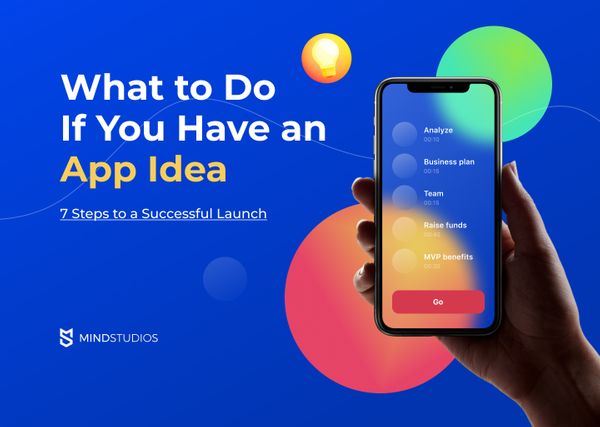
A business plan is a guide that turns your ideas into action
As a rule, you should start with visualizing the project and formulating its key ideas. They will later become the basis of your business plan.
Another vital component of developing your project is writing a product requirements document (PRD) for your app. It consists of three sections: business requirements, user requirements, and software system requirements . The business plan is, actually, a component of the PRD, namely the business requirements part.
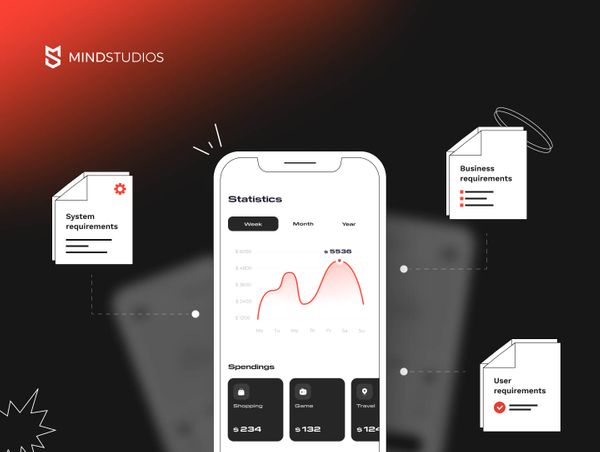
All the preceding processes, such as developing a project vision, core ideas, and concepts, creating an app development plan, and drafting a PRD, allow all stakeholders to be on the same page as the startup's founder.
In this post, we’ll go through how to write a business plan for an app startup.
Some statistics
Still not sure if your startup needs a business plan? Numerous studies back up the value of having a well-thought-out business plan for companies on different stages of their business journeys.
According to one study that involved 3,000 company owners from diverse fields, those with business plans were almost twice as likely to succeed as those who didn’t. Furthermore, such strategic-planning companies were more effective in attracting investment or securing loans.
You can find more detailed information in the diagram below:

If your way is developing a mobile application
As of 2021, people have made 230 billion downloads of mobile applications, up by 63% than in 2016. Everyone appears to require mobile solutions these days, so your startup has a lot of room for imagination. You can choose from a wide range of mobile app types. To name a few, it could be a travel, event planner (here's an event app development guide), money management, social networking, or fitness app.
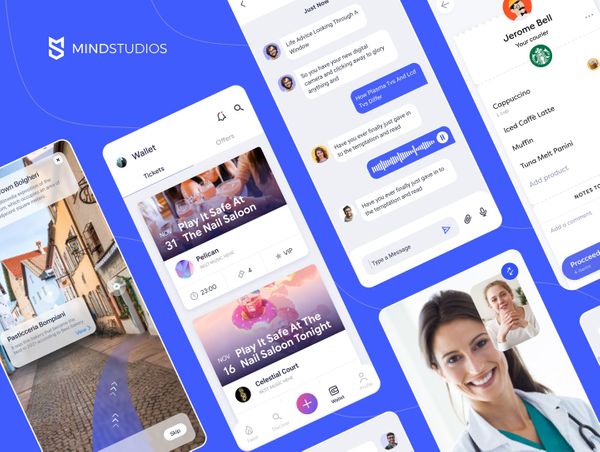
No matter which one you decide to create, a pre-written mobile app business plan can help you seamlessly go through the mobile app development process with its four fundamental stages : discovery, idea validation , design, and actually, development.
A goal without a plan is just a wish
There is a plethora of mobile applications these days. It means, though, that there are hundreds of almost identical apps in each category. Attracting users becomes a task of utmost importance.
Chad Mureta, an app tycoon, says that a developer’s profit directly depends on their knowledge of what’s interesting to the user; that is, to create a successful and profitable application, a developer should think like a user .
Creating a mobile app business plan template based on thorough user analysis will help you explain your business idea to stakeholders. Also, you’ll see a path to a product-market fit. To make that happen, you should determine what your target audience wants, needs, likes/dislikes in competitors’ apps, and tends to expect from using your app.
Therefore, identifying your target audience preferences should be your priority, as it is one of the main drivers of your startup.
Understanding the market is the key to success
The author of the bestseller 4 Steps to Enlightenment. Strategies for creating successful startups , Steve Blank, suggests that very few people understand where their market is. The writer believes it is almost impossible to launch a thriving startup without analyzing the market it’s going to enter.
Before you start writing a business plan, it’s crucial to figure out not only the degree of public interest in your product but also the level of competition in the market you’re going to enter.
Thanks to the preparatory analysis of your rivals and potential app users, you’ll be able to flawlessly identify your product’s objectives, advantages, and unique value proposition (UVP). This will also help you form the basis of a proper business plan.
Review your business plan annually
Steve Blank claims that a business plan is static in contrast to a business model, which is dynamic. A business plan appears to be stable by definition: that’s a document created once and rarely revised after adoption.
But in our quick-to-change world, do you believe there’s anything that could remain static? Especially in terms of business? Investopedia , for example, shares an opposite to Steve Blank’s statement: A business plan should evolve in tandem with a company’s growth.
We at Mind Studios adhere to the last approach and recommend you go through your business plan for an app at least once every year . It will allow you to respond to changes in your users’ demands and assess what goals you have achieved and which ones you still need to accomplish.
Moreover, refreshing a business plan will enable you to keep your finger on the pulse of your startup’s current and upcoming financial needs and, therefore, help you develop efficient strategies to attract investments. Consider it a dynamic document that adapts to your startup’s development path.
Why should you make a business plan for apps?
In addition to helping you get your startup off the ground, a viable business plan acts as an indicator for investors to consider it as a potential asset.
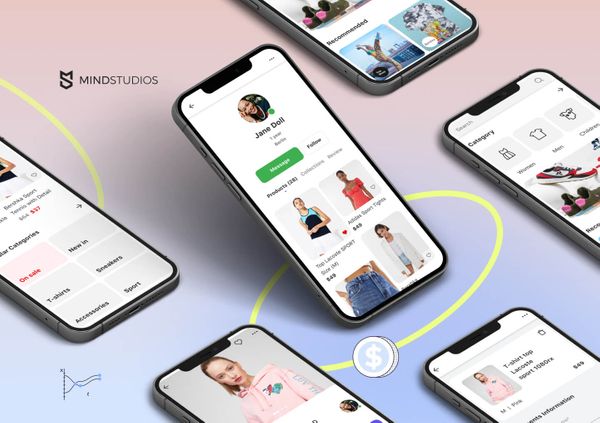
Let’s summarize the main reasons why your mobile app startup needs a business plan:
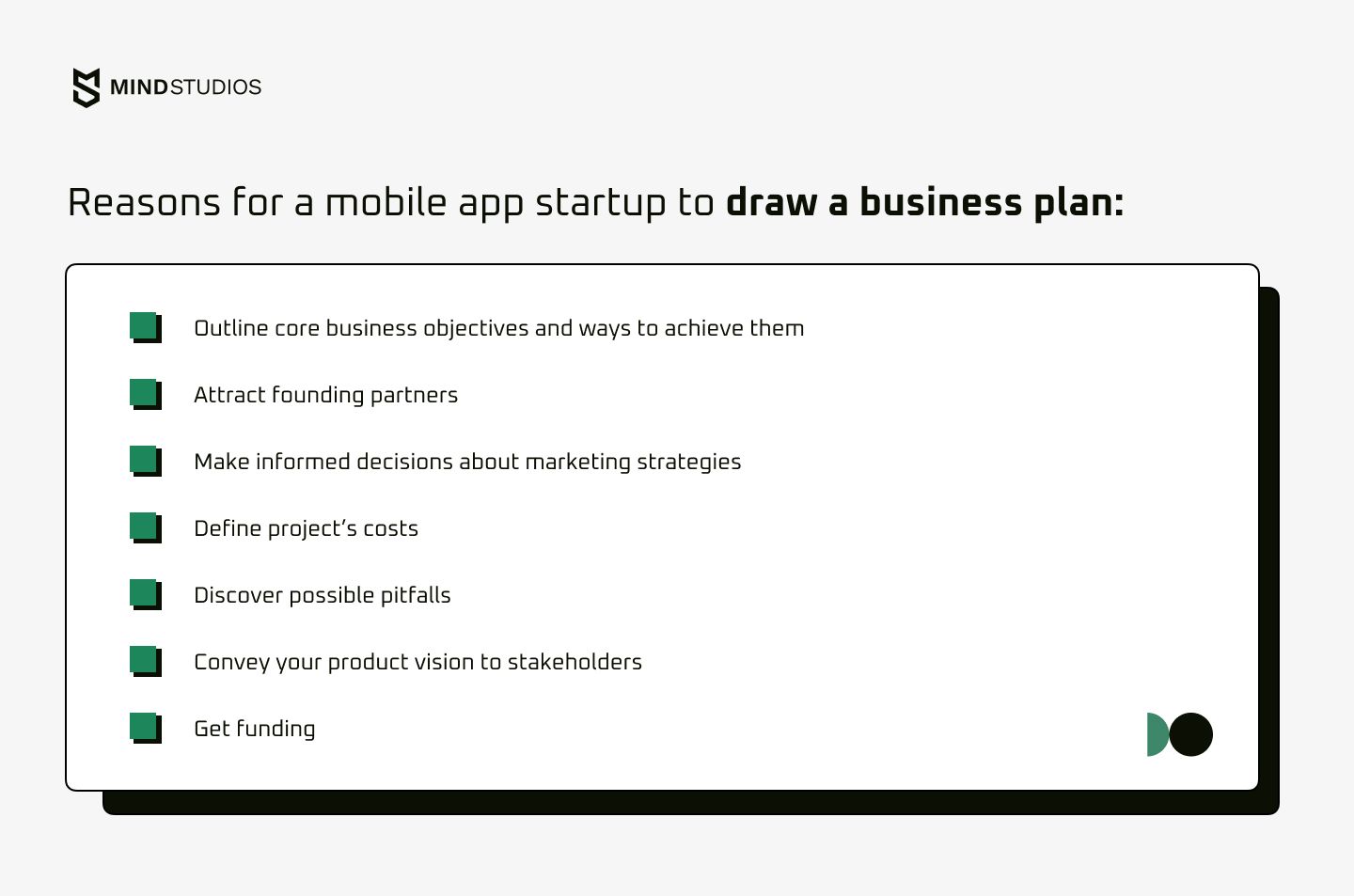
Both startups and established businesses need business plans, the content of which will depend on the company’s primary goal.
To attract partners, startup owners tend to use a business model canvas — a more flexible model of the traditional business plan. It can seamlessly adapt to the iterative nature of tech startup development, yet providing core information about a project.
However, the business model canvas for an app does not guarantee 100% success; it can only be one of the components that will help your project attract investment. A comprehensive business plan with a detailed description of your company and mobile app, justification of funds use, and coverage of all legal concerns is what can instill trust in all stakeholders of your project.
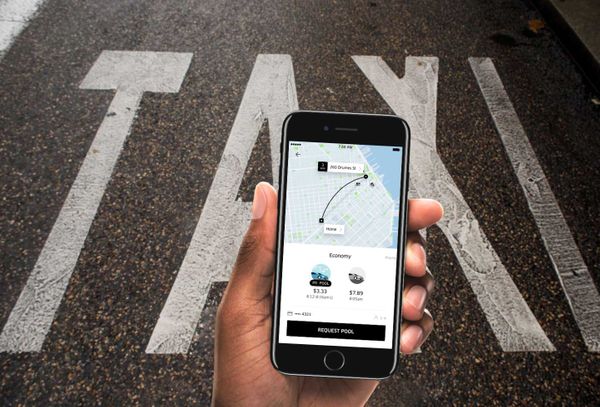
Is there a difference between a business plan for a mobile app and other software?
There are obvious distinctions between mobile applications, websites, and other software solutions. They significantly contrast in marketing approach, monetization strategy, and feature sets. As a result, business plans for these solutions will differ as well.
A traditional software development business plan might be structured similarly to a business strategy for a mobile app company. However, any document that presents the firm and its product will be distinctive in content. It is reasonable since each project is unique, with its own goals and target audience.
What does a business plan for a mobile app look like?
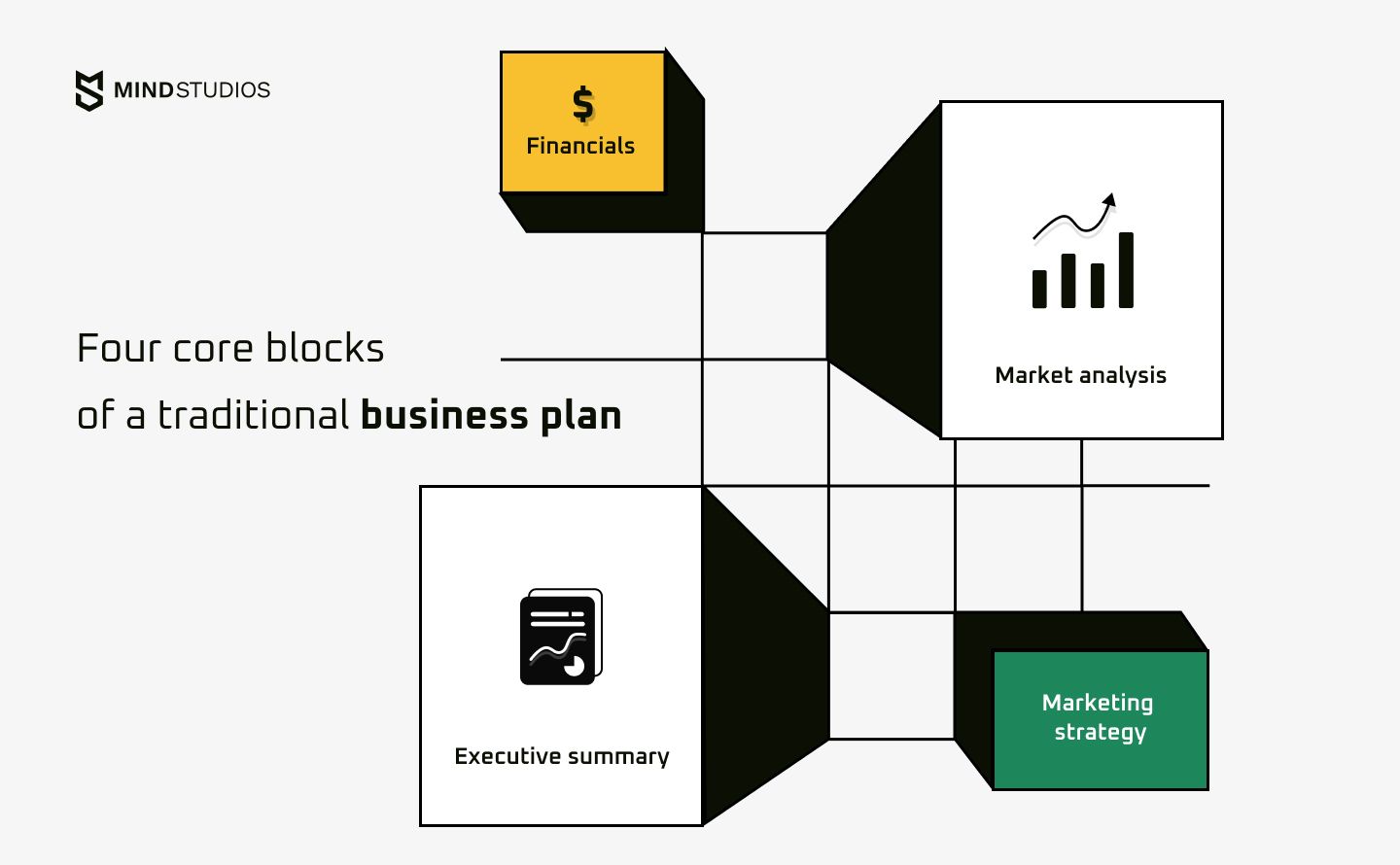
Your mission is to create a reliable and stable mobile application for either enterprises, individuals, or non-profit organizations. In this case, a business plan will help you pave the road to make your project profitable.
Therefore, when writing a mobile app business plan for startups, you’ll need to estimate the cost of development and commissioning as well as the timing of the return on investment in your project. Only by doing this, will you get a clear picture of your app’s viability.
One of the essential factors in writing a good startup business plan for a mobile app is delivering maximum transparency at each part. Let’s highlight what you should include in your mobile app business plan to make it serve your business in the most effective way possible.
Executive summary
Let’s start with the executive summary . It is the first and most significant part of your mobile app business plan because it’s the first thing an investor will read. The executive summary should be clear and concise, with no detailed information about how your product works. Address the situation in the market, who your target customer is, and what unique problem your application can solve.
Make your proposal unique to distinguish your company from others. In other words, create a unique value proposition (UVP). Use your imagination: consider your executive summary as a movie teaser and your investor as a spectator. Would they like to see your movie?
Specify your goals . These objectives should rely on your business analysis. Investors will examine your aims to see if they satisfy their needs. You also have to determine the ultimate goal of your exit plan . Furthermore, you should establish a list of funding requirements and the proceeds that will be used to boost the attractiveness of your company. One of the essential factors in the startup business plan for your mobile app success is ensuring maximum transparency at each stage.
Make your document convincing . To do this, ensure your product’s concept and goals are crystal clear and do not vary throughout the paper. Provide the reader with accurate data and realistic expectations about your project. Of course, don’t forget to make sure that the name of the person who created the business plan and executive summary and the names of your team members are consistent throughout the documentation.
Business description
Introduce your company in this part, beginning with corporate information and ending with your mobile app concept. This part of your startup business plan will show investors the corporate values of your company, your mission, product vision, and the fundamental factors for your startup success.
This information is vitally important for investors. For example, a technology startup accelerator Y Combinator considers getting money as by far the easiest part whereas working on ideas — the most significant part for any startup in achieving success. In most cases, Y-Combinator-like organizations make compiling a thorough business plan a prerequisite before introducing newly-formed projects to investors.

Company overview
Here you should describe your company’s:
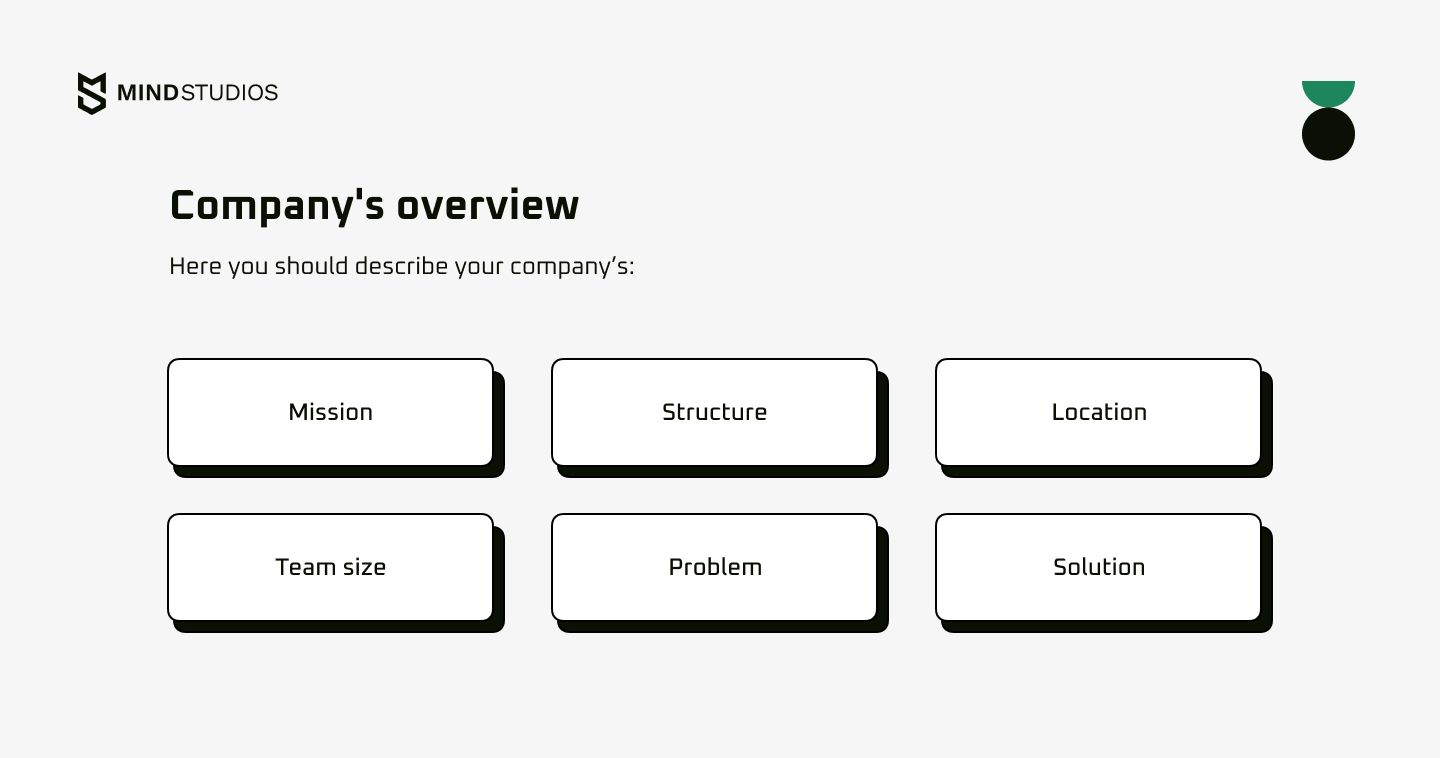
This section should give the reader of your business plan detailed information about your startup: the official name of your company, the location of the headquarters, and its structure, namely the business entity type (LLC, corporation, etc.). Make sure to provide further details about your team, such as the number of workers, their names, job titles, and so forth.
Describe the purpose of your company and the fundamental principles that guide your business in the mission statement. After establishing your mission, outline the primary challenges and solutions your startup can offer.

Company history
Before making any business proposal, describe the history of your company, how your team formed, and how you came up with your idea. In addition, you can talk about the main stages of your company’s development and the experience that precedes the product launch.
Whether you are outsourcing app development process or you have an in-house team, it is often the most significant part of the executive summary because your app development team is the main engine of your project implementation. You should specify each person’s name, position, work experience, and responsibilities in the company. In addition, you can involve an advisory group that will help you make essential decisions. Consultants on your advisory team should have experience in the industry.
Market analysis
Information about the state of the market should be the main factor in your app idea realization. You should be aware of the present situation in your industry, have up-to-date information, and be able to generate a short-term forecast.
To conduct market analysis , you should take several steps:
- Examining existing business environment
- Defining your market research criteria
- Determining your total available market (TAM), service available market (SAM), and service obtainable market (SOM)
- Identifying your direct competitors
- Analyzing your target audience and figuring out the cost per acquisition (CPA) for your niche
No market research in the mobile app industry can be conducted without analyzing Google Play Store and Apple App Store with their ranks for top paid, top free, and top-grossing apps as well as user reviews.
Market forecasts
Forecasting is an integral component of writing a business plan for an app development startup realization.
Forecasts from reputable research firms such as Nielsen and Forrester are of interest when creating any business plan, be it a business plan for an app development, a website, or a traditional software startup business plan. To provide reliable market forecasts, you can:
- Include data on the growth of companies with solutions similar to your mobile app
- Add information on the amount of money poured into similar startups (platforms like Crunchbase or Y Combinator can help with this)
- Enrich your business plan with some forecasts on your target customer behavior
Your goal is to assess whether there’s a real market for your product, whether there are enough customers in the market, and, accordingly, whether those customers are willing to pay money for using your product.
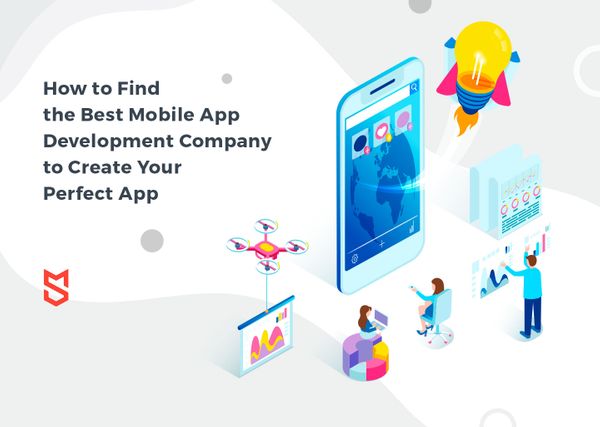
SWOT analysis
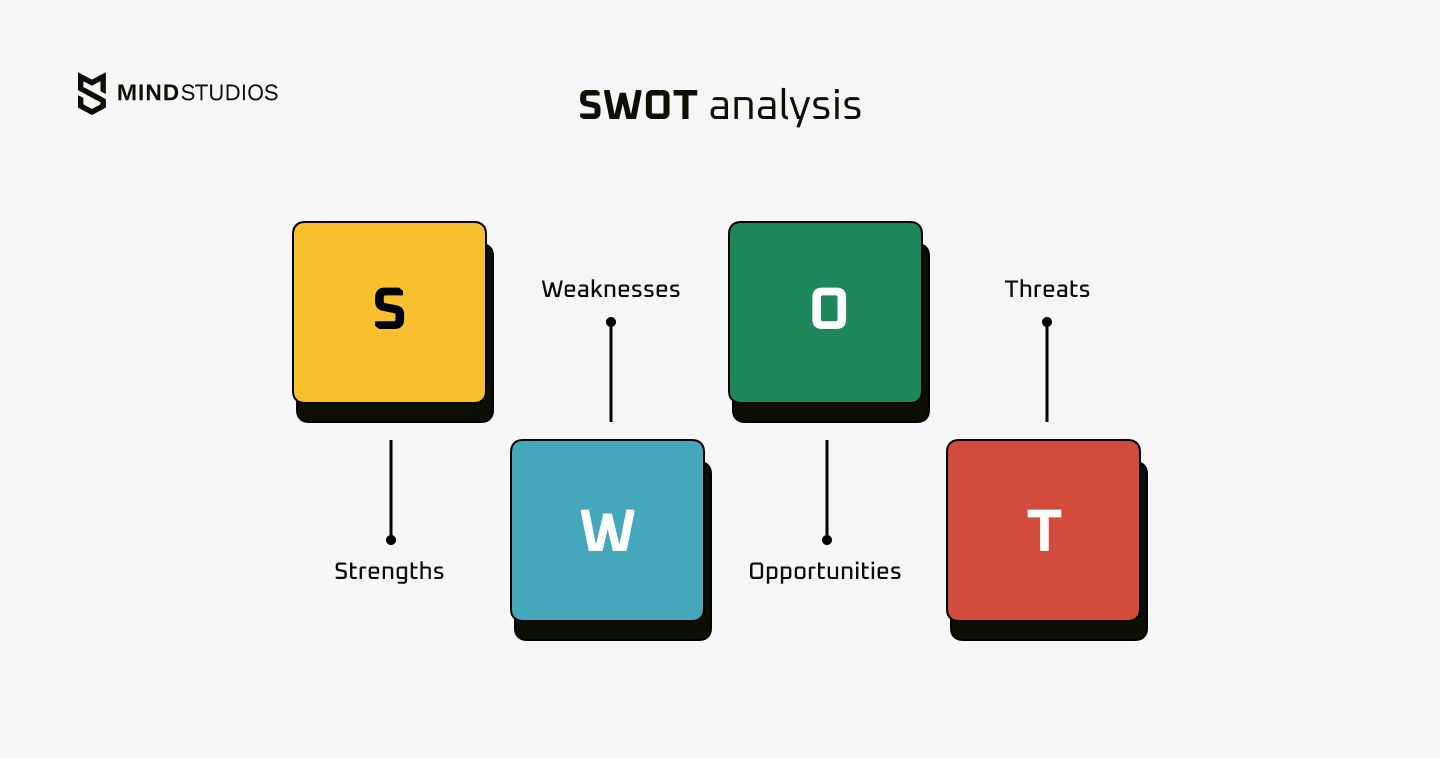
A SWOT analysis is a strategic planning method that allows you to present a structured description of your business situation. It can be a great way to evaluate your app startup concept from four perspectives. Namely, its:
- W eaknesses
- O pportunities
It’s natural when a business has weaknesses: knowing about them will serve as a powerful driver for finding solutions and will reduce any risks your company may need to face.
Marketing strategy
An app marketing strategy is a bridge that allows your product to fall into the hands of your customers. You have to convince investors that you have such a bridge. This is an important part of the mobile app strategy.
When drawing up a mobile app marketing plan, you have to define the marketing strategies you intend to use in application promotion. Here are a few examples, along with descriptions of how they work:
Create a landing page
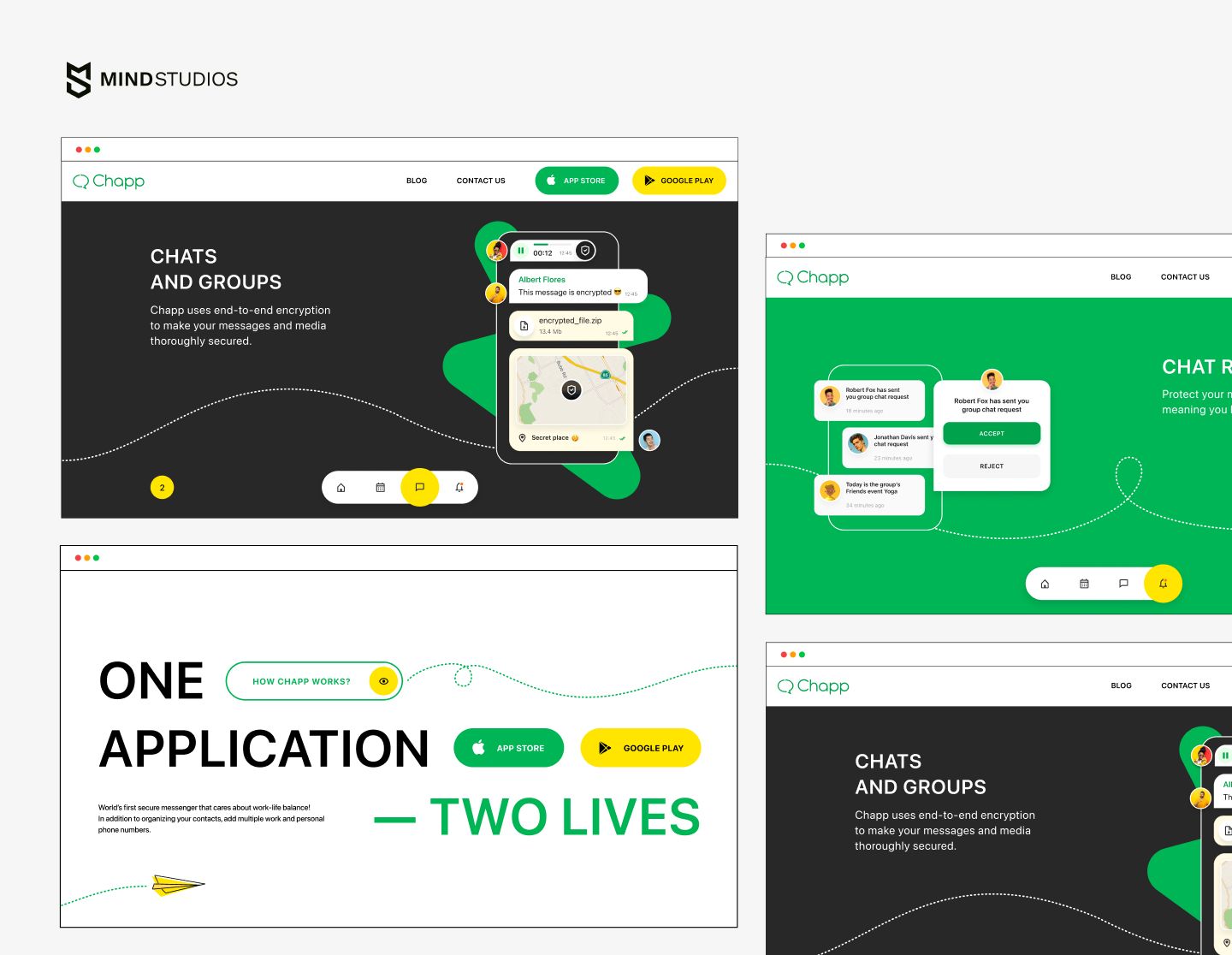
Creating a landing page for your mobile app will help you reach a wider audience by informing users about new features and updates. Make sure your page contains the name of the application, a description of its functionality, promotional videos, and so on.
Launch a website and blog
Launching a website is a great way to promote your application. There, you may, for example, provide more information about your company, its goals and values, and an overview of your future mobile solution.
A website blog is also a helpful thing with your app advertising. You can share news on your upcoming product and publish SEO-optimized articles for better promotion.
Social media marketing
Consider social media marketing while developing a business strategy to promote your app. Describe how you intend to use this form of advertising at various phases of your mobile solution development: before launch while attracting your audience and retaining users.
Estimate your marketing budget
You may estimate the cost of marketing services based on the market analysis you outlined in the preceding section of your business plan. Understanding the marketing budget is essential to all parties: you, the app owner, investors, and other stakeholders.
Product growth
Depending on the type of app startup, growing the user base approach differs, as does the business plan for entering different markets. For example, a massive advertising attack tends to make sense in markets where consumers understand your product or service and its usefulness.
Take, for instance, Uber , which has successfully launched extensive marketing campaigns. The company’s ads have spread globally with Uber localizing advertising for each region.
So, if you’re still working on a business strategy, think about how you’ll expand your user base in advance. This will tremendously assist you in future product growth.
Choose your product launch type
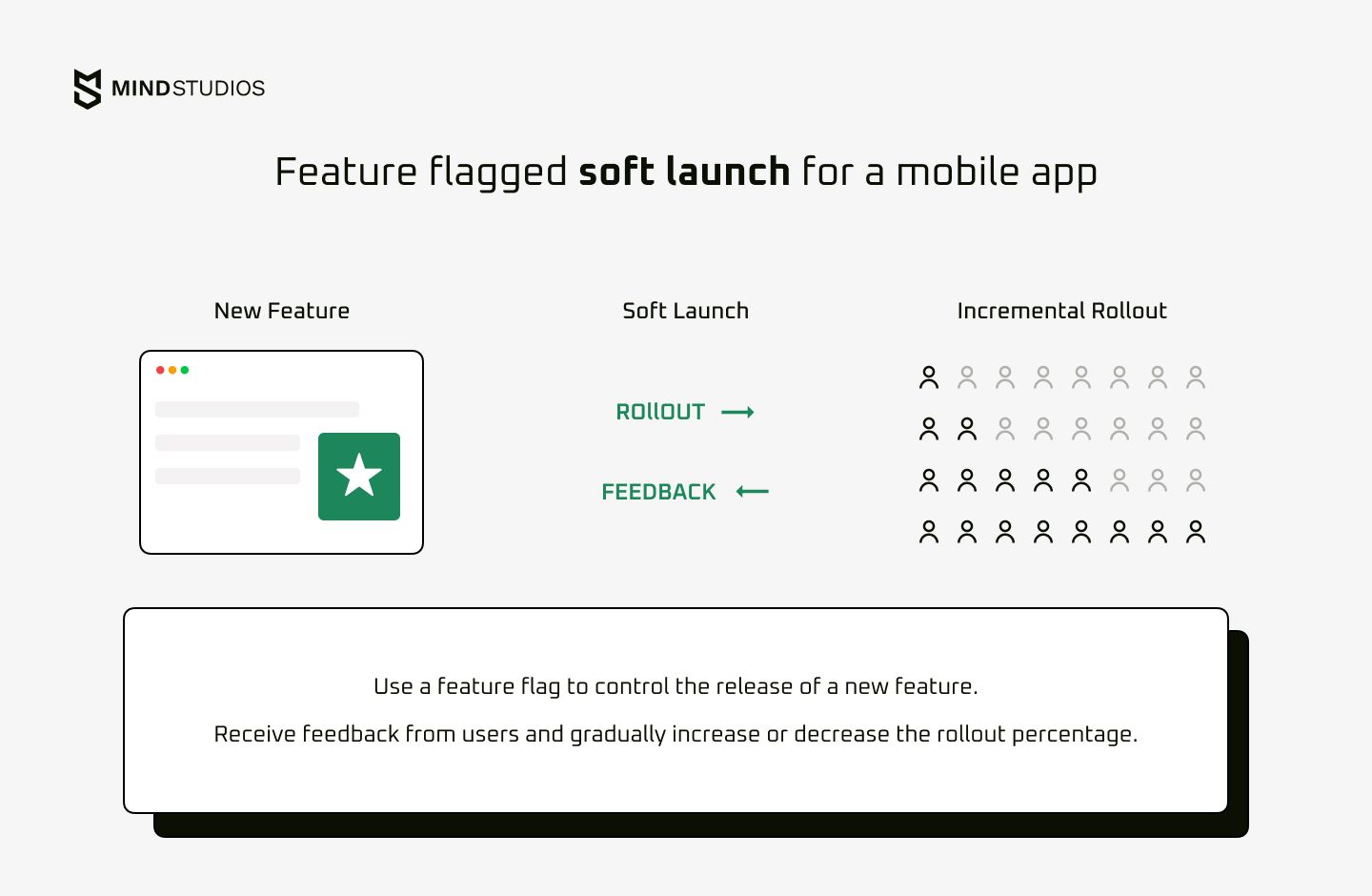
Be sure to indicate the product launch type in your business plan. There are two such types: hard and soft launch . The first one means delivering a finished product to your entire target audience. A soft launch is when you release an MVP or full version of your app, but for a limited audience.
To rightly set out this part of your business plan, you should clearly understand what kind of financing you need to move forward. Moreover, you need to express it as clearly as possible to be sure a potential investor will also understand what funding you need.
The financial model includes, as a rule, a three- to five-year forecast of all the main forecasted indicators, including profit and loss, cash flow, balance sheets, start tables, unit economics calculation as well as your app’s projected revenues and costs. Your financial document has to contain the following components to determine the actual cost and distribution of investments in the best way, with a clear explanation of each.
Startup costs/funding required
Inform your investors about estimated costs. We recommend placing reasonable estimates and leaving room for extra expenses since these numbers might fluctuate.
Designate all types of costs :
- One-time costs (e.g. relocation costs, costs for buying an office space, equipment, servers, software, licenses)
- Fixed costs: they remain unchanged regardless of whether you produce something or not (e.g. rent, insurance, lease payments, fixed salaries)
- Variable costs: costs that change according to the production volume (e.g. wages)
Monetization strategy
It is another section you need to add to your mobile app business plan. By illustrating your monetization model, you’ll demonstrate to your investors and other stakeholders that your project will be profitable and provide a return on investment with positive unit economics. It will also help you be sure that your startup will reach its break-even point.
The most common ways to monetize an application are :
- Advertising
- Charging for the application (if your business model describes a paid application, you need to convince the consumer why they have to pay and what they’re paying for)
- In-app purchases (this is a widespread mobile app business model in iOS and Android applications)
- Subscriptions (this model of monetization is quite popular and works until the user decides to cancel the subscription; in most cases, subscription apps have a free trial period)
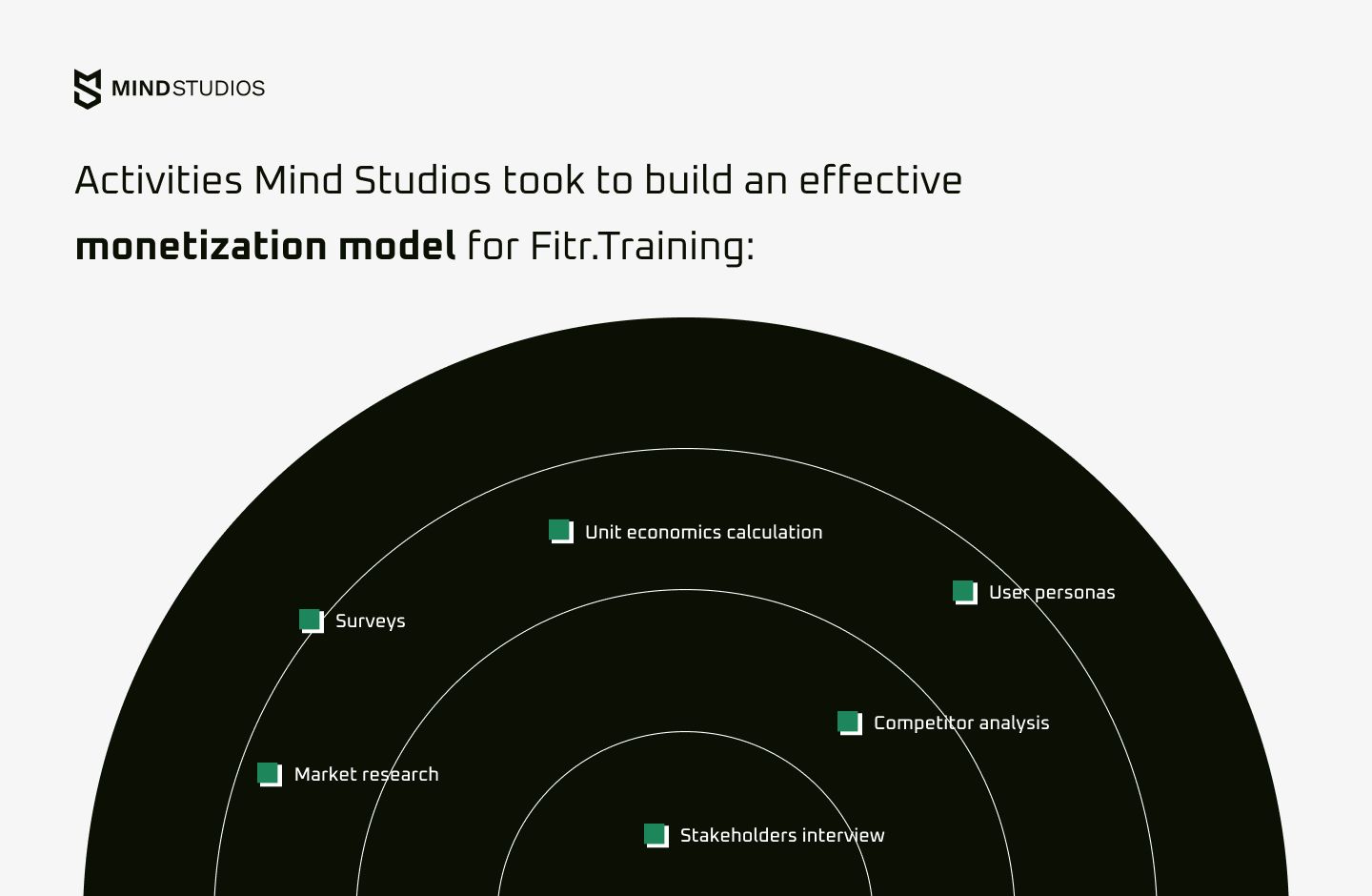
One of our prominent projects in which we’ve helped set up a monetization strategy is Fitr. Training , a remote fitness coaching application. Our team analyzed the platform’s performance and discovered we could enhance the conversion rate.
We established a monetization model based on the collected data and customer feedback. Namely, our team launched an efficient subscription option. The results were remarkable: one out of every four coaches now uses the paid membership.
Mind Studios can also assist you in elaborating a potent monetization strategy.
Business plan example for a mobile app startup
We’d like to offer you a business plan template for a startup updated to 2023. Keep in mind that, although this mobile app business plan itself is structured according to all the rules, the calculations are entirely fictional. To complement our business plan, we also provide a mobile app marketing plan template, ensuring a strategic approach to promoting your app in the competitive market. This template includes up-to-date techniques for 2023, guiding you through effective advertising and user engagement strategies.
Download the free PDF business plan template for a mobile app here .
Writing a business plan for a mobile app startup isn’t easy. As a rule, the most challenging part of developing a business plan for a mobile app idea is writing the first page. Many people in this situation rush to find and download a free copy of another company’s business plan. They mistakenly believe that someone else’s business strategy will help them achieve their goals. But it absolutely won’t!
A business plan cannot be a cloned document. It must be one-of-a-kind reflecting your passion and enthusiasm in bringing your idea into life . A successful business plan should demonstrate that your company is viable and financially attractive. The higher the viability, the higher the investment opportunity.
If you need to compile a well-thought-out business plan to attract investments and successfully launch your app, our expert team at Mind Studios is here to help .
You may also find interesting .svg-wave path { transition-duration: 0.8s !important; } .svg-wave.active path { stroke-dashoffset: 0 !important; } @media (max-width: 640px) { .svg-wave path { stroke-dashoffset: 0 !important; } }
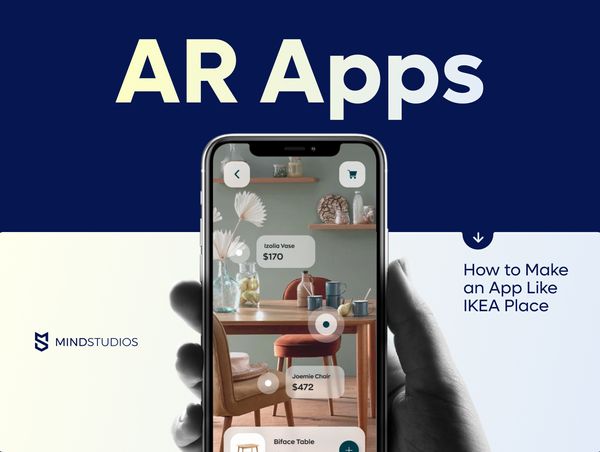
Search suggestions:
- check your spelling
- try more general words
- try different words that mean the same thing
Got an idea in Mind?

Upmetrics AI Assistant: Simplifying Business Planning through AI-Powered Insights. Learn How
Entrepreneurs & Small Business
Accelerators & Incubators
Business Consultants & Advisors
Educators & Business Schools
Students & Scholars
AI Business Plan Generator
Financial Forecasting
AI Assistance
Ai Pitch Deck Generator
Strategic Planning
See How Upmetrics Works →
- Sample Plans
- WHY UPMETRICS?
Customer Success Stories
Business Plan Course
Small Business Tools
Strategic Planning Templates
E-books, Guides & More
How to Start an App Business in (2024): Step-by-Step Guide

Free Mobile App Business Plan Template
Matthew Khalili
19 Min Read
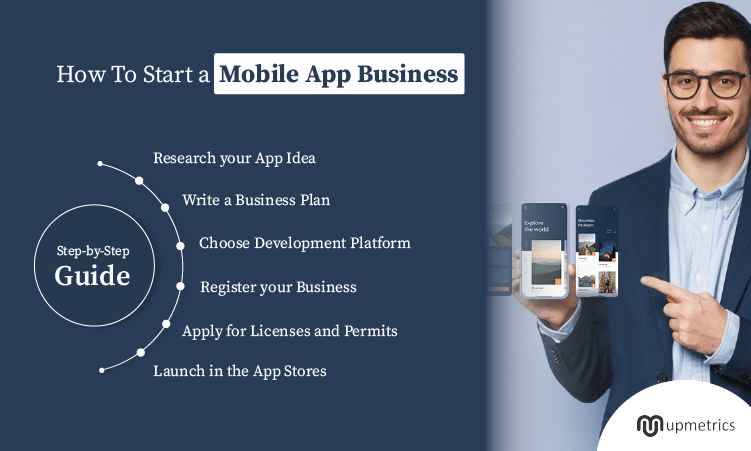
Are you a startup enthusiast with a brilliant business idea? Or do you want to expand your current business by getting digital?
Well, whatever your motivation is, developing an app is a promising way to translate your business idea into a successful business.
An average American adult spends nearly 88% of their total phone time on mobile apps. This leaves ample space for mobile app businesses to flourish, grow and develop.
Now, don’t let your lack of technical expertise stop you from starting an app. It is possible to not only start an app business but turn it successful if you follow the proper way.
If you are wondering how to start an app business, this blog is a perfect guide.
So without any further ado, let’s get started.
How much money do you need to start a mobile app business?
The cost of starting a mobile app in the US varies between $38,725-$267,850 and more. However, the cost can extend up to $500,000 or more depending on the complexity and scope of your SaaS app.
These costs are highly influenced by factors such as development costs, the complexity of the app, location, and much more.
Pros and Cons of Starting a Mobile App Business
Starting an app business is indeed a rewarding venture. However, like every business, there are both pros and cons to starting a mobile app company.
- Global reach: Easier to tap into the international market and capture a worldwide audience.
- Scalability: Easy scalability to accommodate more features, users, and new trends.
- Low overhead: Less operational and overhead expenses.
- Competition: Intensely competitive marketplace with millions of existing apps.
- Rapid technological changes: Demands constant updates to stay relevant.
- Monetization challenges: The easy availability of free apps makes vcc3 monetization difficult.
A Complete Guide to Starting an App Business
Table of Contents
- Research and validate your app idea
- Brainstorm a mobile app name
- Create an app business plan
- Secure seed funding for your app business (optional)
- Choosing a mobile app development platform
- Develop an app
- Register your app business
- Apply for business licenses and permits
- Get business insurance
- Apply for a bank account & business credit cards
- Pre-launch and mobile app marketing strategy
- Develop a monetization plan
- Build a team as you grow
- Make your app available in app stores
- Release timely app updates
Developing an app might be easier. However, starting a successful app business isn’t. Let’s uncover every detail that goes into starting an app business, right from idea validation to gathering user feedback to testing new ideas.
1. Research and validate your app idea
The first step in creating a sustainable cutting-edge application is to conduct a thorough market research. The quality research at this step will essentially lay the foundation for the success of your mobile application.
Ensure cover a detailed analysis of the following to create a fresh, innovative, and problem-solving solution for your audience:
- Target audience: Identify your target users and analyze their pain points with current solutions. Assess the market size for your solution and determine your targeted available market (TAM).
- Competitors: Identify your potential competitors and assess their standing in the market. Discover problems with their mobile apps and see if your solution fills the gap.
- Failed application analysis: Don’t only choose a successful app for your analysis. Look after failed applications and see where and what they did wrong to avoid the same mistakes in your application.
At this step, simultaneously, you will also work on validating your mobile app idea. The idea behind this entire analysis is to ensure that you chase a problem that’s real and demands a solution.
Instead of jumping in with the first idea, it is better to ideate, analyze, and then finalize an app idea that is better than the rest. Remember to give every idea an equal chance before scraping it off entirely.
Find an appropriate product-market fit for the validated idea and rework the areas where there is a scope for improvement.
Now, with your validated idea move ahead and brainstorm a name for your mobile application.
2. Brainstorm a mobile app name
Before you move to complex parts and start development, finalize the name of your mobile application. However, finding the right name is a struggle in itself.
Now, if you are already operating as a successful business, launch your app with the same name. This will make it easier for your existing customers to find you.
However, if you are launching a new business, here are a few suggestions that can help you brainstorm the perfect name for your app development company:
- Brainstorm the keywords that reflect your business offering. For instance, if you are launching an app in the health and fitness segment, include related keywords in your app name.
- Choose a simple, easy-to-recall and easy-to-spell name.
- Choose a short name. Different app stores have character limits. So better brainstorm the ideas within that range.
- Don’t use heavy jargon or phrases in the name.
- Use online name generators to find name ideas.
- Ask for suggestions from creative people in your social circles to finalize a perfect name.
Overall, keep your brand values and its value proposition in mind and find a name that’s a reflection of those values.
Also, ensure that the name is unique and is available for registration. If you are planning to register the business with some other name, finalize that as well.
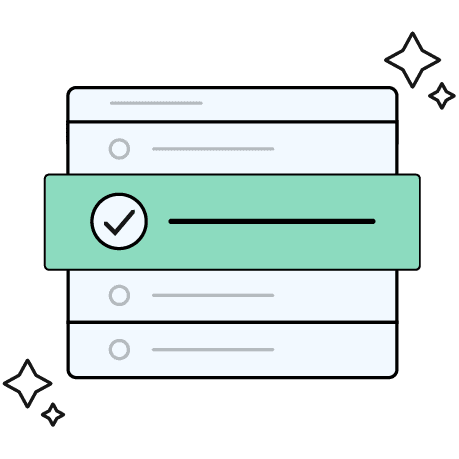
Want a Unique Name for your Mobile App Business?
Generate a brandable and catchy business name in seconds with our free business name generator for mobile app businesss.
3. Create an app business plan
From determining the business strategy to executing app development to financing to launching the application and marketing- a lot needs to be planned, executed, and monitored while starting your own app.
Creating a mobile app business plan ensures that you understand the market thoroughly and have every step figured out to withstand the changing tides of the mobile app industry.
Moreover, if you are planning to raise funds for your mobile application, having a well-crafted app plan will give you the edge over other app developers.
Wondering what goes into writing a comprehensive app plan? Here are the most crucial components your business plan must include:
- Executive summary
- Business Overview
- Mobile app industry analysis
- Mobile app services
- Marketing and sales strategy
- Operations plan
- Key management team
- Financial plan
Writing a cohesive actionable business plan is a taxing job. It requires in-depth detailing to present your business idea thoroughly.
Not very good at writing? Need help with your plan?
Write your business plan 10X faster with Upmetrics AI
Plans starting from $7/month

4. Secure seed funding for your app business (optional)
Now, you need money for app development and other activities to turn those ideas into a reality.
Assess your monetary position and check if you require additional funds to start with the mobile app development. If so, how much?
Seek out a small loan from family members and friends to avoid any burden of repayment and high-interest rates initially. However, if that’s not the choice, identify the available funding sources and determine the best options for your needs.
Here are a few options for you to consider:
- Crowdfunding
- Angel Investors
- Venture Capitalist firms
- Credit card financing
If you are planning to seek funding from investors, you need to present a pitch of your business idea. For a certain stake in your business, they will provide you with equity.
However, you can always start small and seek funding from outside as you scale the app further.
5. Choosing a mobile app development platform
To begin the app development, first, finalize the ideal platform for your mobile app. All the mobile apps in the market have used one of these 3 app development processes to create apps:
Native apps
Native applications are developed to run on specific devices and operating systems. Such apps have access to the native device’s API, thereby, allowing you to build high-performance apps with a highly refined interface.
These apps are expensive to develop since you need different outputs for different operating systems. But they can be found easily by your target users for downloading. For reference, 80% of mobile traffic is generated through Native mobile apps.
Undertake the market research to gather an in-depth understanding of both the app stores- Apple App Store and Google Play Store. Assess the number of Android apps and iOS apps and the market share and revenue position of these platforms to make an informed choice.
For instance, as of 2023, there were more than 3.6 million Android apps and 1.8 million iOS apps on Play Store and Apple Store respectively.
Identify if your potential app users use Android or Apple devices and also consider the suitability of your native app with a respective operating system.
PWA (progressive web apps)
PWA is a hybrid of web pages and mobile applications. It is a web app that offers users a similar kind of experience to native apps.
These apps require no download and are indexed on search engines. They don’t require access to native device APIs to perform and are perfect for app businesses that require frequent updates.
It’s easier to target more customers with PWA than a native app and it is comparatively cheap to develop.
However, since the PWA’s don’t use native device’s API, it has a comparatively low performance in terms of features compared to native apps.
Lastly, there is an option of hybrid apps for you to consider. An app builder will help you build a cross-platform app for both platforms simultaneously using the same code.
Successful app business launches both Android app and ios app of their app to cater to a larger target audience.
Now allocate the resources depending on the app development method you choose.
6. Develop an app
Have you planned to develop a native app? If so, are you planning to develop an Android app, or iOS app, or both?
After choosing between native, PWA, and hybrid apps, it is now time to gather the resources and start working on the app development.
Here are 3 different methods to choose your development method:
Build your own app
This is perhaps the best method of cost-effective development, if you have proficiency in different programming languages, prior experience in building your own apps, and some time to invest.
Hire a freelancing app developer/ app development agency or an in-house team of app developers
If you are someone with no technical background, you need a bunch of people to undertake the development of your app ideas.
This method is costly. However, you can expect to have complete control over your product and its development.
Use an app builder
Similar to content management systems like WordPress, an app builder allows you to build a website without writing a single line of code. Watch how the user interface of your app turns out while the app builder builds it in real time.
As much as you focus on development, also draw your attention towards delivering a delightful user experience. Hire designers to help you attain a modern and intuitive user experience.
It takes anywhere between 6-10 months to turn your app ideas into a successful product. Follow this app development process to get a structurally correct product:
- Develop a minimum viable product
- Develop a wireframe
- Choose your programming language
- Start the coding
- Work on app design
- Test the app
Now, create a timeline for the launch and get the actual product ready.
7. Register your app business
Now, it’s time to give your mobile app business a legal identity. Register your business in these easy steps:
Select a business entity
A business entity is the legal structure of your business. The business structure you choose will determine the taxes, liabilities, and state regulations of your business.
Here are a few different entities you can choose for your mobile app business:
- Sole proprietorship
- LLC (Limited Liability Company)
- Partnership
- Corporation
Now, each of these entities has its own benefits and cons. Identify the suitable entity structure for your mobile application after thorough consideration.
LLCs and Corporations are more suited for businesses in a way that separates you from your business and keeps your liabilities under control.
Also, consider what are the prevalent business structures if you want to acquire funding from investors.
Apply for tax registration & business EIN
Now, quickly proceed with tax registration and get an Employer Identification Number (EIN) through an IRS portal .
The 9-digit EIN is like a social security number that allows you to open business bank accounts, apply for credit cards, fill the tax forms, and pay salaries.
Once the registration is complete, you go ahead and acquire the essential licenses and permits.
8. Apply for business licenses and permits
Business licenses and permits ensure that your mobile app business is legally compliant and sound. Depending on the nature of your app, its industry, functionality, and the area of operation; research and identify the essential licenses for your business.
Here are a few licenses and permits you must acquire for the mobile app business:
- Industry-specific licenses: Depending on your industry, i.e. gambling, healthcare, beauty, fashion, etc. get the licenses required in that specific trade.
- Zoning permits: If you are getting a commercial place for your app business, get essential building permits. Even if you are going to operate from home, check if your state requires zoning permits for home businesses.
- Software development license: Depending on your state of operation, you may be required to get a software development license to commence development.
- Sales tax permit: To sell physical and digital products, you may need a sales tax permit to accept and remit sales tax.
- Data protection and privacy compliance: Since you will be collecting personal and sensitive information from the users, you will be required to follow data privacy compliances applicable to your business—for instance, CCPA, GDPR, etc.
Hire a professional to look after these matters. Non-compliance with any rule may lead to extremely high penalties and fines.
9. Get business insurance
Insurance is not essential for compliance. However, it will safeguard your business against potential casualties and risks involved in the business.
Here are a few insurance you must consider getting:
- General liability insurance: If there is one insurance you must get, it is this. It offers protection against property damage, injuries, and a variety of business aspects that require coverage.
- Professional liability insurance: If you are going to provide services with your app, get yourself this insurance. It will protect against claims of professional negligence.
- Worker’s compensation insurance: For an app development business that will hire employees on a salaried basis, this license is mandatory. It’s a coverage plan for your employees.
- Cyber liability insurance: Since your business is going to operate in a digitized space, you need a license that protects your business in case of a security breach or leak of information.
Consider your requirements and acquire industry-specific insurance for your mobile app business.
10. Apply for a bank account & business credit cards
Set up a separate accounting system to keep your business and personal expenses separate. This will help you maintain your finances and will also ease the process of filing taxes.
Using that EIN number open a business bank account. Determine the best banking system that will work for your business. And also, apply for a business credit card.
Consistent credit card use will build your credit history and will help acquire loans in the future.
11. Pre-launch and mobile app marketing strategy
Making a perfect app is not enough. It needs to be marketed to the right audience through the right tactics to get traction and downloads.
Start working on your branding and marketing strategy before your app hits the app store. All the buzz and hype you create at this stage will help you when the app actually makes a launch.
Here are the marketing elements you should get in line with before launching your app on the app store:
- Clearly define your branding elements. What kind of image would you like to create in the market? Develop the app’s logo, designs, colors, and overall user interface keeping the branding in mind. Also, ensure that you deliver a consistent brand image through all your marketing channels.
- Identify where will you find your target audience. Will they be more responsive to social media or emails? Do they prefer written content or video content? Are they approachable through any offline channels?
- Create a landing page to promote the app and its features. A well-built landing page with correct strategic placements can be an invaluable asset in getting the desired outreach.
- Get in touch with influencers from your industry and collaborate with them to market your app.
- Create a content bank of content that can be reused for multiple purposes.
- Participate in industry-specific events and seminars to get in touch with your people.
Be generous with the marketing budget and put your app marketing plan into action.
Lastly, never put all your eggs in one basket. Try different marketing strategies and eliminate the non-useful ones as you monitor and analyze the results.
12. Develop a monetization plan
Are you planning to make money directly or through your app? If that’s the case, start thinking about a suitable app monetization model.
Here are a few methods popularly followed by other apps on iOS App Store and Play Store.
- In-app purchases: In-app purchases are for businesses that aim to sell physical or digital products through apps. Consider them as e-commerce apps that facilitate sales for your products.
- Freemium: These are downloadable free apps on the app store. However, only certain contents of these apps are free. In this method, you earn when a user pays for paid content after using the free version.
- Subscription: You generate weekly, monthly, quarterly, or annual revenue by getting repeated subscriptions for your services.
- Paid apps: These apps aren’t available for free download. The user pays a certain fee to download the app and access its content.
- In-app ads: You can generate revenue by renting out advertising space on your app. However, ensure that you don’t sacrifice the user’s experience in this chase.
Each of these monetization models has its advantages and disadvantages. Identify the monetization methods used by your competitors or applications offering similar services. And plan your strategies accordingly.
13. Build a team as you grow
Don’t build a large team right from the beginning. Ideally, get the basic development of your app through freelancers or remote app developers.
Depending on whether you plan to launch an app on the Apple app store or Google Play Store, you will hire professional experts in respective programming languages.
Focus on a small but highly qualified team. Get the work like accounting, legalities, and marketing outsourced.
App development is a costly affair. You better plan the entire development process hourly to keep track of project completion.
14. Make your app available in app stores
You have come a long way. From undertaking market research for your app idea to preparing MVP and developing the app, you finally have your app ready to be launched.
Now you work on your app store optimization to make the app discoverable on app stores. The app market is intensely competitive. Whether you plan to launch an app on Apple’s app store or Google Play store, an optimized app stands a higher chance of being organically visible.
Here are a few things to consider while performing app store optimization:
- App name: Optimize your unique app name within its character limit. The character limit for an iPhone app is 50 while that for an Android app is 30.
- Keyword optimization: Add the relevant search terms of your app to make it easily discoverable.
- App icon: Use a clear distinct icon to your app to create a recalling power.
- Description: Add a captivating description of your app describing its features and benefits. Use bullet points, headers, and subheadings to keep the information easily scannable.
- Screenshots: Add important screenshots from your app design to help users understand what they can expect.
- Video: Add a video of your web app defining its clear purpose, message, and value proposition to connect with the users.
Manage your app store optimization by understanding the requirements of different platforms and making your apps available on app stores.
15. Release timely app updates
Launch the app as soon as your MVP is ready. Don’t wait for the development to end so that you have all the features ready. Focus on essential features and deliver them with your MVP.
Test the app on early adopters and gather the user data for performance on different mobile devices. It will provide invaluable user feedback from further development.
Launching the app is not the end of your app-building process. You need to regularly roll out updates, fix the bugs, and run beta testing of new features to stay ahead in the app market.
Ideally, an app development company should roll out new updates every 3 to 4 months.
Time to take the first step and validate your app idea. Already validated? Well, let’s build a solid foundation for your business idea by writing a stellar app business plan.
Writing a plan will ensure that there is no oversight in app planning and you get a clear direction to run your app business.
Upmetrics offers 400+ sample business plan examples for businesses from varying industries. These examples are perfect for writing a detailed and comprehensive business plan.
Now use our Upmetrics app business plan sample and get started.
The Quickest Way to turn a Business Idea into a Business Plan
Fill-in-the-blanks, AI-assistance, and automatic financials make it easy.

Frequently Asked Questions
Do i need technical skills to start an app business.
Yes, you can start an app business without any technical skills. There is a variety of app maker that allows you to build an app with simple drag-and-drop options. Moreover, you can always hire a technical partner to look after app development and its complexities.
What platforms should I target for my app (iOS, Android, both)?
Whether to make an Android or an iOS app or launch an app on both platforms, depends largely on your target audience. Conduct research and understand whether your app users will belong to the Android or iPhone cohort. If you can generate a reasonable user base from both platforms, you can consider making a hybrid app.
How do I create a business plan for my app startup?
To create a business plan for your app startup, begin by undertaking thorough and detailed market research. Now, translate your ideas onto a paper covering the key fundamentals of a plan. Writing a plan can be difficult. So, it’s better to use templates and plan builders that will help you write a compelling actionable plan.
What are some common mistakes to avoid when starting an app business?
Here are a few common mistakes to avoid when starting an app business:
- Working on too many ideas
- Delaying the launch
- Not marketing it enough
- Not paying enough attention to the user interface
How can I secure funding for my app startup?
Apart from personal savings, here are a few funding options for you to consider:
- Venture Capital Firms
- Credit line
- Friends and Family
How can I monetize my app and generate revenue?
Here are a few ways to generate revenue through your mobile app:
- Offering a freemium model.
- Offering in-app purchases for additional access and services.
- Making it a paid app.
- Generating revenue through ads in your business.
- Getting sponsorships on the app.
About the Author

Matthew Khalili is an experienced business planning expert and the founder of The Plan Writers. With over a decade of experience in the field, he has helped numerous entrepreneurs in creating investor-ready pitch decks and business plans. Matt has enabled 5000+ startups to raise over $1 billion through his business plan, market research, and financial modeling services. Read more
Reach Your Goals with Accurate Planning
No Risk – Cancel at Any Time – 15 Day Money Back Guarantee
Popular Templates

Sample Mobile App Business Plan

Download our Ultimate Mobile App Business Plan Template
Having a thorough business plan in place is critical for any successful mobile app venture. It will serve as the foundation for your operations, setting out the goals and objectives that will help guide your decisions and actions. A well-written business plan can give you clarity on realistic financial projections and help you secure financing from lenders or investors. A mobile app business plan example can be a great resource to draw upon when creating your own plan, making sure that all the key components are included in your document.
The mobile app business plan sample below will give you an idea of what one should look like. It is not as comprehensive and successful in raising capital for your mobile app as Growthink’s Ultimate Mobile App Business Plan Template , but it can help you write a mobile app business plan of your own.
Mobile App Business Plan Example – AppInnovate Solutions
Table of contents, executive summary, company overview, industry analysis, customer analysis, competitive analysis, marketing plan, operations plan, management team, financial plan.
Welcome to AppInnovate Solutions, a trailblazing mobile app company nestled in the vibrant heart of Miami, FL. We are dedicated to revolutionizing the local mobile app market by offering a comprehensive suite of bespoke development services. Our expert team specializes in Mobile App Development, UI/UX Design, App Testing, Quality Assurance, and ongoing Maintenance and Updates. Additionally, we provide Consultation and Project Management to ensure our clients’ visions are seamlessly brought to life. Leveraging our deep understanding of both the local and global market, we are committed to creating intuitive, engaging, and technologically advanced apps that meet the highest international standards of excellence.
Our foundation for success is deeply rooted in the vast experience of our founder, combined with our commitment to delivering superior apps at competitive prices. Since launching on January 4, 2024, as a Limited Liability Company, we’ve made significant strides, including establishing a strong local presence in Miami and developing a unique brand identity. These initial steps have positioned us as a leading contender in the mobile app industry, with our dedication to quality, innovation, and affordability setting us apart as the go-to choice for mobile app development in the region.
The Mobile App industry in the United States is experiencing explosive growth, currently valued at over $120 billion. This growth is driven by an increasing dependency on smartphones and tablets, with a notable shift towards personalized and user-friendly apps. AppInnovate Solutions is uniquely positioned to capitalize on these trends, focusing on custom mobile apps that cater to the specific needs of Miami’s residents and businesses. Furthermore, the rise of mobile commerce presents an exceptional opportunity for us to provide innovative solutions to businesses aiming to engage in this lucrative trend, ensuring our competitive edge in the fast-paced mobile app market.
Our initial market penetration strategy targets local residents and tourists in Miami, offering them innovative app solutions to enhance their daily lives and travel experiences. By tailoring our app’s features to meet the needs of Miami’s diverse population, we ensure a wide range of functionalities from local service recommendations to event discovery. Additionally, we aim to serve local businesses by offering advertising opportunities and business tools within our app, fostering a beneficial relationship that enhances visibility for businesses while providing valuable, localized offers to our users.
Our main competitors are Pixels Media Inc, SDSol Technologies, and Business Site Designer, each offering a range of digital services. Despite the strengths of these companies, AppInnovate Solutions stands out for our ability to deliver high-quality, affordable mobile applications. Our competitive advantage lies in our innovative development techniques, cost-effective pricing, and deep understanding of the Miami market. This unique combination enables us to offer applications that are not only financially accessible but also resonate well with our target audience, ensuring high user engagement and satisfaction.
AppInnovate Solutions offers a comprehensive range of services, including Mobile App Development, UI/UX Design, App Testing, Quality Assurance, and ongoing Maintenance and Updates. Our pricing strategy is designed to cater to a broad spectrum of clients, ensuring affordability without compromising on quality or functionality. Our promotional strategy is centered around online marketing, leveraging social media, SEO, and email marketing to build a strong digital presence. Additionally, we plan to engage with the local community through events and partnerships, complemented by a referral program to organically grow our user base. This multifaceted approach aims to not only attract but also retain customers by establishing a strong brand presence and fostering community engagement.
To ensure the success of AppInnovate Solutions, we will engage in continuous market analysis, provide exceptional customer support, regularly update our app based on user feedback, and maintain rigorous quality assurance standards. Our operational strategy also includes targeted marketing campaigns, careful financial management, and fostering partnerships with other businesses. Crucially, we will focus on compliance, security, and fostering a collaborative work environment. Upcoming milestones include securing initial funding, finalizing product development, achieving operational stability, reaching 1,000 active users, and generating significant monthly revenue. These steps are designed to systematically reduce risks and establish a stable foundation for our long-term success.
Under the leadership of our CEO, Dylan Torres, AppInnovate Solutions boasts a management team with unrivaled expertise and a track record of success in the mobile app industry. Torres’s extensive experience and strategic vision are instrumental in navigating the complexities of app development and market penetration. His leadership ensures that our team remains focused on innovation, user experience, and scalability, driving AppInnovate Solutions towards achieving our ambitious goals.
Welcome to AppInnovate Solutions, a pioneering mobile app company catering to the vibrant community of Miami, FL. As a local mobile app business, we pride ourselves on filling the void in high-quality local mobile app services in the area. Our dedication to innovation and excellence sets us apart, ensuring we meet the diverse needs of our customers with unparalleled precision and creativity.
At AppInnovate Solutions, our offerings encompass a comprehensive suite of mobile app development services designed to bring your digital visions to life. Our expertise in Mobile App Development is complemented by our deep understanding of User Interface (UI) and User Experience (UX) Design, ensuring that every app we create is not only functional but also intuitive and engaging for users. We are committed to excellence through our rigorous App Testing and Quality Assurance processes, ensuring that every product we deliver operates flawlessly. Additionally, we provide ongoing App Maintenance and Updates to keep our clients’ applications at the forefront of technological advancements. Understanding the complexities of app development, we also offer Consultation and Project Management services to guide our clients through every step of the development process, ensuring a smooth and efficient journey from concept to launch.
Located in the heart of Miami, FL, AppInnovate Solutions is strategically positioned to serve the vibrant and diverse community of this dynamic city. Our deep understanding of the local market, combined with our global outlook, enables us to create apps that resonate with local users while meeting international standards of excellence.
Our unique position for success is rooted in the rich experience of our founder, who has a proven track record of running a successful mobile app business. This experience, combined with our commitment to creating superior apps at affordable prices, positions us as a formidable competitor in the mobile app industry. Our dedication to quality, innovation, and affordability makes us the preferred choice for mobile app development in Miami, FL.
Since our inception on January 4, 2024, AppInnovate Solutions has made significant strides as a Limited Liability Company. Our journey began with the creation of a distinct logo and the careful selection of our company name, which reflects our mission and values. Finding an ideal location in Miami has enabled us to establish a strong presence in the local market. These foundational steps mark the beginning of our journey towards becoming a leader in the mobile app development industry.
The Mobile App industry in the United States is currently booming, with a market size of over $120 billion. This industry has shown consistent growth over the past few years, and is expected to continue expanding at a rapid pace in the coming years. With the increasing reliance on smartphones and tablets for everyday tasks, the demand for mobile apps is only expected to rise.
One of the key trends in the Mobile App industry is the shift towards personalized and user-friendly apps. Customers are now looking for apps that cater to their specific needs and provide a seamless user experience. This trend bodes well for AppInnovate Solutions, as their focus on creating customized mobile apps for customers in Miami, FL aligns perfectly with this growing demand for personalized solutions.
Another trend in the Mobile App industry is the rise of mobile commerce, with more and more consumers using apps to make purchases and manage their finances. This presents a great opportunity for AppInnovate Solutions to tap into this market and offer innovative solutions for businesses looking to capitalize on the mobile commerce trend. By staying ahead of industry trends and providing top-notch mobile app development services, AppInnovate Solutions is well-positioned to thrive in the competitive Mobile App industry.
Below is a description of our target customers and their core needs.
Target Customers
AppInnovate Solutions will target local residents in its initial market penetration strategy. These customers are the backbone of the application’s user base, seeking innovative solutions to enhance their daily lives. The app will tailor its features to meet the specific needs and preferences of Miami’s diverse population, covering a wide range of functionalities from local service recommendations to event discovery.
The company will also focus on Miami’s vibrant tourist population. Visitors to the city are always in need of reliable, easy-to-use tools that can help them navigate the local scene, discover hidden gems, and manage their travel logistics effortlessly. By integrating features that cater to this segment, AppInnovate Solutions is set to become an indispensable travel companion for those exploring Miami.
Furthermore, AppInnovate Solutions will extend its reach to local businesses looking for innovative ways to connect with customers. By offering advertising opportunities and business tools within the app, it will create a symbiotic relationship that benefits both the businesses by increasing their visibility and the app users by providing them with tailored, local offers and services.
Customer Needs
AppInnovate Solutions meets the growing demand for high quality and functional mobile apps among Miami residents. Customers expect seamless, intuitive user experiences from their applications, which can range from everyday utility tools to complex business solutions. Our commitment to excellence ensures that each app we develop not only meets but exceeds these expectations, providing users with reliable, cutting-edge technology at their fingertips.
In addition to quality and functionality, there is a significant need for apps that are tailored to the specific lifestyles and interests of Miami’s diverse population. AppInnovate Solutions addresses this by offering customized apps that cater to various demographics, including tourists seeking to explore the city, locals in need of convenient service apps, or businesses looking to enhance their operational efficiency. By focusing on the unique needs of each segment, we ensure our apps provide relevant and valuable solutions for all users.
Moreover, with the increasing concern for digital security, AppInnovate Solutions prioritizes the protection of user data and privacy. Customers can trust that the apps they use are not only efficient and personalized but also secure against digital threats. This commitment to security fosters a trustworthy relationship between AppInnovate Solutions and its users, making it a go-to source for mobile app solutions in Miami.
AppInnovate Solutions’s competitors include the following companies: Pixels Media Inc, SDSol Technologies, and Business Site Designer.
Pixels Media Inc offers a wide range of digital services, including mobile app development, web design, and digital marketing. Their products target small to medium-sized businesses looking for comprehensive digital solutions. The price points for their services vary depending on the complexity and scope of the project, with custom quotes provided to prospective clients. Pixels Media Inc generates revenue primarily through project-based work and ongoing support contracts, with annual revenues estimated in the mid-range for the industry. The company operates primarily in the Miami area but has also served clients across the United States. Key strengths include a strong portfolio of successful projects and a multidisciplinary team. A potential weakness is their focus on a broad range of services, which might dilute their expertise in mobile app development specifically.
SDSol Technologies specializes in custom software and mobile app development. They offer solutions tailored to the needs of startups, small businesses, and large corporations. Their pricing model is project-based, with costs reflecting the complexity and custom requirements of each project. SDSol Technologies has a notable presence in Miami, Florida, but also caters to clients nationally and internationally. The company boasts significant annual revenues, indicating a robust client base and a successful business model. A key strength of SDSol Technologies is their extensive experience in developing innovative technology solutions. However, their high focus on custom projects may result in higher price points, which could be a barrier for smaller businesses with limited budgets.
Business Site Designer provides website design and development, mobile app development, and e-commerce solutions. They cater to small and medium-sized businesses, offering competitive pricing for their services. The company’s revenue comes from a mix of project-based fees and ongoing maintenance contracts. Business Site Designer operates primarily in Miami, FL, serving clients both locally and across various regions in the United States. Their strength lies in offering affordable solutions for businesses looking to establish or enhance their online presence. However, their focus on affordability might impact the customization and advanced features available in their mobile app development services.
Competitive Advantages
At AppInnovate Solutions, we understand the critical role that mobile applications play in today’s digital-centric world. Our core competitive advantage lies in our ability to create superior applications at a price point that is highly affordable for our clients. This unique positioning allows us to cater to a broad spectrum of businesses, from startups to established enterprises, ensuring that every organization can leverage the power of mobile technology without breaking the bank. Our commitment to quality and affordability does not mean a compromise on features or functionality; instead, we use innovative development techniques and efficient project management to deliver top-notch applications that meet our clients’ specific needs.
Beyond our competitive pricing and high-quality development, another of our key advantages is our deep understanding of the local market dynamics in Miami, FL. This localized insight enables us to design and develop applications that resonate well with our target audience, fostering greater user engagement and satisfaction. We also place a high emphasis on user experience (UX) design, ensuring that our apps are not only functional but also intuitive and enjoyable to use. This focus on UX is complemented by our dedication to incorporating the latest technological advancements, such as AI and machine learning, to enhance app functionality and provide a more personalized user experience. Through these concerted efforts, we ensure that our clients stay ahead of the curve in a highly competitive digital landscape.
Our marketing plan, included below, details our products/services, pricing and promotions plan.
Products and Services
AppInnovate Solutions emerges as a comprehensive service provider in the realm of mobile application development, catering to the diverse needs of businesses aiming to enhance their digital footprint. Through a blend of technical expertise and innovative strategies, AppInnovate Solutions offers a range of services designed to bring ideas to life and ensure their successful implementation in the competitive market.
At the core of its offerings, Mobile App Development stands out as a pivotal service. AppInnovate Solutions specializes in creating custom mobile applications tailored to the specific requirements of each client. Whether for iOS, Android, or cross-platform solutions, the team leverages the latest technologies and methodologies to deliver robust, scalable, and high-performing apps. Clients can expect to invest an average of $20,000 to $50,000 for a comprehensive mobile app development project, depending on the complexity and features required.
User Interface (UI) and User Experience (UX) Design services are critical to ensuring that the applications not only perform well but also offer an intuitive and engaging user experience. AppInnovate Solutions places a strong emphasis on designing interfaces that are visually appealing and user-friendly. By understanding the target audience and business goals, the team crafts UI/UX designs that enhance user satisfaction and drive engagement. These services are typically priced from $5,000 to $15,000, reflecting the scope of the design work and the intricacies involved in creating a seamless user experience.
Ensuring the quality and reliability of mobile applications is paramount, which is why App Testing and Quality Assurance form an essential part of the service lineup. AppInnovate Solutions employs a rigorous testing methodology to identify and rectify any issues, ensuring that the final product is of the highest quality. This process includes functional testing, performance testing, usability testing, and security audits. The cost for app testing and quality assurance services ranges from $3,000 to $10,000, varying with the application’s complexity and the depth of testing required.
App Maintenance and Updates are crucial for keeping applications relevant and functioning optimally post-launch. AppInnovate Solutions provides ongoing support to address any technical issues, incorporate new features, and adapt to evolving user needs or technological advancements. Clients can expect maintenance and update services to cost between $1,000 and $4,000 per month, depending on the level of support and frequency of updates needed.
Lastly, Consultation and Project Management services are offered to guide clients through the development process, from conceptualization to launch and beyond. AppInnovate Solutions acts as a strategic partner, offering expert advice on market trends, technology selection, and project execution. This holistic approach ensures that projects are delivered on time, within budget, and to the client’s satisfaction. Consultation fees are typically charged on an hourly basis, with project management services priced between $10,000 and $25,000, based on the project’s scale and complexity.
Through its comprehensive suite of services, AppInnovate Solutions positions itself as a key player in the mobile app development industry, committed to delivering high-quality solutions that meet the evolving needs of businesses in today’s digital landscape.
Promotions Plan
AppInnovate Solutions, focusing on captivating the mobile app market in Miami, FL, embarks on a strategic journey to draw customers through a blend of innovative promotional methods. Online marketing stands at the forefront of these strategies, leveraging the power of social media, search engine optimization (SEO), and email marketing campaigns to create a robust digital presence. AppInnovate Solutions will utilize social media platforms to engage with the community, share insights about the app’s features, and provide value to potential users. By crafting content that resonates with the target audience, the company expects to foster a loyal following that eagerly anticipates app updates and releases.
In addition to social media, AppInnovate Solutions will employ SEO techniques to ensure that its website ranks highly in search engine results, making it easier for potential customers to discover their app. This approach includes optimizing website content with relevant keywords, improving site speed, and ensuring mobile-friendliness, all critical factors in enhancing online visibility.
Email marketing campaigns will serve as another pillar in AppInnovate Solutions’ promotional strategy. By collecting email addresses from interested users, the company will send out regular newsletters that provide exclusive insights, tips, and offers related to their mobile app. This direct line of communication will help in building a community of engaged users who are more likely to advocate for the app within their circles.
Beyond online marketing, AppInnovate Solutions will tap into local events and partnerships within Miami, FL. Participating in tech expos, local meetups, and community events will allow the company to demo their app directly to potential users, gather instant feedback, and enhance brand visibility. Collaborating with local businesses and influencers who share a similar target audience will amplify the app’s reach and credibility through co-marketing efforts.
Referral programs will also play a crucial role in attracting new customers. By incentivizing current users to refer friends and family, AppInnovate Solutions expects to grow its user base organically. These programs will not only increase the number of app downloads but also foster a sense of community among users.
In conclusion, AppInnovate Solutions embarks on a comprehensive promotional journey, leveraging online marketing, local engagement, and referral programs to attract customers in Miami, FL. Through these methods, the company expects to establish a strong digital presence, build a loyal community, and drive app downloads, ensuring its success in the competitive mobile app market.
Our Operations Plan details:
- The key day-to-day processes that our business performs to serve our customers
- The key business milestones that our company expects to accomplish as we grow
Key Operational Processes
To ensure the success of AppInnovate Solutions, there are several key day-to-day operational processes that we will perform.
- Market Analysis: Conduct continuous market research to stay updated on industry trends, customer needs, and competitor activities. This ensures that AppInnovate Solutions can adapt and evolve to meet market demands.
- Customer Support: Provide exceptional customer service, including a responsive help desk, FAQs, and troubleshooting guides. This helps to resolve user issues promptly and maintains high customer satisfaction.
- App Development and Updates: Regularly update the app for performance improvements, new features, and bug fixes, based on user feedback and technological advancements.
- Quality Assurance: Implement rigorous testing processes for every update and new feature release to ensure the app remains reliable, user-friendly, and free of bugs.
- User Feedback Collection: Actively seek and analyze user feedback through surveys, app reviews, and social media engagement to understand user needs and preferences better.
- Marketing and Promotion: Execute targeted marketing campaigns to attract new users and retain existing ones. This includes social media marketing, email campaigns, and local advertising in Miami, FL.
- Financial Management: Monitor and manage the company’s finances, including budgeting, forecasting, and financial reporting, to ensure sustainable business operations and profitability.
- Partnership Management: Cultivate and maintain partnerships with other businesses, such as tech suppliers, marketing agencies, and other relevant stakeholders, to enhance service offerings and expand market reach.
- Compliance and Security: Ensure the app and its operations comply with legal and regulatory requirements, including data protection laws. Implement robust security measures to protect user data and privacy.
- Team Collaboration and Communication: Foster a collaborative work environment with regular meetings, clear communication channels, and team-building activities. This ensures that all team members are aligned and motivated.
- Performance Monitoring: Use analytics tools to monitor app performance, user engagement, and operational efficiency. This data will guide strategic decisions and operational adjustments.
AppInnovate Solutions expects to complete the following milestones in the coming months in order to ensure its success:
- Secure Initial Funding : Acquire seed funding or early-stage investment to cover initial operational costs, including development, marketing, and staffing. This is critical for getting the business off the ground and to support activities leading up to and following the launch.
- Finalize Product Development : Complete the development phase of the mobile app with all intended features functioning as planned. This involves iterative testing, user feedback incorporation, and ensuring the app is fully operational for public use.
- Acquire Necessary Licenses and Permissions : Depending on the nature of the app, certain permissions or licenses may be required. Ensuring all legal and regulatory compliance is met before launch is crucial to avoid any operational hiccups.
- Launch the Mobile App : Officially release the app on relevant platforms (e.g., Apple App Store, Google Play Store). This milestone marks the transition from development to operational status and begins the process of user acquisition.
- Implement a Marketing Strategy : Develop and execute a comprehensive marketing plan that includes social media, content marketing, paid advertising, and possibly influencer partnerships to increase app visibility and attract users in Miami, FL.
- Achieve Operational Stability : Ensure that all backend systems (e.g., server infrastructure) are robust and can handle increasing loads. Operational stability also involves establishing customer support channels to handle queries and feedback.
- Reach 1,000 Active Users : Achieve a user base of at least 1,000 active users. This milestone is critical for validating the app’s market fit and serves as a foundation for scalability.
- Establish Partnerships with Local Businesses or Organizations : For an app serving customers in Miami, FL, partnerships with local businesses or community organizations can enhance the app’s value proposition and drive user growth.
- Get to $15,000/Month in Revenue : This financial milestone is crucial for proving the business model’s viability. Achieving this level of revenue signifies a healthy demand for the app’s offerings and supports further investment in growth.
- Expand the Team : As the business grows, expanding the team to include roles critical for scaling, such as sales, marketing, and product development, is necessary to support and sustain growth. These milestones are designed to systematically reduce the risks associated with starting and scaling a new mobile app business, ensuring a stable foundation for future success.
AppInnovate Solutions management team, which includes the following members, has the experience and expertise to successfully execute on our business plan:
Dylan Torres, CEO
Dylan Torres brings to AppInnovate Solutions a wealth of experience and a proven track record of success in the mobile app industry. As a seasoned entrepreneur, Torres has previously spearheaded a mobile app business, demonstrating not only his capability to navigate the complex landscape of app development but also his skill in leading a tech company to achieve its strategic goals. His experience is vital in guiding AppInnovate Solutions through the various phases of growth, from product development to market penetration. Torres’s leadership is foundational to the company’s ambitions, ensuring that the team stays focused on innovation, user experience, and scalability to achieve lasting success.
To achieve our growth objectives, AppInnovate Solutions requires $316,000 in funding. This investment will be allocated towards capital investments such as location buildout, equipment, and initial working capital, covering essential operational costs like staff salaries, marketing, and insurance. This strategic financial planning is crucial for supporting our activities from development through to launch, ensuring a smooth trajectory towards profitability and long-term success.
Financial Statements
Balance sheet.
[insert balance sheet]
Income Statement
[insert income statement]
Cash Flow Statement
[insert cash flow statement]
Mobile App Business Plan Example PDF
Download our Mobile App Business Plan PDF here. This is a free mobile app business plan example to help you get started on your own mobile app plan.
How to Finish Your Mobile App Business Plan in 1 Day!
Don’t you wish there was a faster, easier way to finish your mobile app business plan?
With Growthink’s Ultimate Business Plan Template you can finish your plan in just 8 hours or less!

How to Write a Business Plan For Mobile App Startup

Tech Editor and Content Team Lead
Tech Researcher and Writer
Table of content
Idea, plan, and implementation. These are 3 cornerstones of any project’s success. In the constantly changing modern IT world, it’s impossible to forecast success with 100% confidence. However, if you pay enough attention to each of these cornerstones, your chances to reach the top grow.
However, some entrepreneurs skip the stage in which they should create an app business plan. These people often believe practice to be a better way to reach the expected results, hoping spontaneous decisions can build the road to the top manufacturers' list. Unfortunately, this type of approach leads nowhere.
We have carefully analyzed issues that our clients and partners have come to us with, measured the performance of their projects and analyzed how a tech startup business plan impacts the overall company’s success. Today, we will explain the importance of a business plan and guide you through the main steps of developing your own.
Why You Need a Business Plan for Your Mobile App
Mobile apps brought an unexpected revolution to the digital era. The number of unique and useful apps increases daily.
Just a year ago, the number of applications available on the App Store exceeded 2.2. million.
The mobile industry is forecasted to bring in almost $190 billion of revenue in 2020.

If you would like to join this beneficial industry, and already have a great app idea, it’s time to take the next step towards your goals and bring into being a great app business plan.
But first, let’s clarify why you actually need a brilliant business plan for an app .
Attracting great minds and great investments
Depending on the type of business model you want to use, you have to decide between startup co-founders or investors. In some cases, you need to attract both. An application business plan is your sole way to fulfill this task quickly and proceed with more significant steps towards your company’s growth.
Reducing the risks
Recent reports show that writing a business plan will bring you closer to your goals and ambitions. Entrepreneurs with extensive business plans are more likely to develop their company and increase their revenue than those who without a plan.
Planning is a simple way to secure loans and investments.

Keeping to the defined strategy
In a world full of interruptions, it’s hard not to miss the important things. Every day you, as a startup owner, will face new issues and obstacles. But a set of points on your blueprint will act as a quick reminder of why you started it and where it should take you.
Preparing properly
“By failing to prepare, you are preparing to fail.” ― Benjamin Franklin
Benjamin Franklin wasn’t involved in software development, but these words highlight the app business plan significance. By writing a plan, you are enhancing your knowledge about the market you plan to break into. This will clarify your goals, set your priorities and help you build more accurate forecasts. It’s your chance to reveal possible risks and find your own voice in the industry.
Managing and delegating effectively
Being a good manager is an art. A mobile app business plan is your tool for creating a masterpiece. It provides a vision of critical tasks, helping you delegate each of them to the responsible person.
.jpeg)
An App Business Plan Template
Now that you know how meaningful a business plan is for any project is, let’s find out what it actually is. Typically, a business plan is a set of:
bullet points describing your vision.
some statistics providing real numbers about the industry you plan to enter.
tables with defined steps and strategies you would like to implement to reach your goals.
Is the product viable? Does it have the potential to bring new experiences to the user and measurable benefits to its founders? Those are 2 primary questions your app business plan should answer. Include the following components to make your triumph inevitable.
Section 1. Executive Summary
This is the introduction to your business plan. This is the first thing your potential investor will see when becoming acquainted with your idea. Make it clear and remarkable, and answer these questions in your summary:
What problem do you want to solve?
Even though the market is chock-full of different solutions, consumers always face some obstacles and complications. You need to find these problems and identify the one that you can solve. Analyze your target audience’s needs at the moment, why the existing solutions do not satisfy these needs, and what you can offer to solve this problem.
What is your solution?
First of all, make sure your project is capable of addressing this problem. Then, introduce your idea but do not dive into details. This is not the right moment to introduce the functionality to investors. It’s time to generally highlight what your app will do to make app users happy.
How will your app change the market?
Answering the first question, you have possibly come to the conclusion that similar solutions already exist. Provide proof that your app is better than other apps. Share facts, numbers, and forecasts; avoid using clichés and make your answer as profound as you can.
What goal are you pursuing?
The primary goal of any business is financial return. In this section, you need to explain what your goal looks like, provide your vision of the app’s future, state how many users you expect to download your app, and what profit it will bring. Visualize your short-term plans and enhance your answer using metrics.

Section 2. Make a Business Description of Your Company
Create an attractive overview to increase interest. This section is how you get closer to potential partners by presenting the following things:
Basic info about your organization
Either your company is an LLC or another entity, the potential investor should know this. The company’s structure defines the way processes will be organized in the future.
Location is essential. If your team works remotely, mention it, too. And don’t forget to emphasize the reasons you have decided on this location or opted for remote collaboration.
A few words about the history
People like storytelling. So explain the company’s history. How did you come up with the idea of founding your own business? What did you start with? Make your story short but catchy so you can win the reader’s attention.
Team introduction
The app startup business plan should include details about your team so you could get even closer to the reader. By adding a few words on the company’s specialists, you can turn a boring description into a virtual introductory meeting.
Tell the potential investor about your managers. Provide information about the engineering team. Specify names, positions, experience, and even hobbies. Writing your app business plan, make the readers feel like they know the people you talk about.
One more actionable tip is to provide details about your advisory team. These experts help you with decision making, and their names can make a difference in the local market.
Section 3. Market analysis
To launch an app startup, you should know everything you can about the industry you are entering. By understanding its past and present, you can impact its future. This stage moves a hypothesis to real statistical data.
How big is the market?
To answer this question, you must analyze the following factors:
Total Available Market, or market demand for your app.
Serviceable Available Market, or the number of users you are able to reach out to.
Serviceable Obtainable Market, or the segment of your first users.
How does the market change?
Compare and analyze the market size 5 years ago and now. What has changed? How many influencers have broken into the market? How many failed? The amount of money spent in the industry will make your own potential income clearer.
What is the customer persona?
The only way to develop a legendary app is to look at it through your customers’ eyes. This is why you need to understand the target audience and create a portrait of your customer. A customer persona is a detailed description of what users that install your app look like. Define gender, name, occupation, education, hobbies and daily challenges they face. This is a portrait of the real person your app will serve.

Section 4. Marketing strategy
A solid mobile app business plan should describe how your app will get to potential user smartphones. Let’s have a glance at our step-by-step guide on how to build a successful marketing strategy:
Identify the channels you can acquire customers from
Today, social media marketing is considered the most effective way to promote a product. But will it be enough for your app? Go back to the research phase and find out how many potential users you are able to meet on Facebook, Instagram, or Twitter. Provide the readers with information on what channel may be most profitable.
An app landing page is an excellent way to reach out to your target audience, too. Develop an engaging mockup and provide the partners with information on how many customers will find out about your product from a landing page.
Decide on metrics
During the beginning stages, your success will be measured with the number of installations or conversion rates, not with financial revenue. So decide what metrics will be useful for your project’s evaluation.

Consider participation in referral programs
Referral programs could become your growth fuel. Decide on which companies to collaborate with and explain to the app business plan readers why this cooperation is expected to be fruitful.
Don’t forget to optimize your website and mobile application to improve SEO. And remember:
“Be undeniably good. No marketing effort or social media buzzword can be a substitute for that.” - Anthony Volodkin, Hype Machine founder
Section 5. Define Your Competitors
If you are not Elon Musk, you definitely have competitors. And if you have competitors, you should learn from them. Make sure your business offers unique functionality and has the ability to cater to users’ wishes like no other tool could. But at the same time, be aware that there will always be someone doing something similar.
Know your competitors. Study the market and increase your awareness of potential rivals, as well as their history and capabilities. Study their weaknesses and brainstorm how to turn these into your strengths.
Section 6. Choose a Monetization Strategy
As we reach the finish line of your app development business plan template building, we will talk about finances. Running a non-profit project is good, but when it comes to mobile apps, which have a market of billions of dollars of revenue annually, the monetization strategy deserves exceptional attention.
How can you turn your efforts into financial profit?
- Use advertising
You can simply advertise other products with your mobile app. This is one of the fastest and easiest ways to monetize it. However, you should have an impressive number of active users to implement this strategy.
- Charge a fee for installation
There are so many free apps all over the web that users ignore the paid ones. Be ready to demonstrate unique features to convince users to install your app.
- Add a Paid Account option
Offering a free trial is an attractive option. After the trial period ends, allow an account upgrade. If your app demonstrates good performance and powerful functionality, it is very likely that users will be ready to pay for it.
Choose your strategy before you start your sample business plan. Potential partners and investors will not support your idea unless the monetization strategy is well-defined and clear. So be ready to answer questions about what financial profit you expect to make from this app.
Section 7. Startup Costs & Funding
Did you know that one of the key reasons startups fail is financial issues?

29% of companies simply run out of cash and 18% of companies have other types of cost issues. Now, when you are closer to your first technology startup business plan example than ever, consider the importance of costs and funding for your business.
Why is the financial component of planning so important?
It is vital for you to understand what type of funding you need to get your app up and running.
Your potential partners must know how much money you need.
Your startup financial model should reflect the forecast for the next 3-5 years. Add the following data to your plan:
Talk about required funding
You have a rough estimation of how much money you need. Try to foresee possible issues. A backup financial plan may be useful, too.
Specify payment frequency
Some costs should only be paid once. Other costs, like salaries or maintenance costs, are repeatable. A detailed financial plan is the final thing you need to provide in your application business plan.
In Conclusion
Strive to create an excellent app business plan, keeping in mind the following tips:
Make it simple and clear.
Be professional and realistic.
Avoid slang.
Proofread, then proofread it again. Also, don't neglect grammar checkers like Grammarly . Such a tool will not only correct your spelling or grammar but also advise you on the style of your writing.
Isn’t it exciting? Now you know how to write a business plan for an app! Now you are one step closer to fruitful business relations and considerable funding to bring your idea to life. And now you are one great step ahead of your competitors.
We have seen dozens of business plans on our path. Now we can say for sure which plan is the right first step to great achievements in the future.
Want to know more about the project cost?


Item added to your cart
How to write a business plan for your mobile app development project.
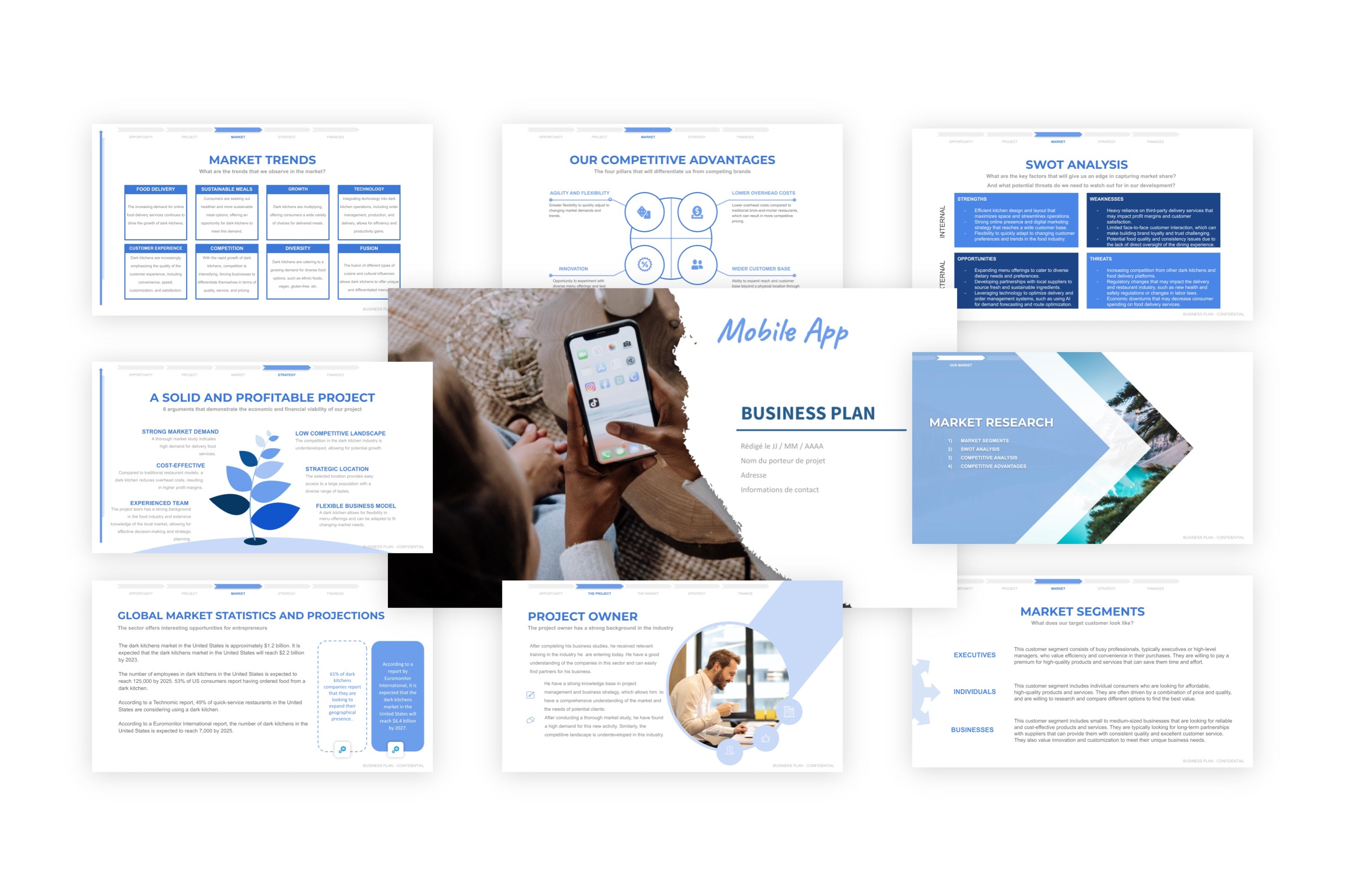
Starting a mobile app development project is a great idea because it allows businesses to reach a larger audience with their product or service, and it gives users the convenience of being able to access the app from anywhere on their mobile devices.
But, first thing first, you need to write a business plan.
A business plan is essential for any project, especially for mobile app development. It outlines the goals, objectives and strategies needed to successfully launch the app. It also helps to identify potential risks and provides a roadmap for the project's success.
In short, a good business plan will help ensure the profitability of your mobile app development project .
What are the essential parts of a business plan for a mobile app development project? What is the recommended format? Which important financial measures should be there? What's the best way to create a business plan quickly and effectively?
Please, find comprehensive answers to all these questions below.
Also, please note that starting your business plan from scratch is not mandatory.
You can download our editable business plan for a mobile app development project and adapt it to your project.

How to prepare a business plan for a mobile app development project
Is it worthwhile to invest time in a business plan for your mobile app development project.
Yes, you should invest time in a business plan for your mobile app development project to ensure the success of your project.
Formulating a comprehensive business plan will allow to:
- get familiar with the mobile app development market
- stay on top of the industry's emerging trends
- identify what makes a mobile app development project solid and successful
- understand the target audience's requirements and preferences for mobile applications
- come up with a unique value proposition for your app
- analyze competitor target markets
- identify solid competitive advantages for your mobile app development project
- find a business model that will generate positive cash flows
- implement a well-structured and calculated action plan
- evaluate risks associated with a mobile app development project, including technical challenges, user privacy, and market competition
Our team has created a business plan for a mobile app development project that is designed to make it easier for you to achieve all the elements listed.
How to outline a business plan for a mobile app development project?
A business plan is filled with facts, figures, and indicators. It must be presented in a structured format, to make easy to read and digest.
When we built our business plan for a mobile app , we took care to arrange it appropriately.
The content is arranged in 5 sections (Opportunity, Project, Market Research, Strategy and Finances).
1. Market Opportunity
The introductory section has been named "Market Opportunity".
This section presents a comprehensive report on the mobile app development project, including key data and metrics to guide your decision-making.
We continuously update all the data there.
2. Project Presentation
The second part is dedicated to the "Project" of your mobile app development project. Here, you can outline the purpose and functionality of your app, target user demographics, user interface and experience design, development timeline, app store submission plans, and the unique value proposition that solves a specific problem or provides a unique solution for users.
Remember to introduce yourself at the end of this section.
Discuss your expertise in mobile app development, your range of services, and how you plan to provide innovative and user-friendly app solutions to clients. Highlight your track record of successful projects, your skilled team of developers, and your dedication to delivering seamless and engaging mobile experiences that meet the needs and expectations of users through your mobile app development project.
You'll find wording already provided in our business plan. Tailor it to fit your concept exactly.
3. Market Research
Next up is the "Market Research" section.
In this section, you will find a detailed market segmentation analysis for your mobile app development project.
It includes a presentation of other mobile app development companies in the industry that will be competing with you. Your project's unique app features and competitive advantages are also highlighted. A customized SWOT analysis is included.
4. Strategy
In the "Strategy" section, you will find a detailed growth plan for your mobile app development project, outlining all the necessary steps and initiatives to ensure its high profitability.
Furthermore, there is a marketing strategy, a risk management strategy, and a Business Model Canvas that has been filled in, all included in this section.
5. Finances
Ultimately, the "Finances" section provides a comprehensive view of the financial aspects and metrics of your project.

How to write an Executive Summary for a mobile app development project?
The Executive Summary is like an introduction to the business plan for your mobile app development project.
Keep it brief, not exceeding 2 pages. Stick to the crucial points.
When you show your business plan to an investor, this is what they will read first. It needs to get their attention and make them want to read the rest of the plan.
In the Executive Summary of your mobile app development project, answer these questions: what is your mobile app development project about? who is your target audience? are there any similar projects in the market? what makes your project unique? how much funding do you require?
How to do the market analysis for a mobile app development project?
The market study of your mobile app development project helps you understand external factors such as customer demands for mobile applications, competition within the app development industry, and emerging trends in mobile technology.
By conducting an extensive market study, a mobile app development project can understand user needs, offer innovative and user-friendly mobile app solutions, optimize pricing strategies, and execute targeted marketing campaigns, ultimately leading to increased user adoption, app downloads, and a prominent position in the mobile app industry.
This is what we've outlined in the "Market Research" section of our business plan for a mobile app :
- interesting data points and market insights about mobile app development, including app usage trends, app market revenue, and the growth of app-based services
- a list of potential customer segments for a mobile app development project
- the competitive research
- the competitive advantages for a mobile app development project

The key points of the business plan for a mobile app development project
What's the business model of a mobile app development project, business model of a mobile app development project.
A mobile app development project's business model revolves around creating and monetizing mobile applications for specific platforms such as iOS or Android. Revenue can be generated through app purchases, in-app advertising, in-app purchases, or subscription models.
The business model focuses on identifying market needs or gaps, designing user-friendly and engaging apps, developing robust and scalable code, testing and optimizing app performance, and implementing effective monetization strategies.
Success depends on market research, delivering high-quality user experiences, effective app marketing, regular updates and improvements, and staying responsive to user feedback and evolving industry trends.

Business model ≠ Business plan
Please don't mix up the terms "business plan" and "business model."
A business model outlines the way a company creates value, generates revenue, and operates.
In a business plan, you demonstrate your business model using a structure called the Business Model Canvas.
Rest assured, we provide a Business Model Canvas in our business plan for a mobile app .
How do you identify the market segments of a mobile app development project?
Market segmentation for your mobile app development project involves dividing your potential clients into different groups based on their app development needs, industries, and target audience.
These categories may include factors such as iOS app development, Android app development, gaming apps, or clients from specific industries (e.g., healthcare, finance, education).
By segmenting your market, you can offer specialized app development services and solutions that cater to each segment's specific requirements. For example, you might provide iOS app development services and design user-friendly and intuitive interfaces for Apple device users, offer Android app development services and optimize apps for a wide range of Android devices and versions, specialize in gaming app development and create immersive and engaging gaming experiences, or develop industry-specific apps tailored to the needs of clients in sectors such as healthcare, finance, or education.
Market segmentation allows you to effectively target your marketing efforts, showcase your app development expertise, and deliver high-quality and customized mobile app solutions that meet the unique needs of each client segment.
In the business plan for a mobile app , you will get a detailed market segmentation, helping you understand your target audiences and their needs.
How to conduct a competitor analysis for a mobile app development project?
Without surprise, you won't be the only mobile app development project in the market. There will be other developers working on innovative and user-friendly mobile applications.
Your business plan should encompass an extensive market study that examines your competitors' characteristics, strengths, and weaknesses.
Address their weaknesses (such as inefficient app development processes, lack of user testing, or poor app performance).
Why should you focus on these elements? Well, these weaknesses can hinder the success of mobile app development projects. By addressing these aspects, you can offer innovative and user-friendly app designs, provide efficient and reliable app development and testing processes, and deliver excellent customer support, positioning your mobile app development project as a trusted and preferred choice for businesses and individuals seeking high-quality and functional mobile applications.
It's what we call competitive advantages—building them is key to standing out in the market.
Here are some examples of competitive advantages for an app: user-friendly interface, innovative features, regular updates and improvements.
How to draft a SWOT analysis for an app?
A SWOT analysis can help identify potential strengths, weaknesses, opportunities, and threats that can inform the development of a successful mobile app.
As you can guess, there is indeed a completed and editable SWOT matrix in our business plan for a mobile app
The strengths for a mobile app development project
When we talk about the "S" in SWOT, we mean Strengths, which are the project's positive attributes or advantages.
For a mobile app development project, possible strengths could include a user-friendly interface, comprehensive testing, scalability, and a secure back-end system.
The weaknesses for a mobile app development project
The "W" stands for Weaknesses, referring to the areas or aspects of the project that need to be addressed.
In the case of a mobile app development project, potential weaknesses could include an inexperienced development team, lack of proper project management, and poor quality assurance processes.
The opportunities for a mobile app development project
O represents Opportunities in SWOT, referring to the external factors or conditions that can create opportunities for the project's advancement.
In the case of a mobile app development project, potential opportunities include creating a social media app, a productivity app, a gaming app, and a shopping app.
The threats for a mobile app development project
When we mention the "T" in SWOT, we're referring to Threats, which are the external risks or negative factors that can impact the project's performance.
How to craft a marketing strategy for an app?
A marketing strategy plays a pivotal role in a business plan as it defines how a business will entice customers and generate sales.
An app can attract users by implementing a well-crafted marketing strategy that showcases its unique features, user-friendly interface, and how it solves a specific problem or meets a particular need.
Users won't choose your app without effective marketing; highlighting its features, usability, and benefits is necessary.
Have you explored marketing approaches to attract customers to your app? Consider optimizing your app store presence, running targeted advertising campaigns to reach your target audience, and utilizing social media platforms to engage with users and receive feedback.
No worries if you don't know anything about marketing and communication.
How to build a 3-year financial plan for an app?
A solid business plan must include detailed financial information such as projected income, expenses, cash flow, and balance sheets.
When creating your business plan, you must include anticipated revenue figures for your mobile app development project.
To earn the trust and confidence of potential investors, it's crucial to have revenue projections in your business plan that are based on believable and well-founded assumptions.
Our financial plan for a mobile app is straightforward and equipped with automated checks, enabling you to validate and adjust your assumptions easily. This way, we make sure you're building solid financial projections.
It goes without saying that you'll have to develop a provisional budget for your mobile app development project. Pay attention to every expense and don't leave any out (our financial plan includes a complete list for your convenience).
The break-even analysis is central in the financial plan as it will tell you whether your mobile app development project will generate profits or not.
- Choosing a selection results in a full page refresh.
- Opens in a new window.
eCommerce & CMS

- Know who we are
- Our Executive Team
- Client Speaks
- Vision and Mission
- Infrastructure
- Certifications and Alliances
- Company Profile
- Partner with Us
- Development Process
- Delivery Methodologies
- Pricing Methodologies
- Quality Policy
- Confidentiality
- Job Opportunities
- Life @Prismetric

Beyond the Pitch Deck: Crafting a Compelling Mobile App Business Plan for Your Startup
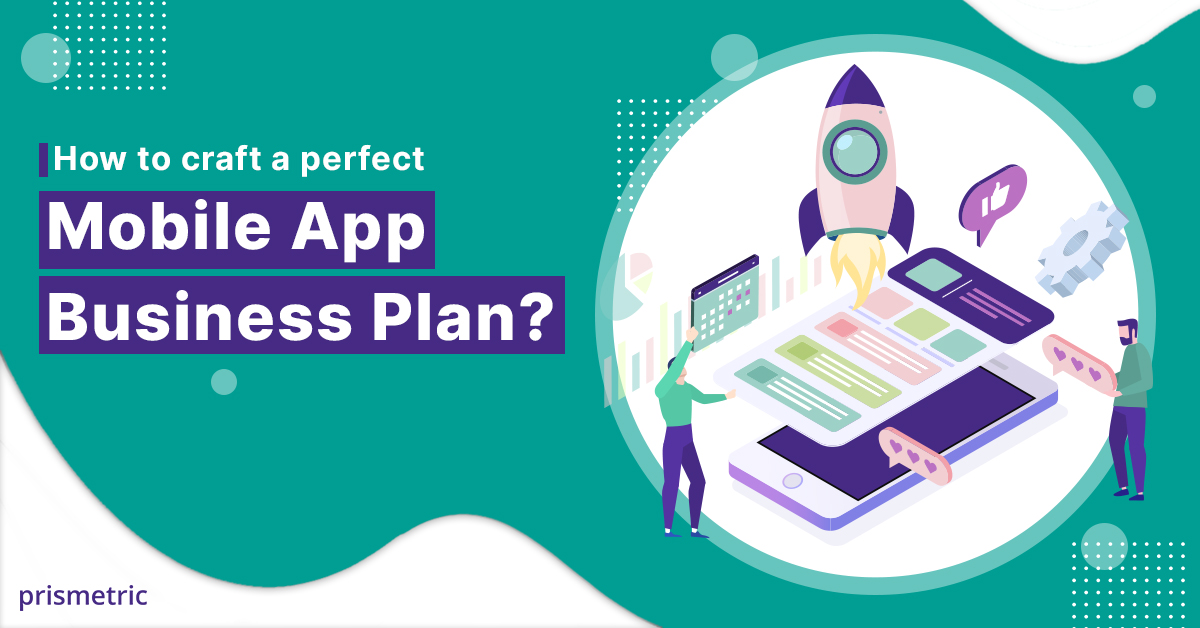
Summary: As the technology evolved, an array of business opportunities got unlocked; icing to the cake are multiple startup funding options that encouraged younger entrepreneurs to venture into several business startups. One of the most lucrative startup businesses today is the mobile app business, wherein you own a mobile app for a specific niche or service and enjoy money-spinning returns. In this guide, we shall talk about crafting a compelling business plan for your startup app. What are the core elements, how to write a mobile app business plan, what could be a marketing plan for your mobile app startup business, and many other essential factors.
Mobile applications have become a part of anyone’s personal and professional life. The changing habits of millennials about shopping online and ordering services through mobile phones have pushed service and product industries to have mobile applications for their convenience. Statista, a research giant portal, quotes several statistics about mobile applications that can impress anyone to think of mobile app business in this digital era:
- Global mobile application downloads in 2023 reached 257 billion
- Average consumer spending on mobile apps in Q3 2023 reached USD 5.05
- In Q4 2023, the total value of global consumer spending on mobile apps touched a whopping figure of USD 70 billion worldwide
- The mobile applications are projected to cross USD 613 billion in revenues by 2025
These statistics are alluring enough to draw anyone’s eyeballs to have a mobile app for their business. So, now you need the answer to what to do if you have an app idea? Of course, based on your funding requirements, you need to think of the next step. If you have made up your mind to raise some funds, you need a foolproof business plan for startup app.
Table Of Content
What is a mobile app business plan?
Why is a mobile app startup business plan essential, core elements of a business plan for a mobile app, how to write a mobile app business plan, tips to write a successful mobile app business plan.
Let us delve deeper into it.
A business plan is a document that outlines the purpose and features of your mobile app. Also, it includes the targeted audience/user/customers and revenue model along with a strategic marketing plan for your app. A mobile app business plan for startups helps define the idea clearly and communicate it clearly with potential investors and partners.
It is an essential document for startup mobile app funding that can make a difference in helping entrepreneurs get the desired funds. The better planned and described the whole document is, the better the investors will receive it.
First thing first: for a perfect mobile app startup business plan, you should mind the following factors:
- A clear vision and goals for your app : What problems does your app solve? Who and where are your users? What are the benefits of using your mobile app? What are the measurement criteria for your app’s success?
- A well-researched and realistic business plan : How will you execute the mobile app development, and how will you launch and maintain your app? How much does mobile app development cost? What is your app monetization plan? What could be the risks and challenges of your mobile app business?
- Mistakes to avoid when creating a business plan : A business plan for your mobile app should not have unrealistic assumptions or projections. You should not ignore the competitors or the latest market trends. Also, do not overlook any legal, regulatory, or ethical issues. Lastly, you should test and validate the app idea with real users to avoid failures.
As an entrepreneur, you may go through our comprehensive mobile app development guide to get a fair idea of how a mobile app is built based on the requirements provided.
While mobile app businesses can get you an easy flow of revenue, it is only when the product is successful. Despite the abundance of mobile phone users, more than 90% of mobile applications fail to achieve their revenue goals for one reason or another.
Let’s first look at the importance of a plan for a startup app:
- Guides Strategic Direction: A business plan outlines the vision, goals, and target market for the mobile app, providing a roadmap for success.
- Defines Revenue Model: It clarifies how the app will generate revenue, which is crucial for sustainability and growth.
- Shapes Marketing Strategy: A well-defined plan helps in crafting an effective marketing strategy to reach and engage the target audience.
- Establishes Competitive Advantage: Identifying strengths and unique selling points helps differentiate the app from competitors.
- Attracts Funding: A comprehensive business plan increases investor confidence and attracts diverse funding sources.
- Mitigates Risks: By outlining potential challenges and strategies to overcome them it minimizes the risk of failure.
- Builds Confidence: Having a solid plan instils confidence in investors, partners, and stakeholders, increasing the likelihood of success.
Having a business plan for mobile app startup proves to be an essential strategy for your startup success as it helps you define several vital aspects of your app:
- App target market,
- App revenue model
- App marketing strategy
- App competitive advantage
As entrepreneurs, it is always a better approach to have diversified funding sources for your startup and to present your idea to more than one potential investor or fund provider ; your mobile app business plan should be pitch-perfect.
If you know how to write a business plan for a mobile app, you will be able to attract multiple fund providers and target audience/customers who share the same vision as yours because, with such a plan, they would believe in your product. It is also essential to know about the top mobile app funding trends . Without a proper business plan for a mobile app, you might put your time, money, and resources at risk.
Interested in building an app for your Startup business?
A business plan for a mobile app is a document that outlines the goals, strategies, and feasibility of developing and launching a new app in the market. It helps to communicate your app’s value proposition and competitive advantage to stakeholders and potential investors.
A business plan for a mobile app typically includes the following core elements:
- Executive summary
Market Analysis
Product overview, company overview, marketing plan, financial plan.
- Risk Mitigation Strategies (RMS)
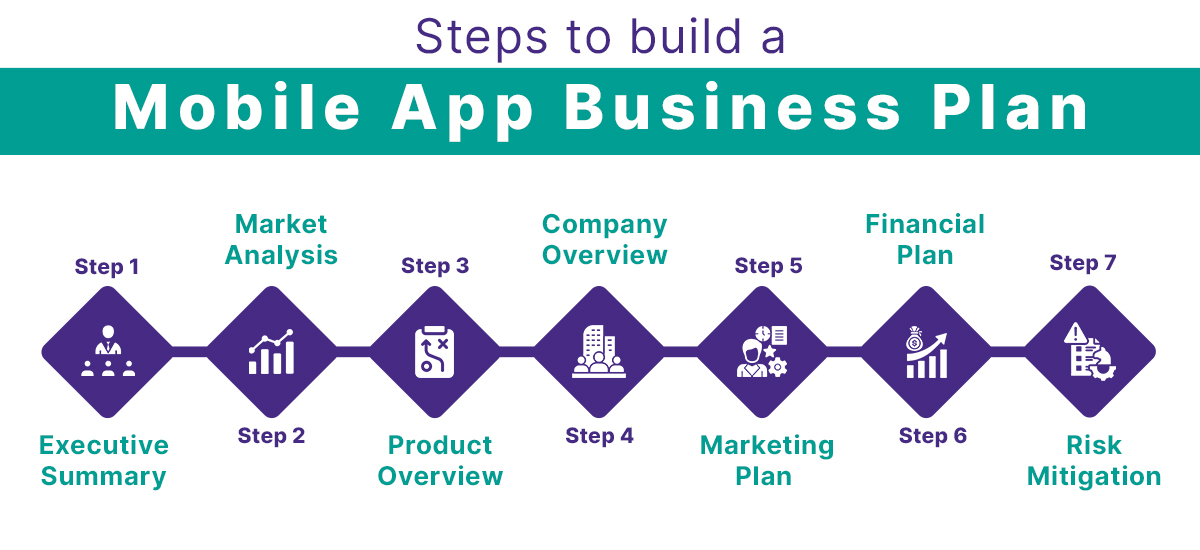
Writing a business plan for a mobile app requires you to follow specific steps with logic and emotions. The purpose is to convince the reader (investors) and give them confidence in your app business.
Executive Summary
This is a brief overview that covers the main points of the mobile app startup business plan. It may include the concerns that the app can address, the targeted market, revenue model/funding requirements, and the unique features or benefits of the product.
An executive summary in a mobile app business plan is simply an outline or a glance at your business venture. The reader should get a glimpse just by reading the executive summary. The executive summary can be further divided into three categories: summary, UVP, and target or objectives.
- Summary : The summary is a concise and compelling text that showcases a startup business plan to grab the attention of readers and provoke them to read ahead.
- UVP : The UVP (Unique Value Proposition) is the core message of your app business plan. UVP makes the app different from the rest and mentions why target users should opt for this app over other alternatives.
- Targets/Objectives : The targets/objectives mention the specific and measurable results you want to achieve through the app business in a specific timeframe. Whatever you mention should align with the UVP and particular market needs.
One of the critical aspects of crafting a compelling business plan for a startup app is to find out your targeted users and competitors with their unique value proposition. This helps you understand your potential customer’s needs and preferences.
Here are some steps that help you conduct market research and analysis for your app business with an example:
- Define the purpose : Identifying the problem or opportunity that your app business aims to solve or address will help you narrow down the scope and concentrate on a particular segment.
- Gather enough data : Researching to gather existing data and information about a specific industry and its market size to understand trends and customer behavior will overall help you understand competitors and their success.
- Ask the end-users : The best way to have a sure-shot startup business plan is to collect data and feedback right from the targeted customers or end users through tools and methods like surveys, interviews, focus groups, user testing, and polls.
- User segmentation : After gathering enough data, you should segment your target audience based on criteria such as demographics, psychographics, behavior, and geography.
- Market forecasts : The market forecast focuses on studying factors such as market size and demand as per the latest trends. The forecast shall also help you understand customer lifetime value (CLV).
- SWOT analysis: Conducting a SWOT analysis is one of the mandatory steps of a business plan for a mobile app. It evaluates the strengths, weaknesses, opportunities, and threats for your app business. Through SWOT, you identify competitive advantages and challenges as well as any external factors that might affect your business success.
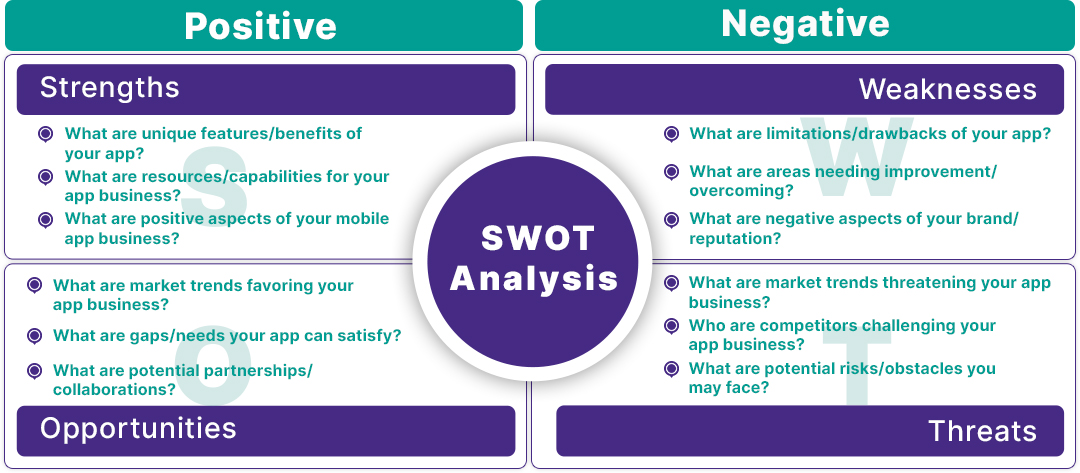
You can mention the app’s functionality, design, and user interface, along with probable user experience and technical specifications. The product overview also explains how the application is different from the competitors in the market by mentioning the value it could add to the users.
A product description is a brief summary of your product’s (a mobile app’s) main features, benefits, and monetization strategy. The reader or the investor needs to understand the product to build trust in the business plan. The product overview should include:
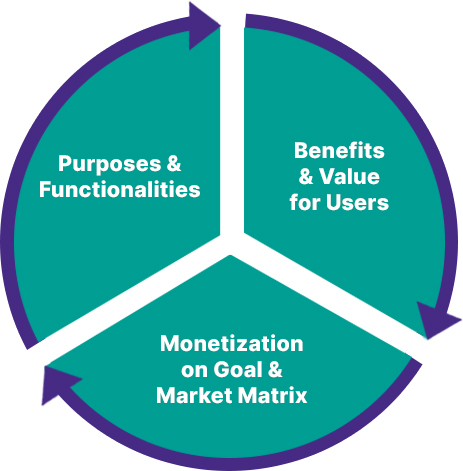
- App’s core functionality and purpose : You should mention the app’s main functions and why the app is built (the primary cause).
- App’s benefits and value for your users : The App’s benefits include showing what users will get with the app. For instance, for a fitness app, the user must be made aware of how the app will benefit them, keeping their mental and physical status optimum.
- App’s monetization model as per app’s goals and market : To investors and you, business does matter. How the app business works, earns money and sustains the tough market should be reflected in this overview.
One of the most essential factors in a mobile app business plan is a summary of the company by mentioning its background, mission, and vision. The organization overview introduces the team members and their roles, along with technical/marketing skills and qualifications.
The brand identity matters, and therefore, it is essential to include a thorough detail of the firm, agency, organization, or company. Startups in mobile app businesses should clearly define their company’s details.
- Overview : Mention the company, its origin, whose brainchild it is and what its vision and mission are.
- Team and advisory board : You should mention the board of directors, MDs, CEO, and other authorities as a team and advisory board in detail.
- Timelines and milestones : Defining the startup app business plan in phases such as timelines and a breakdown of short-term goals and long-term goals, will give readers a fair idea about how the app business shall grow and achieve its target.
Another aspect of having a mobile app startup business plan is to include a comprehensive analysis of the market opportunity by showcasing research on customer segments, competitors, and the latest trends for the app.
The detailed plan for marketing ideally outlines the marketing strategy and tactics through various social media channels as per specific budget and metrics to promote and distribute the app to the targeted customers.
Companies need proper marketing to sustain the competition. Marketing helps companies reach the targeted customers and inform them about the products and services while convincing them to buy. Mobile app businesses also focus on engaging and retaining end users for success.
- Outline objectives, strategies, and tactics : Objectives are the goals you want to achieve with your app business, like an increase in downloads and user retention with enhanced revenue. Strategies include a plan to target a specific market segment and create a unique value proposition. Tactics refers to specific actions that are used to execute a strategy.
- Promotion of the app : You need to identify your targeted users and their needs, find them, and communicate the benefits and features of your app compellingly and engagingly.
- Marketing performance metrics : For your mobile app startup business plan, you need to define key performance indicators (KPIs such as number of downloads/installs) that go with your vision and check them regularly.
A financial plan is the backbone of a business plan for a mobile app. It is a projection of the income statement and cash flow statement stated through a balance sheet and breakeven analysis. The plan preferably includes the assumptions along with sources and proper utilization of funds to develop and launch the application.
A financial plan is an essential part of a mobile app business plan because it helps you estimate your product’s revenue, expenses, and profitability. The plan enables you to evaluate the feasibility and viability of the app business idea; additionally, you pitch it to attract fund providers.
Here are some steps to create a financial plan for your app:
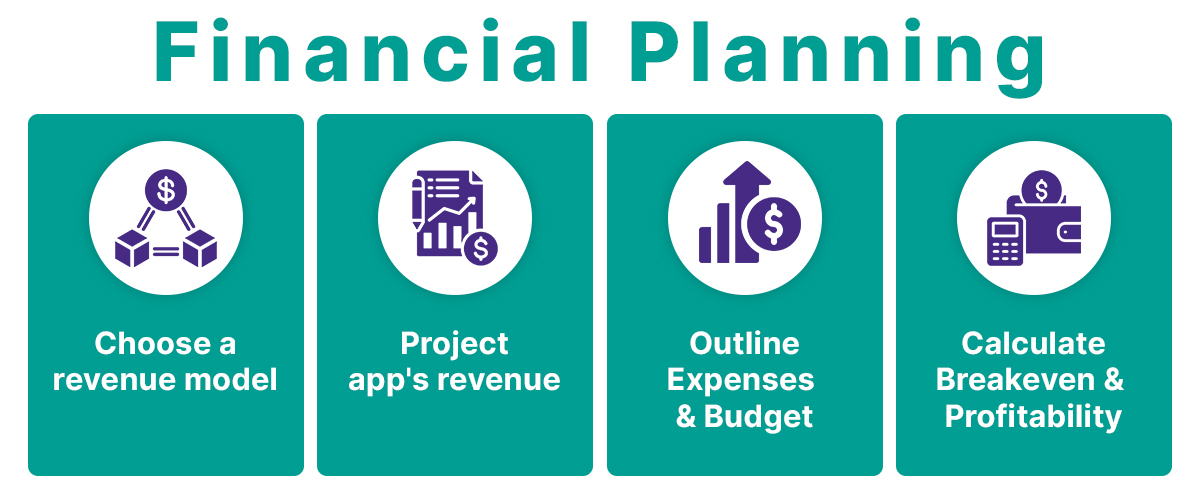
- Choose a revenue model : Choose from different methods to monetize your app. It could be an in-app purchase, subscription, advertisement, or freemium model.
- Project your app’s revenue : You should estimate how many users will download and use your app, how much they will spend or generate in revenue, and how long they will stay engaged with your app.
- Outline your app’s expenses and budget : In this, counting the costs of mobile app development , deployment, and maintenance of your app is considered. You may contact a mobile app development company for close-to-accurate estimation.
- Calculate your app’s profitability and breakeven point : Here, comparing your app’s revenue and expenses with market leaders to determine its profitability is mentioned. Also, it would be best if you represented how long it will take for your app business to reach the breakeven point.
Risk Mitigation Strategies
In a startup app business plan, RMS includes listing down the potential risks and challenges that may affect the success of the product and their remedies or precautions. The factors to include are possible technical glitches, legal issues, regulatory issues, market volatility, and operational issues.
Even if you have a well-thought-out startup business, many a times there is a chance that things might not work as properly as planned. For this reason, risk mitigation strategies for startup apps are considered to be a critical aspect of a business plan.
This is to ensure that even if the startup may face some challenges, the entrepreneur is already prepared and thought about a way out. Some potential risks of mobile app startup business are:
Low user retention
Many users download apps but seldom use them. They are likely to uninstall them quickly. This affects the app’s revenue and growth potential.
Solution: Work on UI/UX. Conduct thorough research on peers – what they do and what their apps look like for retention.
High competition
The mobile app market is saturated with hundreds of similar or alternative apps as yours. This can make it hard for your startup app business to stand out and attract users.
Solution: Intense market research of trends and user expectations is needed. Come up with unique features and functionalities in your product.
Security breaches
Mobile apps store and transmit crucial data like personal information and payment details, which exposes them to cyberattacks or data leaks that harm users and the app’s reputation.
Solution: Spend a special budget on building multi-tier security measures and unbreakable digital walls.
Legal issues
Mobile apps have to comply with various laws and regulations, such as privacy, intellectual property, or taxation. This can create legal liabilities or fines if the app violates any of them.
Solution: Find a legal advisor who knows in and out of local and international mobile apps or digital trading. Get certificates/licenses. Spend a special budget on compliance. For example: HIPAA for medical apps.
Need help with business plan for your Startup App?
Let us glance at the entire process. Here is a quick look at what you need to do for the plan.
Closing thoughts on mobile app business plan
The conclusion of a mobile app startup business plan should summarize the main points of the document and highlight the value proposition of the app. The gist should also include a CTA (call to action) for the reader or investor so that they are invited to take action.
Once you have aced the funding dilemma, you need to keep up the good work going by knowing how to scale a startup .
Ready to build a mobile app to lead the market?
You must be thorough with how to write a mobile app business plan by now. So, you have an app idea and also know how to pitch your deck to investors and users. It is suggested that while making the pitch-perfect business plan for your mobile app, you should have a tech partner by your side to help you make the business plan foolproof.
We are a renowned mobile app development company that can help you draft the technical aspects and get you an estimated budget for your dream product.
Contact us now , and together, we can make your dream come true.

He is the Co-Founder and CEO of Prismetric . An enthusiastic entrepreneur, interested to discuss new app ideas, rich gadget tricks and trends, and admires signature tech business styles to readily embrace. He enjoys learning most modern app crafting methods, exploring smart technologies and passionate about writing his thoughts too. Inventions related to mobile and software technology inspire Ashish and he likes to inspire the like-minded community through the finesse of his work.
Get thoughtful updates on what’s new in technology and innovation
Related Articles
- Best Practices to Follow During Design a Mobile App
- Must-have Features in User-Friendly Mobile App
- Everything About Mobile App Maintenance
- Mobile App Development Trends in 2024
Streamline your operations and grow your business by getting the best application built
Our Recent Blog
Know what’s new in Technology and Development
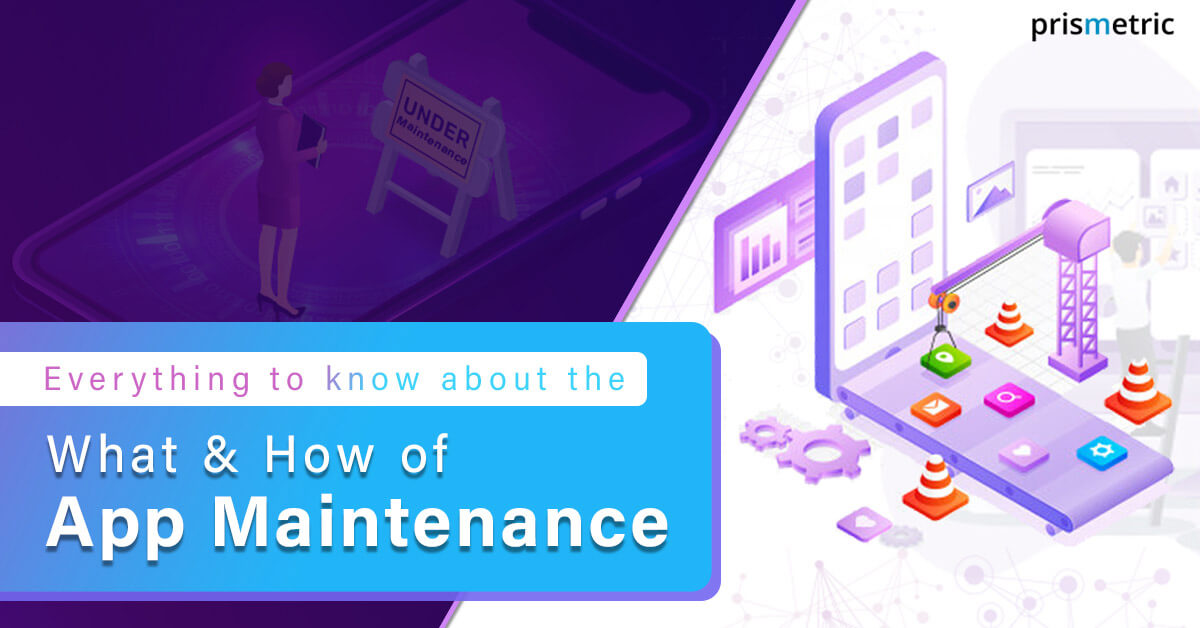
Everything You Need to Know About Mobile App Maintenance
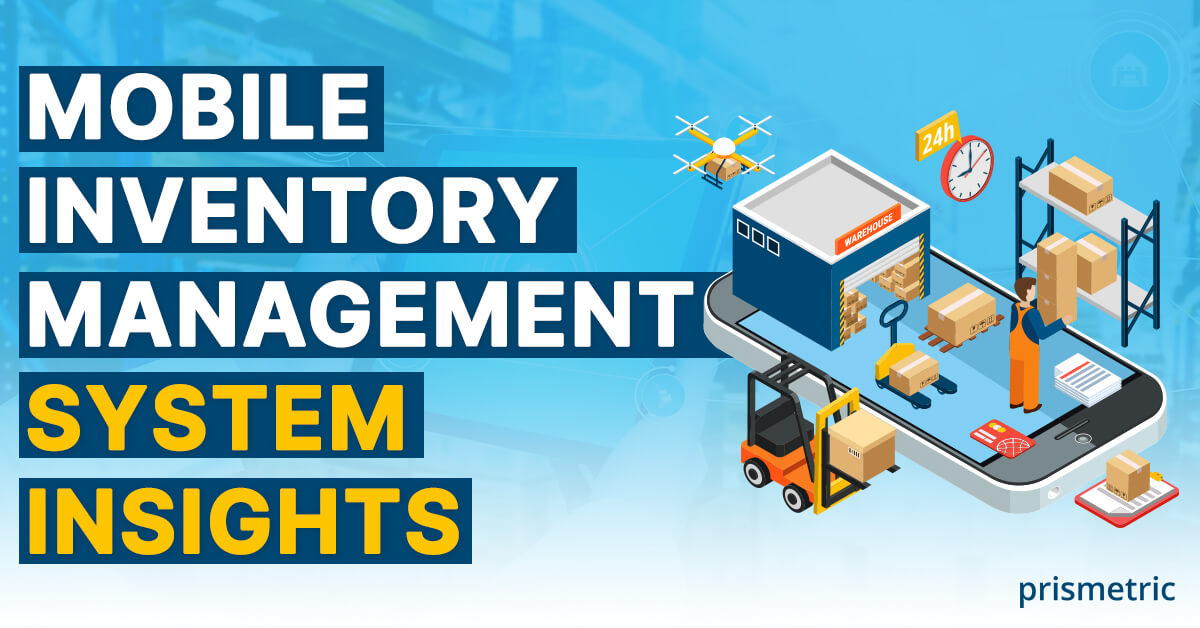
Mobile Inventory Management System: A Comprehensive Overview
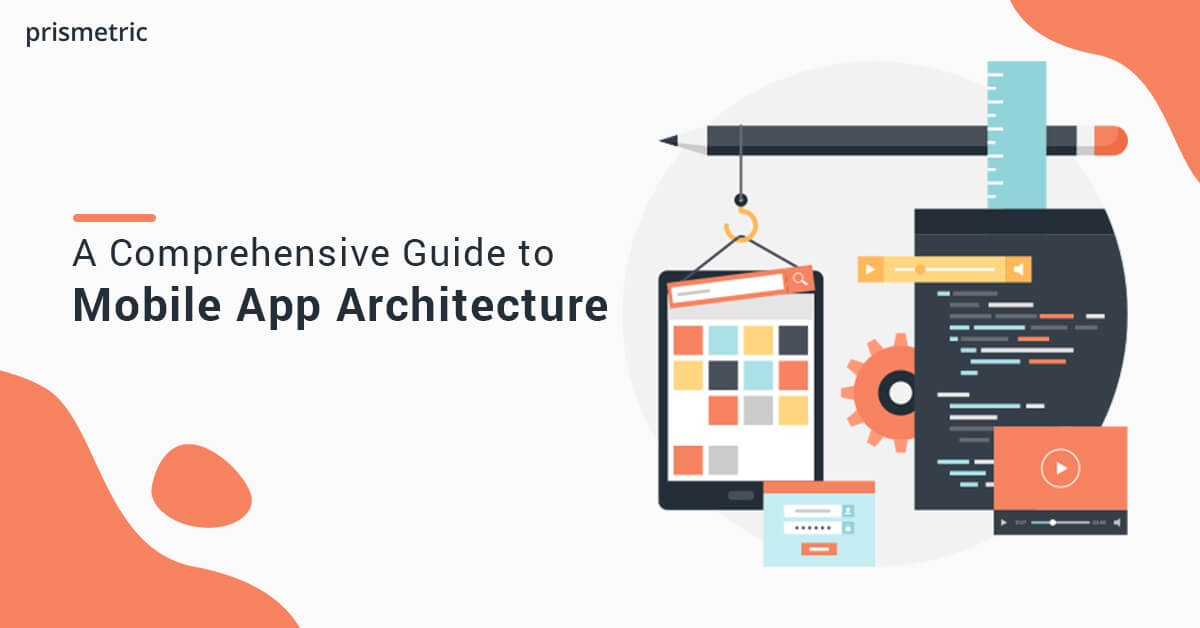
Mobile App Architecture: A Comprehensive Guide
Have a question or need a custom quote.
Our in-depth understanding in technology and innovation can turn your aspiration into a business reality.
Please leave this field empty.
Connect With US
Mobile and Web App Business Plan Template
Introducing our free mobile app business template! Streamline your app development process with this easy-to-use template designed for entrepreneurs and startups. From market research to revenue projections, our template includes all the essential components for crafting a successful mobile app business plan. Download it now and get started on the path to app development success!

Download the template today!
The world is in the midst of a mobile revolution, and mobile apps have become an integral part of our daily lives. With the growing popularity of mobile devices, developing a mobile app has become a lucrative business opportunity for entrepreneurs and startups. However, building a mobile app from scratch can be a daunting task. That's why we're excited to offer our free mobile app business template, designed to make the app development process simpler and more efficient.
Features of the App Business Plan Template
Our mobile app business template includes all the essential components for crafting a successful mobile app business plan. Here are some of its key features:
- Market Research - Before developing an app, it's important to conduct market research to identify the needs of your target audience, understand your competitors, and assess the demand for your app. Our template includes a comprehensive market research section to help you conduct a thorough analysis of the app market.
- Business Model - Choosing the right business model is crucial to the success of your mobile app. Our template offers a variety of business models to choose from, including freemium, subscription, and in-app purchases. We'll guide you through each option and help you decide which one is best for your app.
- Revenue Projections - Estimating the revenue potential of your app is a key step in the planning process. Our template includes a revenue projections section that helps you forecast your revenue streams and expenses, so you can make informed decisions about your app development strategy.
- Marketing Plan - Once your app is developed, you need to get the word out and attract users. Our template includes a detailed marketing plan section to help you create a comprehensive strategy that covers all the essential marketing channels, such as social media, email marketing, and search engine optimization.
Benefits of Using Our Template
Using our mobile app business template provides a range of benefits, including:
- Saves Time and Money - Developing a mobile app is a time-consuming and costly process. With our template, you can save time and money by streamlining the planning process and creating a more efficient development strategy.
- Provides Clarity and Focus - Our template provides a clear roadmap for app development, helping you focus on the essential components and avoid unnecessary distractions. This helps you stay on track and achieve your goals more effectively.
- Increases Your Chances of Success - A well-planned and executed mobile app has a greater chance of success in the market. Our template provides you with the tools and resources you need to develop a successful mobile app business plan and increase your chances of success.
Our free mobile app business template is an essential resource for entrepreneurs and startups looking to develop a successful mobile app. With its comprehensive market research, business models, revenue projections, and marketing plan sections, you can create a detailed plan that sets your app up for success. Download our template now and start your journey to app development success!
Mobile App Business Plan Frequently Asked Questions
Q: why do i need a mobile app business plan.
A: A mobile app business plan is essential to the success of your app because it helps you identify your target audience, understand the market, and develop a clear strategy for success. Without a plan, you risk wasting time and resources on an app that may not meet your goals or resonate with your target audience.
Q: What are the essential components of a mobile app business plan?
A: A mobile app business plan should include market research, a business model, financial projections, and a marketing plan. These components provide a comprehensive roadmap for app development, including identifying your target audience, assessing the demand for your app, estimating your revenue potential, and creating a strategy for attracting and retaining users.
Q: How can a mobile app business plan help me secure funding for my app?
A: Investors and lenders are more likely to fund your app if you have a well-crafted mobile app business plan. A comprehensive plan demonstrates that you have a clear understanding of the market, a viable business model, and a strategy for generating revenue. By showing your plan to potential investors, you can demonstrate that you have a solid plan for success and increase your chances of securing funding. Having strong financial projections are key to securing funding. Use a mobile app financial projection template can make this process easy.
We Know a Good Business Plan When we See One
Collectively, our team has reviewed thousands of business plans and has nearly 20 years of experience making SBA loans. We've also helped more than 50,000 businesses create financial projections across many industries and geographies.

Adam served as Executive Director for a SBA microlender in Indiana for over 10 years helping businesses and reviewing thousands of business plans.
.png)
Grace has built hundreds of custom financial models for businesses as well as our projection templates which are used by thousands of businesses every year.

Kyle served as an SBA loan officer for 7 years working directly with startups and business owners to review their business plans, projections, and prepare their loan package.
Lorem ipsum dolor sit amet, consectetur adipiscing elit.
The Art of Creating a Pitch Deck Team Slide

The Startup’s Guide to Hiring a Pitch Deck Writer

The Airbnb Pitch Deck: An Expert Breakdown

Expert Tips: How To Launch A Startup

- Building A Startup
How To Write The Best Investor-Ready Mobile App Business Plan
When it comes to launching an app startup, having a strong mobile app business plan is important. In the beginning, an app startup business plan helps you plot out your ideas and view your business across several perspectives. During the funding stage, having a business plan becomes a key piece in showcasing the details of your app startup to investors. Writing a business plan can seem difficult – there are many factors to consider and it isn’t easy turning it all into one cohesive strategy. A Google search on business plans pulls up a million different opinions, and 5,000 different templates. Selecting which is the “right” template to use can prove to be tricky, and taking the wrong advice can prove harmful to your funding efforts.
Here at ThinkLions, we’ve written hundreds of mobile app business plans and have worked with entrepreneurs across the world to develop strategies that have raised millions of dollars in seed funding. If it’s one thing we know, it’s business plans for apps – and we want to teach you everything there is to know! While it would take us years to write up everything we have learned over our many years of business, in this post, we’ll give you some really awesome tips to help you draft the perfect mobile app business plan.
Do I Need A Mobile App Business Plan?
While opinions vary on whether app startups need business plans, in our experience, it’s always useful. In essence, a business plan will effectively present your app idea and tie together multiple operational elements to create the story of how your business will grow from an idea to success. Business plans come in handy across many situations when trying to present your app idea to another person. Here are a few examples of previous clients who were definitely happy that they went through the mobile app business planning process:
- James was a solo entrepreneur when he asked us to write his app idea business plan. When he hired us for business planning services, his goal was to submit his business plan to a local startup incubator that would help grow his business. The incubator rejected him because they only accepted teams with two or more founders. James was later introduced to an interested tech-entrepreneur who already had two mobile applications launched in the market. Chris, the entrepreneur, was interested in James’ idea and asked him for his business plan so he could understand it better. Luckily for him, James already had one handy. James never made it to the incubator; instead, Chris partnered with him 50/50 and funded the launch of his app idea!
- An app startup team approached us last year with the idea of launching an app in the financial space. Initially, they wanted a financial app business plan so that they could understand their business and market better. After the plan was completed, they submitted it to gain entry into a Pitch Competition. With some consultation, they landed first place in the competition and earned $10,000 towards developing their app. Furthermore, an investor in the audience was so impressed with their pitch and pitch deck , that they offered a seed funding of $75,000 in exchange for early ownership in the business.
- Kelly had launched a bare-bones app for pet owners, along with 6 of her friends. While they all had invested money, they had no idea what to do going forward. Members of the team were spending money irresponsibly on any trendy marketing technique, and they had no cohesive strategy to move forward. After working with ThinkLions, Kelly was able to clearly identify a niche market and come up with a plan to reach this market with her app. With a plan, the team was quickly able to stay on track and increased registrations to their app by over 100% in less than 60 days. After updating their document with new achievements, Kelly’s team was able to secure a seed funding investment of $25,000 from a local investor.
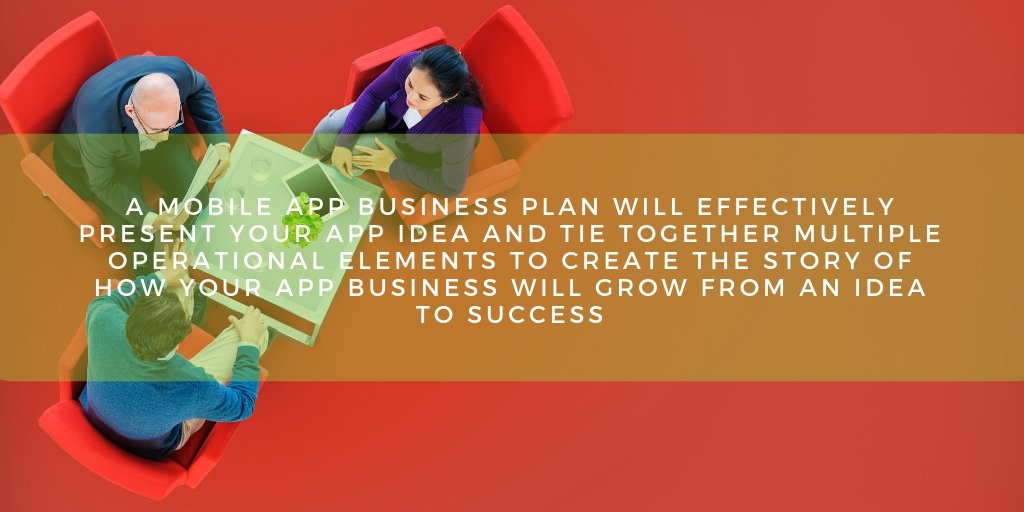
A business plan ensures that you know specific things about your business, before seeking funds or going into the development stages. Writing the best business plan early on can save you the headache of rushing to write one when an interested investor says, “Sounds good, let me see your plan!”
The Main Components
Sometimes, specific business plan layouts are required when seeking funding from investors, incubators, and banks. Some require different information to be present and may require different formats . Generally, however, there are several particular sections that will be included in some form, no matter what the layout. Even with our international clients, we have found that these informational categories are still pertinent.
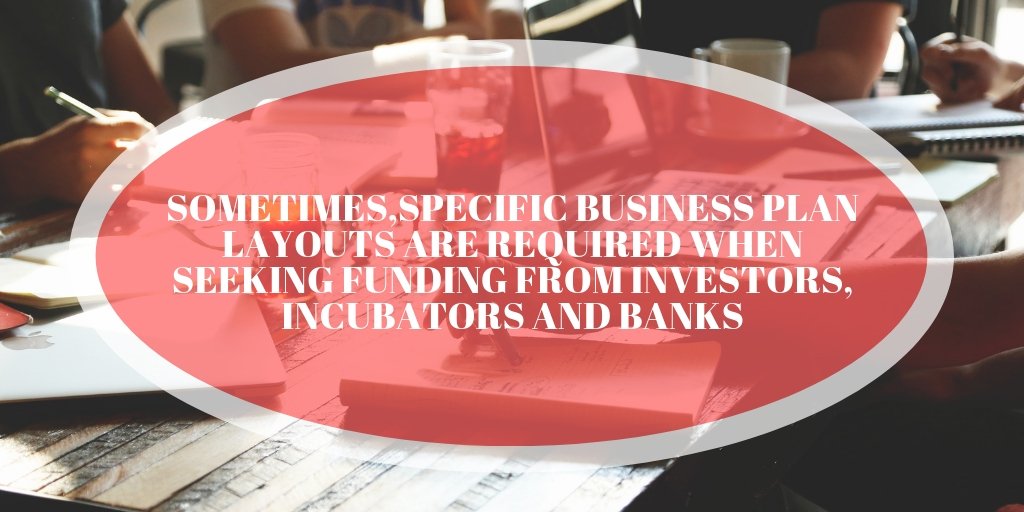
You won’t be hard-pressed to find a business plan template online. Instead of simply giving you the structure of an app startup business plan, I thought it would be more informative to use my experience and summarize the thought process of each of these sections. Knowing how to approach this information will help you feel more confident when you begin writing out the details for your own business plan.
Executive Summary
Although written last, most plans begin with an executive summary. By most definitions, an executive summary would be a short version of each section of your business plan. I agree… sort of. A great executive summary DOES summarize all the important details of your business into just a couple of pages, but furthermore, it should also be a persuasive and informative sales pitch . What are you selling, you ask? You are selling your worthiness for their attention .
Your executive summary should say, “This is a great app business. It’s bound to grow, it’s fun, it’s exciting, and it’s everything that you want to be a part of.” It should do this by the way, without exceeding two pages. The payoff for an executive summary is rarely an investment into your app business, but instead, it is an attention magnet to make readers curious for more.
Put all of your best details into the executive summary. Avoid any fluff. Make sure to highlight the business’ current achievements. Think of the executive summary like the back of a novel. Does it leave you anxious to dive in and read the rest of the book?
Business Description & Information
Use this section to explain your mobile app concept and introduce your business. This section includes information related to corporate values, objectives & goals, product description, and key success factors. The point of this section is not only to describe your business but to explain what your business has accomplished and what they plan to accomplish in the future.
Stick to the facts, but make sure the facts are worthy enough to put on the paper. It’s easy to go on and on about your idea and to explain 20 different functions that your app will have. In an app startup business plan though, stick to the things that make your app different or better suited to the market. Describe the problem that your consumers face and make sure that you implicitly show how your app will solve this problem.
Think of this section as the “What?” Every following section will be “How?”. Tell them what your app idea is in this section, and in the following sections, we’ll tell them how you’ll get that idea to the market, and eventually, to success.
Market, Customer Analysis
This research section is where you provide the background for your story. In this section, the mobile app business plan shifts from what you believe your app business is, to the hard data that proves your business is viable and that there is actually a need and demand for your solution.
Analyze your market through secondary research, industry surveys, market reports, and most importantly, first-hand primary research. Use your research to estimate how large your market is (by revenue or number of consumers, for example), and try to discover how the industry is performing, trending, and transitioning. During this process, we typically take the following steps:
- Customer Profile: First, we plot out who our target consumers are. We don’t just explain them, we give them a face and a name. We imagine who they are, what their life is like, what they do for a living, how much money they make, and the challenges they face. We also analyze how our solution can be used to help that specific customer – how they would find the app, why they would use it, how they would use it, etc. This allows readers to easily visualize what type of consumer we serve and how the app would fit into their life.
- Research: Now that we know what customers we serve, we move into the research phase. We take any pre-existing knowledge we have of the market and combine it with industry research to form a profile of the total market. We seek to identify how many people face the problem that we are trying to solve, where they seek information, how they currently solve their issue, and how much money they spend each year. With this information, we perform a TAM-SAM-SOM analysis to help us identify not only how many people are in our market, but how many of them we can realistically reach with the mobile app solution.
- Insights: Finally, we consider how all this research pertains to our app idea. Is there a real market? Are there enough people in the market, spending enough money? Would people pay to have their challenge solved? The entire point of the research section is to prove that a need exists for your particular app – have you proven it?
Marketing Strategy
At this point in your plan, you’ve detailed your awesome mobile app concept, identified a niche market, and proved a sufficient need within that market. Using this information, you now must decide how you will reach potential users, introduce them to your app, and persuade them to download and use it.
Investors want to know that there is a clarified growth strategy in place for getting your app to the market. The better you can explain this plan with clear steps, backed with accurate data, the more likely you are to persuade an investor to help fund the development of your app.
There are many marketing strategies and techniques available from PPC to social media, and beyond. Choosing which one is right for your business can be difficult. Start small, perform a SWOT analysis , introduce new solutions, and test your ideas. Over time, as you identify techniques that are working on a small level, scale them upwards and eliminate the strategies that aren’t showing potential.
Furthermore, look at your competitors and identify how they are successfully reaching consumers. The more you know about what has and has not worked for your competitors, the easier it will be to avoid the obstacles that they may have faced previously.
Competitive Analysis
If you haven’t heard this before, let me stress a very important point: No matter how innovative your app is, there ARE competitors. Maybe no other app offers exactly what you offer, but there is some other app, process, product, or service that consumers are currently using to solve their problem.
Knowing who your competitors are is important, but knowing their position and operation within the market is a vital key to building a successful business. Investors will want to know that you have detailed knowledge of your competitors and that you have identified valid methods to exploit their weaknesses through your product strengths; creating a path to position yourself ahead of them.
Operational Strategy
To be effective, it is vital to consider how your startup company will operate on a day-to-day basis and how you will build and maintain customer relations. This section will contain information related to how customer service will be handled, how quality assurance will be maintained, how your app will be developed, who will manage the business, and more.
In addition, this section will highlight the user process – how the user will behave from the moment they learn about your app until they spend their first dollar. One of the largest components of this section is the personnel plan, which outlines when and how employees will be hired; how their salaries will be expensed; and how their positions will help progress the business.
Management & Advisor Bios
As mentioned previously, investors heavily consider the abilities of the “team” behind the app startups that they fund. In this section of the mobile app business plan, these team members can be showcased, and their skills can be highlighted to prove that the team has what it takes to propel the startup to success. In addition to co-founders and board members, this section will allow you to explain different advisor relationships you have secured; valuable relationships with non-executive members who are successful in related fields who have agreed to consult and advise the founders as they launch and grow their business.
Financial Model
Once all of this information has been compiled (excluding the executive summary), the financial model can be prepared. App entrepreneurs often find preparing their financial model to be difficult and beyond their comprehension. However, if you have prepared all of the previous information correctly, you should know exactly what you will need to fund in order to push the plan forward.
With this model, you will be able to forecast revenues, costs, growth, and other important financial factors. The financial model should include a 3-5 year projection of all the essential forecast models, including Profit & Loss, Cash Flow, Balance Sheet, Startup Table, and Valuation.
Winning Business Plans Aren’t Just Words And Numbers
That finishes the easy stuff. Many entrepreneurs mistakenly think that a mobile app startup business plan is just about plopping down some words on a page. They rush off to download a free business plan program, answer a few questions, or fill in a few blanks, and believe that they now have a business plan that will help them reach their goals.
What your business plan says, is important; but how you deliver the message may be the determining factor to whether you win or lose at securing funding for your app . These three elements are what we refer to as the ‘secret sauce’ of business plans.
- Passion : I must admit, I’ve been suckered into more late-night infomercial products than I care to admit. On another occasion, I allowed this great door-to-door salesman to convince me to buy a huge box of steaks that were tougher than leather and tasted like Alpo Dog Food. Passion and enthusiasm sell… in a business plan too. It’s not just the words on a page, it’s the passion that is felt behind those words. Passion and enthusiasm are contagious traits, and your enthusiasm alone may be enough to make someone else passionate about what you are doing. Don’t write your plan to simply fill in paragraphs in a “template”, make every word count and make every thought express your tremendous passion for your business, brand, and app idea.
- The Story : Innovative apps are cool, but an app startup with a story… well, that’s captivating! What situation happened that led the founders to come up with the app idea? What problem did it solve for them specifically, that they know it will also solve for others? It’s not just about having a story, it’s about having a story that is relatable to the reader (or investor) – one that aligns with their experience or differs you from your competitors. Consider a company that is building a GPS device for dogs, where owners can use their mobile devices to track exactly where their dog is at any moment, in case they get lost. Maybe the founder lost the dog that she had for 10 years and looked at as her own child. Maybe she invented the device and app to ensure that no other pet owner would ever have to go through the heartbreak that she did after never recovering her companion. An investor who has gone through a similar situation would be able to relate instantly and would be more prone to have an interest in the idea than they would if the story was never told.
- Viability: Is the plan you present truly viable? Could you actually reach the goals that you have set forth? It’s more than just having a “dreamer’s vision” here, it is about truly showcasing that your idea has legs to stand on. The single most important factor for most investors is whether they will make money. They don’t want your dreams, they want evidence, and the more your plan showcases this viability, the more potential you have to strike an investment deal.
Getting Started With Your Strategy
The hardest part of writing a mobile app business plan is writing the first page. Many people quit their business plan before they even get started on it. Writing a business plan for apps isn’t easy; there is a lot that needs to be known about your business, a lot of research that needs to be accomplished, and a lot of specialized knowledge needed to properly transform your thoughts into a successful document.
Check out our infographic below for more tips on creating an awesome mobile app business plan.

If you’re finding it tough to write your own app startup business plan, we have an expert team ready to help you get on track! Check out this app business plan example to see how our business plan writers put these insights into real plans each and every day.
Do you have any other awesome tips on how to write an app business plan or a phone app business plan example that you’d like to share? Tell us about it in the comments below!
You may also like

What Can An App Incubator Really Do For Your Startup?

Everything You Need To Know About the Role of CEO

How To Start A Tech Company Using Lean Startup
Leave a reply cancel reply.
Your email address will not be published. Required fields are marked *
Save my name, email, and website in this browser for the next time I comment.

We're hiring

How to Create the Best Business Plan for an App? Guide to a Business Plan App

Summary: The world has witnessed a great upsurge in the mobile app market. As per a report, the global mobile app market size was at USD 206.85 billion in 2022. And it is all set to increase at a CAGR of 13.8% till 2030. We all know that these and many other stats are right and effective.
On what basis are we so confident about? There is a major increase in the internet and the adaptability of online apps. So, now businesses tend to make calculative moves by developing mobile app business plans. Let’s have a look at how to write a good business plan for your mobile app.
Key Takeaway:-
- Such a business plan for the app will help you measure the risk factors beforehand.
- Steps to curate an app business plan are stated below to ensure a proper direction for your mobile app.
- Why should you opt for a mobile app plan? Ensure your futuristic success with a plan on hand prior to the SDLC.
- What good will such a business plan do? You will be able to figure out every necessary point in time & also get a good team to execute the plan.
Introduction
Anything well-planned always gives a better outcome than an unplanned thing.
Imagine the scenario in which you want to go on a trip.
In the first scenario, you have yet to plan the trip. You reach there and have to do a rekey of things. You will have to look for a nearby stay, have food, and have fun. Eventually, it did consume a lot of your time, money, and energy.
A planned trip with all the things right from the hotel to food and fun will help in a hassle-free holiday. Now you have travel apps and agents to go and get every booking document way before your trip.
So, while reading too, the first thought that came to your mind was a planned & well executed trip.
The same goes for apps. Plan it to win the online spectrum at the right time.
In this competitive online space, who will not want a great curated business plan? Every startup or enterprise has to expand and grow to survive the online world.
Now, let’s directly chase the question.
Why Do You Need a Mobile App Business Plan?

- In general, the revenue in 2023 is over $935 billion.
- 21% of millennials open an app 50+ times per day.
- 49% open an app 11+ times each day.
- A typical mobile user uses 30 apps per month and 10 apps per day.
All these mobile app statistics are alarming. To ace in the digital world, you have to strike hard with a business plan.
There are 100s of apps made on the same concept. Why will a user use your app? How will you lure them to stay for long? What are the other futuristic business ideas? Thus, you need a roadmap to discover your project phases and needs.
How will your mobile app startup succeed? From where will your app get funds? How will you survive in the later SDLC stages? All these things and many more can be noted in a mobile business plan app.
And most importantly, such advance plans always help to get to the user base.
What is the worth of a business plan? Know it from the best tycoon:-
Without a plan, even the most brilliant business can get lost. You need to have goals, create milestones, and have a strategy in place to set yourself up for success. – Yogi Berra .
Perks to Get an App Business Plan
- You need a strong business plan to transform your ideas into actions.
- A plan will always help you to improve.
- It defines growth points and steps to expand in the future.
- You can raise funds by presenting it to the investors.
Now, without further due, let’s get into some exceptional steps to follow for your PRD.
How to Write a Successful Business Plan for Your Mobile App?
Pave a winning road with a business plan. It does not matter whether you are an SME, enterprise, or startup; every app idea will need a plan to flourish in the unknown online space.
The key factors that you should know for a business plan are budget and investment returns on a timely basis. Apart from that, you have to provide maximum transparency to achieve each milestone in real-time.
Let’s have a look at some of the intricate steps to follow when creating an app business plan.

8 Steps to Create a Good App Development Business Plan

#1 Executive Summary

As the name has, it is ‘summary’. We all know it means a precise & concise way to define one’s business; when you approach an investor, they do not have time to read every bit about you.
You need to jot down the essential details of your company and its offerings.
What should be the overview?
- Make a unique proposal
- Create an excellent UVP
- Specify your goals
- Provide accurate documents
Your business plan must contain the current and expected market situation along with target customers. It should also have the crux of your app, i.e., what problem will it solve? But all the details are to be mentioned in a precise way.
#2 Introduce Your Firm
For a good plan, you need to start with your firm’s details and end with a mobile app idea. You have to show your investors your company’s mission, product vision, and other factors for your startup’s success.
Describe Your Firm
Write the details of your startup. It should give a reader details like the company name, location, headquarters, team size, hierarchy, etc. The mission statement of your firm should specify its goals. Also, list the main problems and the likely answers your startup may provide.
Always ensure that your business plan is easy to read. And also, one should understand the mission of your firm from the very beginning of your plan.
Company History
Every investor is interested to check a firm’s background. How did your company come into existence? How did you come up with such an idea? What were the stages of your company’s development? How have you decided to launch your product? All these details will help you to win the trust of your fundraisers.
Your Tech Team
Why will a third party take an interest in your venture? There are two reasons to believe you.
- Your app idea and its growth perspects.
- The team backing your app idea with their tech brains.
Whether you outsource app development or have an in-house team, you need to have a detailed description of the team members. From work expertise to company responsibilities, the business plan should consist of all of it.
#3 Marketing Analysis & Strategies

Details about your app idea’s market are very crucial. You have to keep a watch on the industry and consumer needs. Every factor, along with its impact and solution, has to be given into the plan. A forecast of your ideal situation is a must. Such details help to know your overall market knowledge and the analysis for the future.
What should be your intricate steps?
- Review the current business environment
- Define your research criteria
- Get to know your overall market, SAM, and SOM
- Know your rival
- Analyze your audience
Expert advice: One has to study Google Play Store and Apple App Store. You will easily come to know about who is at the top, who is paid more, and which apps are grossing well. Ensure that you get the nerves of every app in the store right. And prepare for the missing pieces in your app.
#4 Forecast Your Market Possibilities
Why should your mobile app business plan have such a market forecast? How will it help your market credibility? A market forecast always shows your app idea’s efficacy to grow in the later stages. And if you are someone with a startup app idea , then, of course, such a step is a must for you.
Now, what are some of the reliable points to showcase in your plan?
- Describe the expansion of businesses.
- Include data about the amount of funds received by your firm. And who has invested in it so far?
- Add some forecasts about the behaviour of your target users.
Your goal is to look into a long term situation. Study and analyze deeply whether there is a real market for your product. Is there enough customer base? Will you be able to maintain money & funds in the future? All these factors do matter a lot.
Being an IT professional in web and mobile app development , we know the importance of market forecasts. With every app idea before making our first move, we ensure to analyze every bit of the market. Thus, it gives our team of experts a proper picture of the current needs. And provides great insight to the project owner about the future.
#5 SWOT Analysis

Now, this is a well-known method to get the right analysis of your business. Every brain understands SWOT.
- Opportunity
Every business has a weakness; you cannot simply deny it. With SWOT, you will get all the loopholes in time. And can work on them to convert them into prospects. Such findings also represent a futuristic expansion for your business.
#6 Create a Marketing Campaign
How will anyone come to know about your app? Via Marketing. Obvious answer! One needs to be careful about how they present themselves to the world.
The market awaits eagerly about new entries. You need to focus and strike at the right time among the right audience. With so much of the online and offline world, you need to be on the right channel to meet your potential client. Let’s have a look at some examples:-
Create a Landing Page
A landing page is a trustworthy face for your brand. You need to showcase features, functionalities, and the motto of your online product on the page. Ensure that you use the logo and the name correctly. Also, to engage more audiences, you can integrate an explanatory video.
Launch a Website & Blog
Today, the very first thing we all do is to check a brand, product, or service’s online presence. So, as we say, it has become a mandatory move to build a website and start to blog for a better SERP rank. You have to promote your app with keywords and all the other SEO rules to be among the untouched global audiences.
It is a modern and trusted way of advertising your business.
Social Media Platforms
Of course, this is The Way to be among all kinds of age groups. Market yourself thoroughly on all the popular social media like Facebook, Instagram, Twitter, Threads, etc. It helps a lot as these have their in-house plans, which helps a product reach and market itself well in advance.
You have to put aside a budget only for social media. And look into the analytics of your page to improve on every online front. It is very easy to be in the public eye, but to catch their attention for seconds is the game to be aced.
The Market as per Budget
Marketing is an integral part of creating an app business plan. You have to get an estimate to spend on these strategies. You have to keep a check on your money spent. And the response achieved to be on the right strategy and meet the end goals on time.
#7 Product Growth & Launch

Every app is different and varies in user base, too. So, the growth of every online business differs a lot. An ABC tactic that worked for XYZ product is not necessarily apt for your venture. To expand in the right direction, you need a good sense of the market. And attract apt audiences that tend to make a loyal user base in a short span.
Now, as far as the product launch is concerned, there are two kinds of launches. In every app development business plan, you will have to mention one of these types.
- Full-fledged deployment: You deploy a full bloomed SDLC. The one with all the features, tech stacks, and other growth criteria.
- MVP model: This is a minimalistic version of your idea. The MVP app development contains much needed features and functionalities. It is the best way to explore and know the possibilities of growth from the user’s perspective.
#8 Finances
The financial model has a three- to five-year outlook for all the key forecasted indicators, like:-
- Profit and loss
- Balance sheets
- Start tables
- Unit economics calculation
- Revenues and expenses
These will help you get an actual cost & asset value. In the future, it will help to figure out budget ways.
Now, the investor might ask you about how you will monetize your app in the later stages. Here is a brief on it before ending the blog.
Monetization Strategy for an App Idea

If you are creating an app business plan, the strategy display is a must. Your firm will make profits in the future, and you are confident of it.
Here are some of the common money-making tactics for your app business:-
- The charge for the services (You have a premium app model. Ensure that the users pay and use it.)
- In-app purchases are a great model for mobile apps on both iOS and Android.
- Subscriptions (this monetization strategy is very common. And continues to make revenue until the user decides to cancel the subscription. And so most apps offer a free trial period.)
Classic Tip from Our Experts
To flourish in your app business plan, you should take an MVP model with you. With such an app or software development, it becomes easy for the third person to understand your intent and be with you in the discussion.
A business plan with a functioning model is what will definitely make its way through. You can address your audience most effectively with such a profitable move. For more query on the topic, you can consult our experts. Also, get a free quote for your app idea!

On a Concluding Note!
Bring out your unique app business plan. No clone successfully made its way up to an original Uber, Netflix, Amazon, and Flipkart. Get yourself out there with our tech brains. Let’s explore the best for you and your business together. Invade the online space with a great mobile app business plan.
1. What is a business plan for a mobile app?
The app business plan is a document with all the details of the business and step wise representation of a futuristic SDLC.
2. How does a mobile app business plan look like?
It starts from a brief history of your company to the marketing plan, launch date, investor details, and more. Every minute upgrade which will happen in the future has to be mentioned in the plan.
3. What is the price to create a business strategy for an app?
It depends on the size of your business and the entire project scope. Our cost to create a business plan starts from $3000.
Mobile App Business Plan
Are you looking for a perfect project partner?
Subscribe to our newsletter.
Stay Updated to the Technology Trends for Every Industry Niche.

Bharat Patel
The software development world has been filling the gaps between customer and businesses at a lightning speed. Being an expert for 17+ years in the tech industry, I have been into multiple roles right from management to consulting. My team and I ensure to craft the best large scale apps with intricate designing to meet all the required and complex needs of a business.
Check Related Blogs

6 Effective Stages For A Successful Mobile App Development Lifecycle
The growing popularity of mobile apps has provided developers with an organized process of developing solutions.

Pramesh Jain

An Introductory Guide: What Will Be the Cost of Building a Mobile Application in 2023?
Are you interested in developing a mobile application at an effective cost? Refer to this blog to learn the basic cost of creating an application, factors affecting the cost of the app, and other mobile complexities, etc.

30+ App Ideas For Startups To Launch In 2023
Post-pandemic, every business is eyeing online ventures and their revenue. The millennials are highly dependent on instant services, a fingertip-away ordering concept and more

Book a Meeting
How to Write a Business Plan: Step-by-Step Guide + Examples

Noah Parsons
24 min. read
Updated May 7, 2024
Writing a business plan doesn’t have to be complicated.
In this step-by-step guide, you’ll learn how to write a business plan that’s detailed enough to impress bankers and potential investors, while giving you the tools to start, run, and grow a successful business.
- The basics of business planning
If you’re reading this guide, then you already know why you need a business plan .
You understand that planning helps you:
- Raise money
- Grow strategically
- Keep your business on the right track
As you start to write your plan, it’s useful to zoom out and remember what a business plan is .
At its core, a business plan is an overview of the products and services you sell, and the customers that you sell to. It explains your business strategy: how you’re going to build and grow your business, what your marketing strategy is, and who your competitors are.
Most business plans also include financial forecasts for the future. These set sales goals, budget for expenses, and predict profits and cash flow.
A good business plan is much more than just a document that you write once and forget about. It’s also a guide that helps you outline and achieve your goals.
After completing your plan, you can use it as a management tool to track your progress toward your goals. Updating and adjusting your forecasts and budgets as you go is one of the most important steps you can take to run a healthier, smarter business.
We’ll dive into how to use your plan later in this article.
There are many different types of plans , but we’ll go over the most common type here, which includes everything you need for an investor-ready plan. However, if you’re just starting out and are looking for something simpler—I recommend starting with a one-page business plan . It’s faster and easier to create.
It’s also the perfect place to start if you’re just figuring out your idea, or need a simple strategic plan to use inside your business.
Dig deeper : How to write a one-page business plan
Brought to you by
Create a professional business plan
Using ai and step-by-step instructions.
Secure funding
Validate ideas
Build a strategy
- What to include in your business plan
Executive summary
The executive summary is an overview of your business and your plans. It comes first in your plan and is ideally just one to two pages. Most people write it last because it’s a summary of the complete business plan.
Ideally, the executive summary can act as a stand-alone document that covers the highlights of your detailed plan.
In fact, it’s common for investors to ask only for the executive summary when evaluating your business. If they like what they see in the executive summary, they’ll often follow up with a request for a complete plan, a pitch presentation , or more in-depth financial forecasts .
Your executive summary should include:
- A summary of the problem you are solving
- A description of your product or service
- An overview of your target market
- A brief description of your team
- A summary of your financials
- Your funding requirements (if you are raising money)
Dig Deeper: How to write an effective executive summary
Products and services description
This is where you describe exactly what you’re selling, and how it solves a problem for your target market. The best way to organize this part of your plan is to start by describing the problem that exists for your customers. After that, you can describe how you plan to solve that problem with your product or service.
This is usually called a problem and solution statement .
To truly showcase the value of your products and services, you need to craft a compelling narrative around your offerings. How will your product or service transform your customers’ lives or jobs? A strong narrative will draw in your readers.
This is also the part of the business plan to discuss any competitive advantages you may have, like specific intellectual property or patents that protect your product. If you have any initial sales, contracts, or other evidence that your product or service is likely to sell, include that information as well. It will show that your idea has traction , which can help convince readers that your plan has a high chance of success.
Market analysis
Your target market is a description of the type of people that you plan to sell to. You might even have multiple target markets, depending on your business.
A market analysis is the part of your plan where you bring together all of the information you know about your target market. Basically, it’s a thorough description of who your customers are and why they need what you’re selling. You’ll also include information about the growth of your market and your industry .
Try to be as specific as possible when you describe your market.
Include information such as age, income level, and location—these are what’s called “demographics.” If you can, also describe your market’s interests and habits as they relate to your business—these are “psychographics.”
Related: Target market examples
Essentially, you want to include any knowledge you have about your customers that is relevant to how your product or service is right for them. With a solid target market, it will be easier to create a sales and marketing plan that will reach your customers. That’s because you know who they are, what they like to do, and the best ways to reach them.
Next, provide any additional information you have about your market.
What is the size of your market ? Is the market growing or shrinking? Ideally, you’ll want to demonstrate that your market is growing over time, and also explain how your business is positioned to take advantage of any expected changes in your industry.
Dig Deeper: Learn how to write a market analysis
Competitive analysis
Part of defining your business opportunity is determining what your competitive advantage is. To do this effectively, you need to know as much about your competitors as your target customers.
Every business has some form of competition. If you don’t think you have competitors, then explore what alternatives there are in the market for your product or service.
For example: In the early years of cars, their main competition was horses. For social media, the early competition was reading books, watching TV, and talking on the phone.
A good competitive analysis fully lays out the competitive landscape and then explains how your business is different. Maybe your products are better made, or cheaper, or your customer service is superior. Maybe your competitive advantage is your location – a wide variety of factors can ultimately give you an advantage.
Dig Deeper: How to write a competitive analysis for your business plan
Marketing and sales plan
The marketing and sales plan covers how you will position your product or service in the market, the marketing channels and messaging you will use, and your sales tactics.
The best place to start with a marketing plan is with a positioning statement .
This explains how your business fits into the overall market, and how you will explain the advantages of your product or service to customers. You’ll use the information from your competitive analysis to help you with your positioning.
For example: You might position your company as the premium, most expensive but the highest quality option in the market. Or your positioning might focus on being locally owned and that shoppers support the local economy by buying your products.
Once you understand your positioning, you’ll bring this together with the information about your target market to create your marketing strategy .
This is how you plan to communicate your message to potential customers. Depending on who your customers are and how they purchase products like yours, you might use many different strategies, from social media advertising to creating a podcast. Your marketing plan is all about how your customers discover who you are and why they should consider your products and services.
While your marketing plan is about reaching your customers—your sales plan will describe the actual sales process once a customer has decided that they’re interested in what you have to offer.
If your business requires salespeople and a long sales process, describe that in this section. If your customers can “self-serve” and just make purchases quickly on your website, describe that process.
A good sales plan picks up where your marketing plan leaves off. The marketing plan brings customers in the door and the sales plan is how you close the deal.
Together, these specific plans paint a picture of how you will connect with your target audience, and how you will turn them into paying customers.
Dig deeper: What to include in your sales and marketing plan
Business operations
The operations section describes the necessary requirements for your business to run smoothly. It’s where you talk about how your business works and what day-to-day operations look like.
Depending on how your business is structured, your operations plan may include elements of the business like:
- Supply chain management
- Manufacturing processes
- Equipment and technology
- Distribution
Some businesses distribute their products and reach their customers through large retailers like Amazon.com, Walmart, Target, and grocery store chains.
These businesses should review how this part of their business works. The plan should discuss the logistics and costs of getting products onto store shelves and any potential hurdles the business may have to overcome.
If your business is much simpler than this, that’s OK. This section of your business plan can be either extremely short or more detailed, depending on the type of business you are building.
For businesses selling services, such as physical therapy or online software, you can use this section to describe the technology you’ll leverage, what goes into your service, and who you will partner with to deliver your services.
Dig Deeper: Learn how to write the operations chapter of your plan
Key milestones and metrics
Although it’s not required to complete your business plan, mapping out key business milestones and the metrics can be incredibly useful for measuring your success.
Good milestones clearly lay out the parameters of the task and set expectations for their execution. You’ll want to include:
- A description of each task
- The proposed due date
- Who is responsible for each task
If you have a budget, you can include projected costs to hit each milestone. You don’t need extensive project planning in this section—just list key milestones you want to hit and when you plan to hit them. This is your overall business roadmap.
Possible milestones might be:
- Website launch date
- Store or office opening date
- First significant sales
- Break even date
- Business licenses and approvals
You should also discuss the key numbers you will track to determine your success. Some common metrics worth tracking include:
- Conversion rates
- Customer acquisition costs
- Profit per customer
- Repeat purchases
It’s perfectly fine to start with just a few metrics and grow the number you are tracking over time. You also may find that some metrics simply aren’t relevant to your business and can narrow down what you’re tracking.
Dig Deeper: How to use milestones in your business plan
Organization and management team
Investors don’t just look for great ideas—they want to find great teams. Use this chapter to describe your current team and who you need to hire . You should also provide a quick overview of your location and history if you’re already up and running.
Briefly highlight the relevant experiences of each key team member in the company. It’s important to make the case for why yours is the right team to turn an idea into a reality.
Do they have the right industry experience and background? Have members of the team had entrepreneurial successes before?
If you still need to hire key team members, that’s OK. Just note those gaps in this section.
Your company overview should also include a summary of your company’s current business structure . The most common business structures include:
- Sole proprietor
- Partnership
Be sure to provide an overview of how the business is owned as well. Does each business partner own an equal portion of the business? How is ownership divided?
Potential lenders and investors will want to know the structure of the business before they will consider a loan or investment.
Dig Deeper: How to write about your company structure and team
Financial plan
Last, but certainly not least, is your financial plan chapter.
Entrepreneurs often find this section the most daunting. But, business financials for most startups are less complicated than you think, and a business degree is certainly not required to build a solid financial forecast.
A typical financial forecast in a business plan includes the following:
- Sales forecast : An estimate of the sales expected over a given period. You’ll break down your forecast into the key revenue streams that you expect to have.
- Expense budget : Your planned spending such as personnel costs , marketing expenses, and taxes.
- Profit & Loss : Brings together your sales and expenses and helps you calculate planned profits.
- Cash Flow : Shows how cash moves into and out of your business. It can predict how much cash you’ll have on hand at any given point in the future.
- Balance Sheet : A list of the assets, liabilities, and equity in your company. In short, it provides an overview of the financial health of your business.
A strong business plan will include a description of assumptions about the future, and potential risks that could impact the financial plan. Including those will be especially important if you’re writing a business plan to pursue a loan or other investment.
Dig Deeper: How to create financial forecasts and budgets
This is the place for additional data, charts, or other information that supports your plan.
Including an appendix can significantly enhance the credibility of your plan by showing readers that you’ve thoroughly considered the details of your business idea, and are backing your ideas up with solid data.
Just remember that the information in the appendix is meant to be supplementary. Your business plan should stand on its own, even if the reader skips this section.
Dig Deeper : What to include in your business plan appendix
Optional: Business plan cover page
Adding a business plan cover page can make your plan, and by extension your business, seem more professional in the eyes of potential investors, lenders, and partners. It serves as the introduction to your document and provides necessary contact information for stakeholders to reference.
Your cover page should be simple and include:
- Company logo
- Business name
- Value proposition (optional)
- Business plan title
- Completion and/or update date
- Address and contact information
- Confidentiality statement
Just remember, the cover page is optional. If you decide to include it, keep it very simple and only spend a short amount of time putting it together.
Dig Deeper: How to create a business plan cover page
How to use AI to help write your business plan
Generative AI tools such as ChatGPT can speed up the business plan writing process and help you think through concepts like market segmentation and competition. These tools are especially useful for taking ideas that you provide and converting them into polished text for your business plan.
The best way to use AI for your business plan is to leverage it as a collaborator , not a replacement for human creative thinking and ingenuity.
AI can come up with lots of ideas and act as a brainstorming partner. It’s up to you to filter through those ideas and figure out which ones are realistic enough to resonate with your customers.
There are pros and cons of using AI to help with your business plan . So, spend some time understanding how it can be most helpful before just outsourcing the job to AI.
Learn more: 10 AI prompts you need to write a business plan
- Writing tips and strategies
To help streamline the business plan writing process, here are a few tips and key questions to answer to make sure you get the most out of your plan and avoid common mistakes .
Determine why you are writing a business plan
Knowing why you are writing a business plan will determine your approach to your planning project.
For example: If you are writing a business plan for yourself, or just to use inside your own business , you can probably skip the section about your team and organizational structure.
If you’re raising money, you’ll want to spend more time explaining why you’re looking to raise the funds and exactly how you will use them.
Regardless of how you intend to use your business plan , think about why you are writing and what you’re trying to get out of the process before you begin.
Keep things concise
Probably the most important tip is to keep your business plan short and simple. There are no prizes for long business plans . The longer your plan is, the less likely people are to read it.
So focus on trimming things down to the essentials your readers need to know. Skip the extended, wordy descriptions and instead focus on creating a plan that is easy to read —using bullets and short sentences whenever possible.
Have someone review your business plan
Writing a business plan in a vacuum is never a good idea. Sometimes it’s helpful to zoom out and check if your plan makes sense to someone else. You also want to make sure that it’s easy to read and understand.
Don’t wait until your plan is “done” to get a second look. Start sharing your plan early, and find out from readers what questions your plan leaves unanswered. This early review cycle will help you spot shortcomings in your plan and address them quickly, rather than finding out about them right before you present your plan to a lender or investor.
If you need a more detailed review, you may want to explore hiring a professional plan writer to thoroughly examine it.
Use a free business plan template and business plan examples to get started
Knowing what information to include in a business plan is sometimes not quite enough. If you’re struggling to get started or need additional guidance, it may be worth using a business plan template.
There are plenty of great options available (we’ve rounded up our 8 favorites to streamline your search).
But, if you’re looking for a free downloadable business plan template , you can get one right now; download the template used by more than 1 million businesses.
Or, if you just want to see what a completed business plan looks like, check out our library of over 550 free business plan examples .
We even have a growing list of industry business planning guides with tips for what to focus on depending on your business type.
Common pitfalls and how to avoid them
It’s easy to make mistakes when you’re writing your business plan. Some entrepreneurs get sucked into the writing and research process, and don’t focus enough on actually getting their business started.
Here are a few common mistakes and how to avoid them:
Not talking to your customers : This is one of the most common mistakes. It’s easy to assume that your product or service is something that people want. Before you invest too much in your business and too much in the planning process, make sure you talk to your prospective customers and have a good understanding of their needs.
- Overly optimistic sales and profit forecasts: By nature, entrepreneurs are optimistic about the future. But it’s good to temper that optimism a little when you’re planning, and make sure your forecasts are grounded in reality.
- Spending too much time planning: Yes, planning is crucial. But you also need to get out and talk to customers, build prototypes of your product and figure out if there’s a market for your idea. Make sure to balance planning with building.
- Not revising the plan: Planning is useful, but nothing ever goes exactly as planned. As you learn more about what’s working and what’s not—revise your plan, your budgets, and your revenue forecast. Doing so will provide a more realistic picture of where your business is going, and what your financial needs will be moving forward.
- Not using the plan to manage your business: A good business plan is a management tool. Don’t just write it and put it on the shelf to collect dust – use it to track your progress and help you reach your goals.
- Presenting your business plan
The planning process forces you to think through every aspect of your business and answer questions that you may not have thought of. That’s the real benefit of writing a business plan – the knowledge you gain about your business that you may not have been able to discover otherwise.
With all of this knowledge, you’re well prepared to convert your business plan into a pitch presentation to present your ideas.
A pitch presentation is a summary of your plan, just hitting the highlights and key points. It’s the best way to present your business plan to investors and team members.
Dig Deeper: Learn what key slides should be included in your pitch deck
Use your business plan to manage your business
One of the biggest benefits of planning is that it gives you a tool to manage your business better. With a revenue forecast, expense budget, and projected cash flow, you know your targets and where you are headed.
And yet, nothing ever goes exactly as planned – it’s the nature of business.
That’s where using your plan as a management tool comes in. The key to leveraging it for your business is to review it periodically and compare your forecasts and projections to your actual results.
Start by setting up a regular time to review the plan – a monthly review is a good starting point. During this review, answer questions like:
- Did you meet your sales goals?
- Is spending following your budget?
- Has anything gone differently than what you expected?
Now that you see whether you’re meeting your goals or are off track, you can make adjustments and set new targets.
Maybe you’re exceeding your sales goals and should set new, more aggressive goals. In that case, maybe you should also explore more spending or hiring more employees.
Or maybe expenses are rising faster than you projected. If that’s the case, you would need to look at where you can cut costs.
A plan, and a method for comparing your plan to your actual results , is the tool you need to steer your business toward success.
Learn More: How to run a regular plan review
Free business plan templates and examples
Kickstart your business plan writing with one of our free business plan templates or recommended tools.

Free business plan template
Download a free SBA-approved business plan template built for small businesses and startups.
Download Template

One-page plan template
Download a free one-page plan template to write a useful business plan in as little as 30-minutes.

Sample business plan library
Explore over 500 real-world business plan examples from a wide variety of industries.
View Sample Plans
How to write a business plan FAQ
What is a business plan?
A document that describes your business , the products and services you sell, and the customers that you sell to. It explains your business strategy, how you’re going to build and grow your business, what your marketing strategy is, and who your competitors are.
What are the benefits of a business plan?
A business plan helps you understand where you want to go with your business and what it will take to get there. It reduces your overall risk, helps you uncover your business’s potential, attracts investors, and identifies areas for growth.
Having a business plan ultimately makes you more confident as a business owner and more likely to succeed for a longer period of time.
What are the 7 steps of a business plan?
The seven steps to writing a business plan include:
- Write a brief executive summary
- Describe your products and services.
- Conduct market research and compile data into a cohesive market analysis.
- Describe your marketing and sales strategy.
- Outline your organizational structure and management team.
- Develop financial projections for sales, revenue, and cash flow.
- Add any additional documents to your appendix.
What are the 5 most common business plan mistakes?
There are plenty of mistakes that can be made when writing a business plan. However, these are the 5 most common that you should do your best to avoid:
- 1. Not taking the planning process seriously.
- Having unrealistic financial projections or incomplete financial information.
- Inconsistent information or simple mistakes.
- Failing to establish a sound business model.
- Not having a defined purpose for your business plan.
What questions should be answered in a business plan?
Writing a business plan is all about asking yourself questions about your business and being able to answer them through the planning process. You’ll likely be asking dozens and dozens of questions for each section of your plan.
However, these are the key questions you should ask and answer with your business plan:
- How will your business make money?
- Is there a need for your product or service?
- Who are your customers?
- How are you different from the competition?
- How will you reach your customers?
- How will you measure success?
How long should a business plan be?
The length of your business plan fully depends on what you intend to do with it. From the SBA and traditional lender point of view, a business plan needs to be whatever length necessary to fully explain your business. This means that you prove the viability of your business, show that you understand the market, and have a detailed strategy in place.
If you intend to use your business plan for internal management purposes, you don’t necessarily need a full 25-50 page business plan. Instead, you can start with a one-page plan to get all of the necessary information in place.
What are the different types of business plans?
While all business plans cover similar categories, the style and function fully depend on how you intend to use your plan. Here are a few common business plan types worth considering.
Traditional business plan: The tried-and-true traditional business plan is a formal document meant to be used when applying for funding or pitching to investors. This type of business plan follows the outline above and can be anywhere from 10-50 pages depending on the amount of detail included, the complexity of your business, and what you include in your appendix.
Business model canvas: The business model canvas is a one-page template designed to demystify the business planning process. It removes the need for a traditional, copy-heavy business plan, in favor of a single-page outline that can help you and outside parties better explore your business idea.
One-page business plan: This format is a simplified version of the traditional plan that focuses on the core aspects of your business. You’ll typically stick with bullet points and single sentences. It’s most useful for those exploring ideas, needing to validate their business model, or who need an internal plan to help them run and manage their business.
Lean Plan: The Lean Plan is less of a specific document type and more of a methodology. It takes the simplicity and styling of the one-page business plan and turns it into a process for you to continuously plan, test, review, refine, and take action based on performance. It’s faster, keeps your plan concise, and ensures that your plan is always up-to-date.
What’s the difference between a business plan and a strategic plan?
A business plan covers the “who” and “what” of your business. It explains what your business is doing right now and how it functions. The strategic plan explores long-term goals and explains “how” the business will get there. It encourages you to look more intently toward the future and how you will achieve your vision.
However, when approached correctly, your business plan can actually function as a strategic plan as well. If kept lean, you can define your business, outline strategic steps, and track ongoing operations all with a single plan.
See why 1.2 million entrepreneurs have written their business plans with LivePlan
Noah is the COO at Palo Alto Software, makers of the online business plan app LivePlan. He started his career at Yahoo! and then helped start the user review site Epinions.com. From there he started a software distribution business in the UK before coming to Palo Alto Software to run the marketing and product teams.

Table of Contents
- Use AI to help write your plan
- Common planning mistakes
- Manage with your business plan
- Templates and examples
Related Articles

1 Min. Read
How to Calculate Return on Investment (ROI)

5 Min. Read
How To Write a Business Plan for a Life Coaching Business + Free Example

7 Min. Read
How to Write a Bakery Business Plan + Sample

3 Min. Read
What to Include in Your Business Plan Appendix
The Bplans Newsletter
The Bplans Weekly
Subscribe now for weekly advice and free downloadable resources to help start and grow your business.
We care about your privacy. See our privacy policy .

The quickest way to turn a business idea into a business plan
Fill-in-the-blanks and automatic financials make it easy.
No thanks, I prefer writing 40-page documents.

Discover the world’s #1 plan building software
Create Your Business Plan in Minutes
Type your business idea below.

What Our Users Say

Zakariya A.

How it Works

Questionnaire
Respond to a series of targeted questions about your business goals and objectives.

AI Business Plan Generator
The engine analyzes your responses and generates a business plan tailored to your vision.

SBA Approved Business Plan
Receive a detailed, tailored business plan that aligns with your requirements. Ready for funding.
WHO BENEFITS FROM Plannit?

Aspiring Entrepreneurs
Analyze your ventures through extensive business plans aligned with your vision and goals.

Business Owners
Back your business with a solid plan that aligns with your vision and goals. Perfect for startups and small businesses.

Educational Institutions
Develop your business understanding and vocabulary by analyzing your business idea and creating a plan.

Startups Accelerators
Work alongside your founders as they build their plan to ensure they have a solid roadmap for growth and scalability.
Try Plannit AI For Free
Funding ready business plan, executive summary, company overview.
Problem Statement
Business Description
Mission Statement
Business Model
Products and Services
Additional Features
Revenue Model
Market Analysis
Target Market
Market Size and Segments
Unique Value Proposition
Risks and Mitigations
Identified Risks
Mitigation Strategies
Financial Overview
Income Statement
Marketing and Sales Plan
Focus On Your Vision
Key features & benefits, ai editing companion.
Modify and regenerate sections of your business plan using premade or custom prompts. Our AI will help you refine your plan to perfection.
Multi-User Collaboration
Invite team members with easy sharing to collaborate on your business plan in real-time. Communicate and make changes together. Collaborate with your partners in real-time as you perfect your plan.
Education Center
Immerse yourself in a rich library of articles, tools, templates, webinars and resources for continuous business and professional growth. Learn all about the key aspects of starting, running and growing a business.
Powered by Chat GPT
Our algorithms are powered the latest in AI technology to ensure the most accurate and relevant output. We use OpenAI's GPT 4 and 3.5 engines for the perfect blend of accuracy and speed.
Business Resources
We recommend a variety of useful tools and resurces that help sustain your growth. We only recommend the best in the business. Filter your needs and equip yourself with the best tools.
Plan Samples
Explore a library of sample business plans we generated to get the idea of what to expect. Currently able to generate viable plans for 50+ industries.
Financial Projections
Take an additional questionnaire about your financial trajectory and get a detailed financial projection + 3 year income statement for your business.
Tools and Templates
Plannit's comprehensive suite that accompany business planning. From pitch decks to financial models, we have you covered.
Plan Export
Download your business plan in an editable .docx format. Fully edit & share your plan with investors, partners, and stakeholders.
Privacy & Security
Rest assured, your privacy is our top priority, and we're committed to keeping your information safe and confidential.
PLANNIT BUSINESS ECOSYSTEM

Frequently Asked Questions (FAQ)
- Initiate with Your Business Concept: Lay the Groundwork: Start by introducing your business idea into Plannit AI's Business Plan Generator. This first step is crucial, as it sets the tone for a tailored, insightful business plan that truly resonates with your vision. Capture the Essence: Our platform is designed to grasp the nuances of your concept, ensuring that the generated plan accurately reflects the core and potential of your business.
- Navigate Through the AI-Guided Questionnaire: Tailored Interactive Experience: Plannit AI’s AI-guided questionnaire is your interactive guide through the planning process. It meticulously gathers information about your business's objectives, strategies, and market positioning, ensuring a comprehensive and reflective plan. Intelligent Feedback and Suggestions: As you progress through the questionnaire, benefit from smart prompts and suggestions, ensuring that your plan is not just detailed but also strategically sound and aligned with industry standards.
- Generate Your Plan with Advanced AI: Intuitive Plan Creation: With the questionnaire complete, Plannit AI's advanced algorithms intelligently analyze your responses. They then craft a detailed, customizable, and strategically aligned business plan, providing you with a structured, coherent, and actionable format. Benefit from AI-Powered Insights: Plannit AI offers AI-driven insights and suggestions, ensuring your plan is not just a document but a strategic tool equipped with tailored AI prompts and an in-app plan editor. Get inspired by browsing through our sample business plans, a collection of successful strategies across various industries.
- Finalize Your Plan with Confidence: Dynamic Adaptation and Refinement: Plannit AI recognizes that a business plan is a living document. Our platform allows for continuous adaptation and refinement, ensuring your strategy remains agile, relevant, and aligned with your evolving business goals. Professional Presentation and Sharing: Once your plan meets your standards, utilize Plannit AI's export features to present your plan professionally. Choose between various formats for exporting your business plan, ready to impress stakeholders, attract investors, or guide your team. Review and Adapt: Ensure your business plan is a living document, ready to evolve with your growing business. Plannit AI's dynamic platform allows you to adapt your strategy as new opportunities or challenges arise.
- Roadmap for Success: At its core, a business plan acts as a strategic guide, providing detailed steps on how your business will achieve its objectives. It helps you navigate the startup phase, manage growth effectively, and tackle unforeseen challenges with a well-thought-out strategy.
- Securing Funding: For startups and businesses looking to expand, a business plan is crucial for securing loans or attracting investors. It demonstrates to potential financial backers that your business has a clear vision, a solid strategy for profitability, and a plan for delivering returns on their investment.
- Informed Decision-Making: A well-prepared business plan offers valuable insights into your market, competition, and potential challenges. This information is vital for making informed decisions, from day-to-day operations to long-term strategic shifts.
- Market Analysis and Strategy: It allows you to conduct an in-depth analysis of your target market, understand customer needs, and position your product or service effectively. The marketing strategy outlined in your business plan helps in identifying the best channels and tactics to reach your audience and achieve market penetration.
- Financial Planning: One of the most critical components of a business plan is the financial forecast. It outlines your funding requirements, expected revenue, profit margins, and cash flow projections. This section is essential for budgeting, financial management, and ensuring the financial viability of your business.
- Goal Setting and Performance Measurement: A business plan sets clear, measurable goals and objectives. It provides a framework for monitoring performance, measuring success, and making necessary adjustments to stay on track.
- Aspiring Entrepreneurs: If you're at the idea stage, looking to transform your vision into a viable business, Plannit AI offers the tools and guidance to bring your concept to life. Our platform helps you articulate your business idea, define your target market, and develop a solid plan to turn your dream into reality.
- Students and Educators: For students delving into the intricacies of business planning and educators teaching the fundamentals of entrepreneurship, Plannit AI serves as an invaluable resource. It provides a practical, hands-on tool for learning and teaching how to create detailed business plans, analyze markets, and understand financials in a real-world context.
- Startup Founders: In the dynamic startup environment, Plannit AI is the ideal partner for founders looking to pivot quickly, secure funding, or understand their competitive landscape. With our AI-driven insights and market analysis tools, startups can make informed decisions and adapt their strategies to thrive in competitive markets.
- Small Business Owners: For small business owners seeking to optimize their operations, expand their customer base, or explore new markets, Plannit AI offers targeted solutions. Our platform simplifies the planning process, enabling owners to focus on growth while managing the day-to-day challenges of running their business.
- Consultants and Freelancers: Consultants and freelancers specializing in business development, strategic planning, or financial advising will find Plannit AI a powerful addition to their toolkit. It allows them to provide clients with comprehensive, data-driven business plans and strategies, enhancing the value of their services.
- Non-Profit Organizations: Leaders of non-profit organizations can leverage Plannit AI to plan initiatives, secure funding, and manage resources more efficiently. Our platform helps non-profits articulate their mission, set achievable goals, and measure their impact, ensuring they can make a difference in their communities.
- Innovators and Inventors: Individuals looking to commercialize innovative products or technologies can use Plannit AI to navigate the complexities of bringing new ideas to market. From patent strategies to go-to-market plans, our platform covers all bases, ensuring innovators can focus on what they do best.
- Small Business Development Centers (SBDCs) and Government Agencies: Government and SBA backed entities can greatly benefit from integrating Plannit AI into their services, enhancing their ability to support a larger number of clients more efficiently. By facilitating quicker, more in-depth business plan development, these organizations can spend more time assisting with plan execution and less time on creation, ultimately serving their communities more effectively.
- Anyone with a Business Idea: Ultimately, Plannit AI is for anyone with a business idea, regardless of industry, experience, or stage of business development. Our mission is to democratize business planning, making it accessible, understandable, and actionable for everyone.
- Interactive Questionnaire and ChatGPT Integration: Plannit AI transforms the business planning process into an engaging conversation. Through our advanced ChatGPT integration, we offer a questionnaire that dynamically adapts to your responses, ensuring your plan is personalized, comprehensive, and aligned with your business goals.
- Dynamic Planning Environment: Unlike static templates provided by many, Plannit AI introduces a living platform that grows with your business. It features real-time updates, strategic insights, and a feedback mechanism that keeps your business plan current and actionable.
- Extensive Educational Resources: Our Education Center is packed with articles, guides, and sample plans to bolster your planning process. It's designed to arm you with the knowledge to navigate the complexities of your industry confidently.
- Enhanced Collaboration and Customization: Recognizing the collaborative essence of business planning, Plannit AI supports team efforts with multi-user editing, annotations, and feedback features, ensuring a comprehensive approach to your strategy.
- Customer Success Stories: Our users' achievements are a testament to Plannit AI's effectiveness. These success stories illustrate how diverse businesses have utilized our platform for strategic planning and growth.
- Tailored Business Plan Creation: Our platform stands out with its tailored approach, featuring customizable templates that directly cater to your business type and industry, making plan creation straightforward and relevant.
- Content Generation:: ChatGPT helps draft various sections of a business plan, from executive summaries to marketing strategies, by providing structured and coherent text based on the prompts given.
- Strategic Insights: It can offer suggestions on business strategies by analyzing trends and providing examples from a wide range of industries.
- Financial Planning: While it can't replace professional financial advice, ChatGPT can guide the structure of financial projections and statements, helping you consider important financial aspects of your plan.
Take The First Step Towards Success With our AI-Generated Business Plans

- View All Academic Programs

News From Franciscan

May 15, 2024
STEUBENVILLE, OH—The Catholic prayer and meditation app Hallow announced a new daily series on the Holy Spirit featuring Franciscan University of Steubenville President Father Dave Pivonka, TOR ’89.
In “Daily Holy Spirit,” Father Pivonka offers 90 days of short, prayerful reflections on the power of the Holy Spirit. The first episode released on Wednesday, May 15, in anticipation of Pentecost Sunday, which commemorates the descent of the Holy Spirit upon Christ’s Apostles and disciples; a new episode will be released daily.
“I’m thrilled to share the new Daily Holy Spirit content from Father Dave on the app,” said Hallow CEO and co-founder Alex Jones. “It was incredible content to hear him record, and we’re honored to get to continue to deepen our partnership with Franciscan. It truly is a light on the hill for our Church, and I can’t wait to share more of its beauty and spirituality with the broader Hallow community.”
Last year, Father Pivonka was featured on Hallow with his series about the life and spirituality of St. Francis of Assisi as part of the app’s “Saints in 7 Days.”
With over 18 million downloads in more than 150 countries, Hallow has quickly become the world’s most popular prayer app, and it became the first-ever prayer app to reach No. 1 in Apple’s App Store in the United States.
Since 2022, Franciscan University has partnered with Hallow as a Champion University partner. Through this partnership, Franciscan University students, faculty, and staff receive free premium access to Hallow and its wide-ranging audio library of Catholic faith-based meditations and prayers.
Directions for downloading the Hallow app can be found here .

Baron Day 1
Baron day 2.

Power and Purpose Conference

Priests, Deacons, Seminarians Retreat

Steubenville Main Campus 1

Hallow Prayer App Launches Holy Spirit Series Featuring Franciscan University President
The Catholic prayer and meditation app Hallow announced a new daily series on the Holy…

Franciscan University “Be Light” Plan Sets Strategic Goals to Build on Success and Expand Reach
Franciscan University of Steubenville announced new goals to confront the “powerful and inexhaustible headwinds” in…

Franciscan University Graduates Largest Class for Fourth Consecutive Year
U.S. Supreme Court Justice Samuel A. Alito, Jr., and Bishop Frank Caggiano Address Class of…
- Subscribe Now
- Digital Subscription

Charting Success: Navigating the Corporate Landscape with a Strategy

By Nelson Matheus
16 May 2024
In the realm of business, the saying “fail to plan, plan to fail” echoes profoundly. At the core of every successful enterprise lies a well-defined strategy that serves as a guiding light through the complexities of the corporate landscape, hence the significance of a comprehensive strategic plan cannot be overstated.
The concept of corporate strategy emerged in the 19th century, championed by scholars such as Chandler and Ansoff, who generated the orthodoxy in which they define corporate strategy as a set of techniques for managing complex businesses in dynamic environments.
The Covid-19 pandemic has revealed that even established businesses are just three months away from being illiquid. During the first three months of the government-imposed lockdown, businesses closed, leading to jobs losses.
A robust business strategy could be a magnet for investors seeking opportunities with potential returns. It provides a clear growth plan and how shareholders’ value will be maximised. A business strategy enables firms to navigate competitive markets effectively, define their unique value proposition and leverage strengths.
A business strategy creates ownership, accountability and synergy among employees. When employees see the bigger picture, they understand how their collective efforts contribute towards attaining the set objectives.
“You can only manage the risks you know” underscores the essence of strategy in enabling businesses to scan environments, identify risks and develop robust risk management plans. Setting priorities and outlining strategic initiatives empowers management to make informed choices about resource allocation, leading to efficient operations.
A strategic plan identifies key performance areas and key performance indicators, cascaded down to individuals, enabling companies to track progress, evaluate performance and adjust where necessary.
Success should not solely be measured by financial metrics, but also by fulfilling the strategic objectives and creating long-term value. Therefore, businesses of all sizes must invest in developing a business strategy and engaging employees across the board to ensure alignment and ownership, resilience and sustainable business growth.
- * Nelson Matheus is a strategist and doctor of business administration candidate.
Stay informed with The Namibian – your source for credible journalism. Get in-depth reporting and opinions for only N$85 a month . Invest in journalism, invest in democracy – Subscribe Now!
Trending Stories
Man who received first pig kidney transplant dies, fifty passengers escape city of windhoek bus fire, end-of-term test series introduced, jeweller offers reward to recover n$2m worth of stolen pieces, it’s time to close down eros airport, latest news.
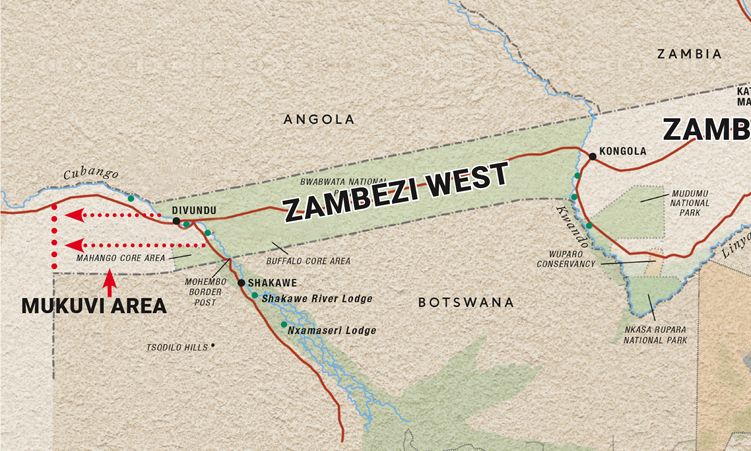
Zambezi residents want Caprivi name back

Traditional leaders call for the removal of the redline

Spy agency wins case against staff member who was paid double salary
Namibia to host world customs organisation regional meetings.

Salesforce is closed for new business in your area.
Rawls College of Business
Master of science in human resource management.
The Master of Science in Human Resource Management (MS-HRM) at Rawls College is a part-time lockstep program designed to meet the strong demand from companies and organizations for human resource professionals to recruit and retain talent in an increasingly tight labor market. The MS-HRM bridges theory with practice in all areas of staffing and performance management, human resource information systems, people analytics, compensation and benefits, leadership and ethics, and others while also providing the business context in which human resource management operates. This program is currently designated THECB Approval Pending.

program highlights
Flexible part-time format, 100% online.
Complete coursework from anywhere with our 100% online curriculum
Optional Synchronous Meetings
Attend synchronous meetings with instructors for more personalized instruction.
Designed for Working Professionals
Apply classroom knowledge directly to your work experience without the need for an internship.
Career-Defining Curriculum
The MS-HRM will help you prepare for professional careers in HRM through in-depth training in areas of HRM specialization with an emphasis on HR analytics. Throughout the program, you will gain an understanding of HRM issues and practices, examine ethical and legal HRM issues, enhance analytical reasoning and project management skills, develop strong communication and relationship management skills, and much more.
Core classes include foundational building blocks for today's business leaders:
Managing Organizational Behavior and Organizational Design
Human Resource Management
Negotiation and Conflict Management Skills
Human Resource Information Systems & Analytics
Employment Law & Labor Relations
Talent Acquisition & Management
Compensation & Benefits
International Human Resource Management
Individual Differences & Belongingness
Strategic Human Resource Management Capstone
program format
The Rawls College MS-HRM is a 30-credit-hour, 10-course program. The 100% online format is designed to be accessible for working professionals, allowing them to apply their classroom knowledge directly to their unique work experience. This is a part-time lockstep program designed to be completed in two years.
View sample degree programs »
Our management faculty members are passionate about helping you achieve your educational and professional goals. Our faculty integrates insights from their own research and professional experiences into the curriculum to ensure you can connect course topics to real-world scenarios.
Meet our faculty »
supporting your success

Rawls Career Management Center
Whether you are looking to switch careers or advance on your current path, the Rawls Career Management Center (CMC) is dedicated to supporting your success. The staff in the CMC can help you explore professions and industries, learn strategic career advancement techniques, and connect you with top employers.

Georgie G. Snyder Center for Business Communication
The Georgie G. Snyder Center for Business Communication (CBC) is dedicated to helping the Rawls College of Business community develop communication skills that lead to academic, professional, and personal success. Through consultations, workshops, microcredentials, and other services, we support Rawls students and faculty in “achieving excellence in business through excellence in communication.

Techsan Connection
The Techsan Connection is a free, online platform for Texas Tech alumni. Through the platform, alumni can apply to jobs, reconnect with fellow classmates, network with industry professionals and volunteer to mentor current students.
The admission process is the first step toward earning your degree. We will work closely with you to ensure your application process is personal, simple and successful.
Admission Requirements
Successful MS-HRM students come from all educational backgrounds but must have a bachelor's degree. Our program is designed to meet the needs of professionals looking to expand their skills within HRM.
A complete application consists of the following items to be received by the noted deadlines:
Unofficial Transcripts
Applicants must submit unofficial transcripts from any degree-awarding college or university, as well as any post-secondary institution attended.
Applicants must submit a detailed current resume, indicating professional work experience—including start and end dates (month and year) for each position held. Provide accomplishments and skills acquired, including managerial experience.
Letter of Recommendation
Applicants are required to submit a letter of recommendation. The letter should provide specific examples and anecdotes that illustrate your professional and/or academic potential.
Applicants must write an essay outlining their personal experiences, career goals, past challenges, any other relevant information they'd like the admissions committee to consider.
Application Deadlines
This program is pending approval by The Texas Higher Education Coordinating Board (THECB). The initial application period will open once program is approved.
There's no better time to apply for the MS-HRM program. Applications are accepted on a rolling basis.
student resources
- Prospective Students
- Current Students
Program Questions
Junior Perez 806.834.4575
[email protected] 806.742.3184

Events@Rawls
Professional mba weekend classes.
Saturday, June 1, 2024 - Sun , June 2, 2024 (all day)
Where: Rawls College of Business
Saturday, June 29, 2024 - Sun , June 30, 2024 (all day)
Where: Center for Business Communications Room 139
Saturday, July 20, 2024 - Sun , July 21, 2024 (all day)
Contact TTU
- Like Rawls College of Business on Facebook Like Rawls College of Business on Facebook
- Follow Rawls College of Business on X (twitter) Follow Rawls College of Business on X (twitter)
- Subscribe to Rawls College of Business on YouTube Subscribe to Rawls College of Business on YouTube
- Follow Rawls College of Business on Flickr Follow Rawls College of Business on Flickr
- Follow Rawls College of Business on Instagram Follow Rawls College of Business on Instagram
- Connect with Rawls College of Business on LinkedIn Connect with Rawls College of Business on LinkedIn

IMAGES
VIDEO
COMMENTS
By understanding these and other potential costs, you can develop a budget in your business plan. For more in-depth financial considerations, you should develop forecasts to gauge costs, future cash flow, and how your app company might grow and change over time by hitting release and growth milestones. 5. Development milestones.
Here you go, download our free mobile app business plan pdf, and start writing. This intuitive, modern, and investment-ready template is designed specifically for mobile app businesses. It includes step-by-step instructions & examples to help in creating your own mobile app business plan.
7 - Use your business plan to secure app funding. Once you have your business plan, it's time to use it as a tool to get you the funds you need to develop your app. Choosing the right funding source depends on your app's stage, funding needs, and the trade-offs you're willing to make in terms of control and equity.
Mobile App Business Plan. Over the past 20+ years, we have helped over 5,000 entrepreneurs and business owners create business plans to start and grow their mobile app development company. On this page, we will first give you some background information with regards to the importance of business planning. We will then go through a mobile app ...
In this article, we've got the whys and the hows of your mobile app startup business plan, as well as a handy template to follow. Download: Mobile App Business Plan Template. First, though, in case you're in need of a little push, here's a little motivation. Do you Really Need a Mobile App Business Plan? The short answer to this is: yes.
Instead, consider creating a business model canvas. A business model canvas is a more focused and agile form of the traditional business plan. One of its advantages is that it can more easily ...
Writing a business plan for a mobile application includes thorough research into the mobile app market, calculating the costs of development, as well as choosing the right monetization strategy. Besides that, work out marketing strategies and conduct a risk analysis to create a professional business plan. 3.
A mobile app business plan for a massive product with international presence may well run into hundreds of pages, while an average startup is unlikely to go over 50 pages. When writing a mobile app business plan, you should always consider the target audience. Keep everything informative but concise — otherwise, you run the risk of losing the ...
Writing a Successful Business Plan For Your Mobile App Business + Template. If you're looking to start or grow a mobile app business, you need a business plan. Your plan will outline your business goals and strategies, and how you plan on achieving them. It will also detail the amount of funding you need, and if needed, present a case to ...
Create a mix of both online and offline marketing methods. Focus on creating a solid value proposition for your app. Allocate a realistic budget for marketing. Have a plan for how you will track the success of your marketing efforts. 5. Outline Your Development Costs. The next step is to outline your development costs.
Business description. Introduce your company in this part, beginning with corporate information and ending with your mobile app concept. This part of your startup business plan will show investors the corporate values of your company, your mission, product vision, and the fundamental factors for your startup success.
2. Brainstorm a mobile app name. Before you move to complex parts and start development, finalize the name of your mobile application. However, finding the right name is a struggle in itself. Now, if you are already operating as a successful business, launch your app with the same name.
Our sample mobile app business plan includes the key elements to help you create your own successful mobile app business plan. Skip to content ... and scalability to achieve lasting success. Financial Plan. To achieve our growth objectives, AppInnovate Solutions requires $316,000 in funding. This investment will be allocated towards capital ...
Those are 2 primary questions your app business plan should answer. Include the following components to make your triumph inevitable. Section 1. Executive Summary. This is the introduction to your business plan. This is the first thing your potential investor will see when becoming acquainted with your idea.
A business plan is filled with facts, figures, and indicators. It must be presented in a structured format, to make easy to read and digest. When we built our business plan for a mobile app, we took care to arrange it appropriately. The content is arranged in 5 sections (Opportunity, Project, Market Research, Strategy and Finances). 1.
Builds Confidence: Having a solid plan instils confidence in investors, partners, and stakeholders, increasing the likelihood of success. Having a business plan for mobile app startup proves to be an essential strategy for your startup success as it helps you define several vital aspects of your app: App vision.
Our free mobile app business template is an essential resource for entrepreneurs and startups looking to develop a successful mobile app. With its comprehensive market research, business models, revenue projections, and marketing plan sections, you can create a detailed plan that sets your app up for success. Download our template now and start ...
In this section, the mobile app business plan shifts from what you believe your app business is, to the hard data that proves your business is viable and that. there is actually a need and demand for your solution. Analyze your market through secondary research, industry surveys, market reports, and most importantly, first-hand primary research.
Write the details of your startup. It should give a reader details like the company name, location, headquarters, team size, hierarchy, etc. The mission statement of your firm should specify its goals. Also, list the main problems and the likely answers your startup may provide.
A plan, and a method for comparing your plan to your actual results, is the tool you need to steer your business toward success. Learn More: How to run a regular plan review. ... Noah is the COO at Palo Alto Software, makers of the online business plan app LivePlan. He started his career at Yahoo! and then helped start the user review site ...
Traditional business plans use some combination of these nine sections. Executive summary. Briefly tell your reader what your company is and why it will be successful. Include your mission statement, your product or service, and basic information about your company's leadership team, employees, and location.
Describe Your Services or Products. The business plan should have a section that explains the services or products that you're offering. This is the part where you can also describe how they fit ...
Take The First Step Towards Success With our AI-Generated Business Plans. Plannit.ai is an AI-driven business planning platform that helps entrepreneurs, business owners, students and business consultants create professional business plans in minutes. Answer questions about your vision and generate a full professional business plan.
A customer response to this company-initiated message turns into a conversation. Any outbound messages sent from the business during this conversation (within a 24-hour period) do not count as a WhatsApp Outbound Message, but instead a Channel Conversation (25 SMS or Whats App inbound conversations are included in the Digital Engaagement SKU).
With over 18 million downloads in more than 150 countries, Hallow has quickly become the world's most popular prayer app, and it became the first-ever prayer app to reach No. 1 in Apple's App Store in the United States. Since 2022, Franciscan University has partnered with Hallow as a Champion University partner.
In the realm of business, the saying "fail to plan, plan to fail" echoes profoundly. At the core of every successful enterprise lies a well-defined strategy that serves as a guiding light ...
Salesforce Cost for Small Business is structured to provide maximum value for your investment. Discover the pricing plans that best suit your business needs. ... select the Success Plan that's right for you. Get the right level of expert guidance and support. ... Scale and innovate with pre-built apps and expertise on AppExchange. Visit AppExchange
Power utility Eskom says that its Key Revision Number rollover project is "progressing well" and is on track, with 3.61 million or 52% of the 6.9 million prepayment meters already recoded as ...
Georgie G. Snyder Center for Business Communication. The Georgie G. Snyder Center for Business Communication (CBC) is dedicated to helping the Rawls College of Business community develop communication skills that lead to academic, professional, and personal success. Through consultations, workshops, microcredentials, and other services, we ...
All Project Plan 3 and above users can leverage this feature by launching the new Planner app in Teams and then proceeding with the following steps: Setting Your Baseline: If you haven't set a Baseline yet, simply navigate to the Baseline button and select "Create baseline". Voilà! Your project's Baseline is recorded. Capture Baseline